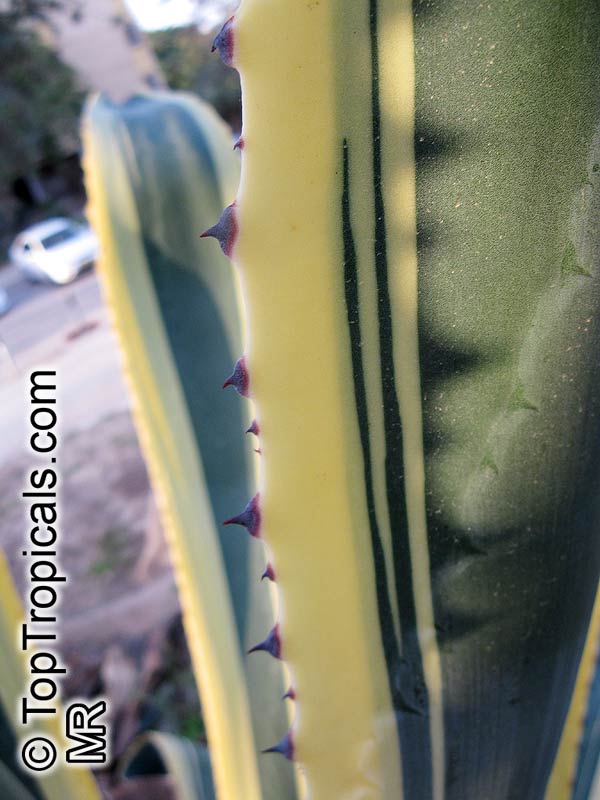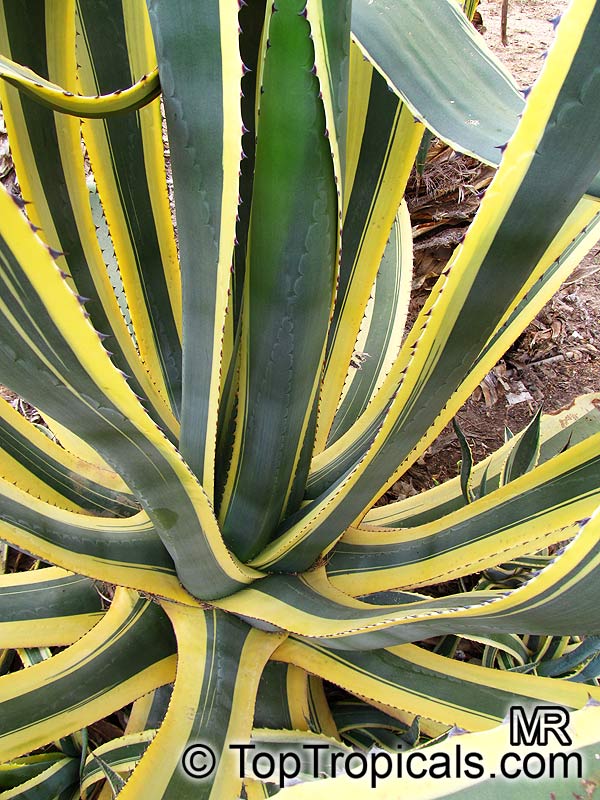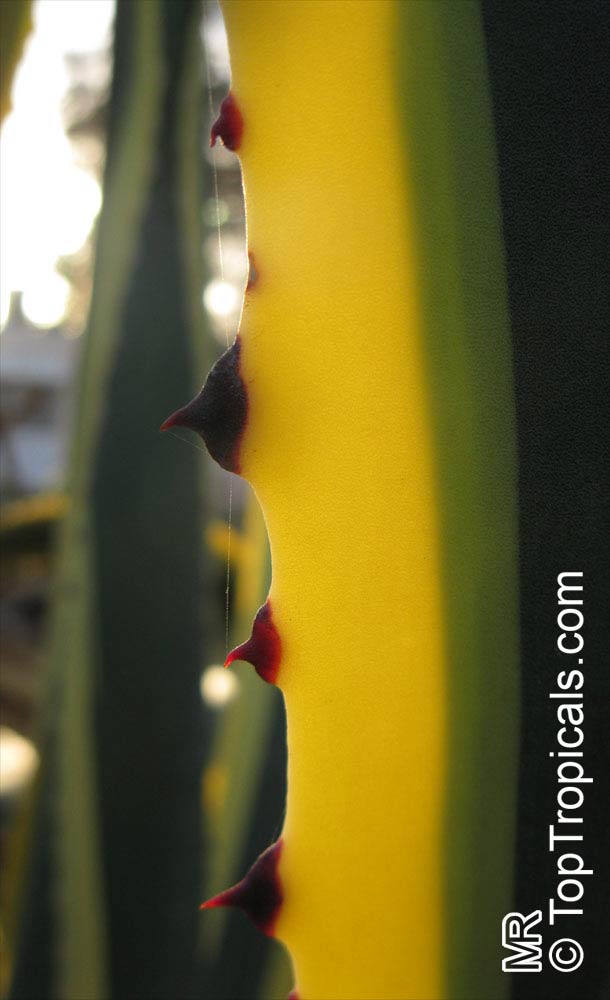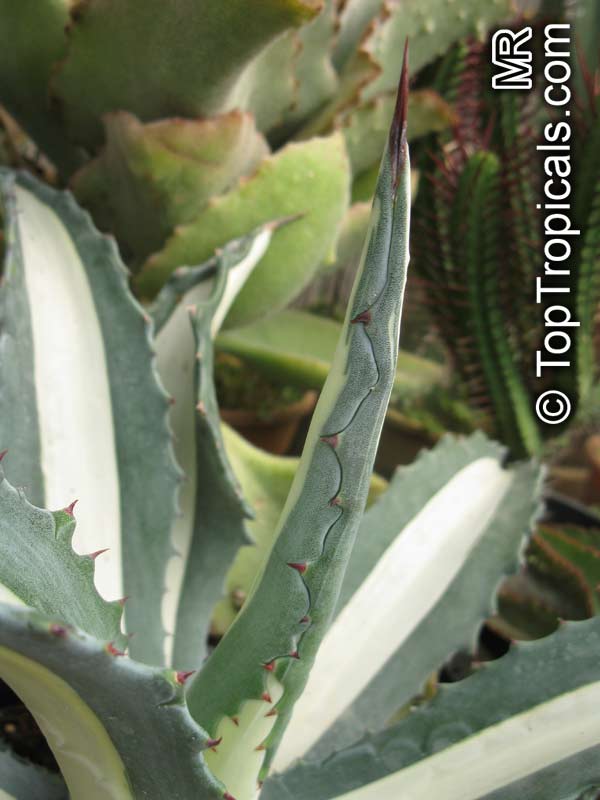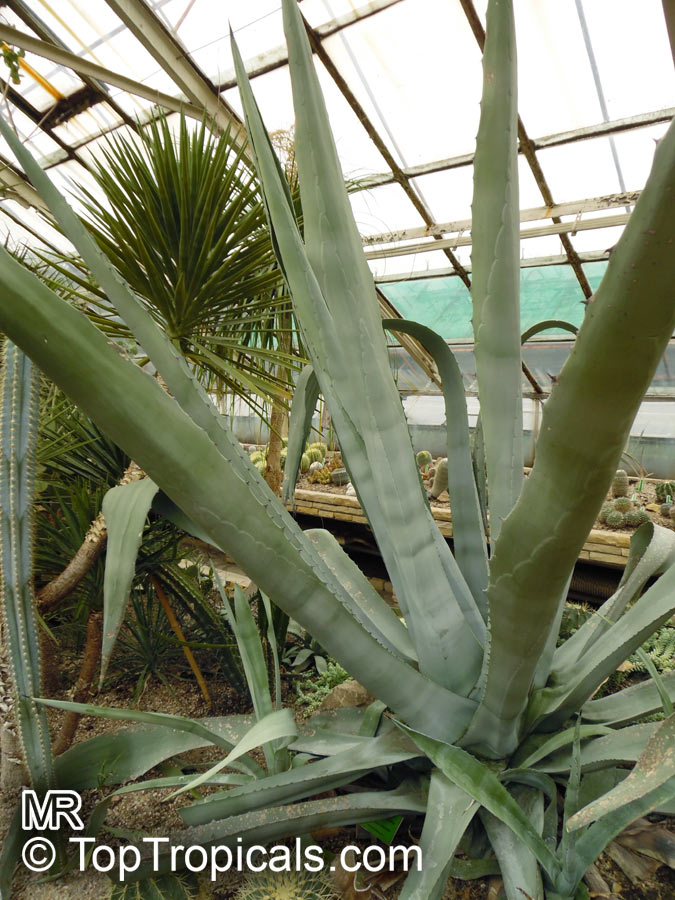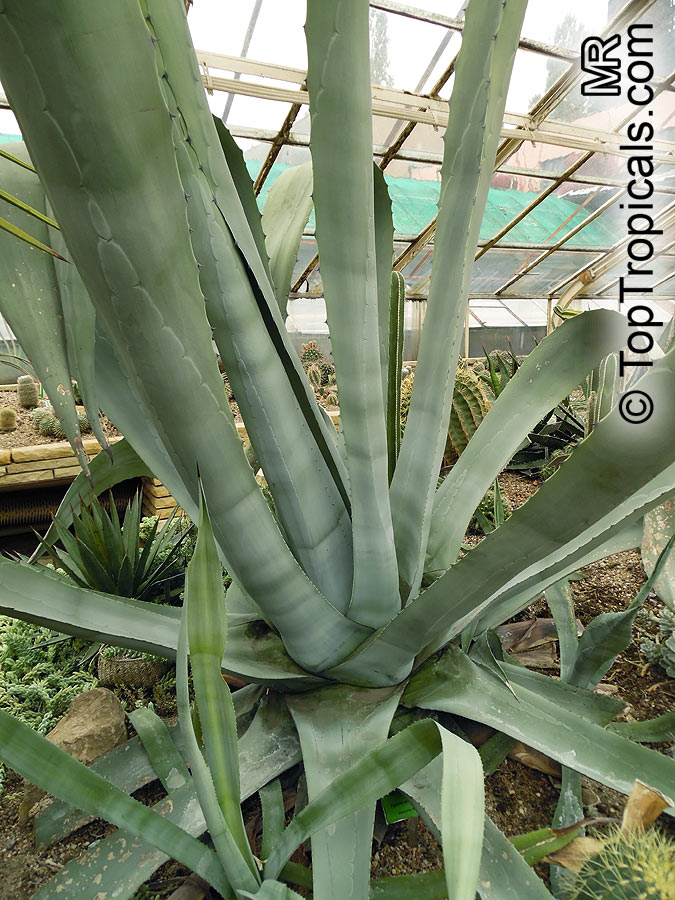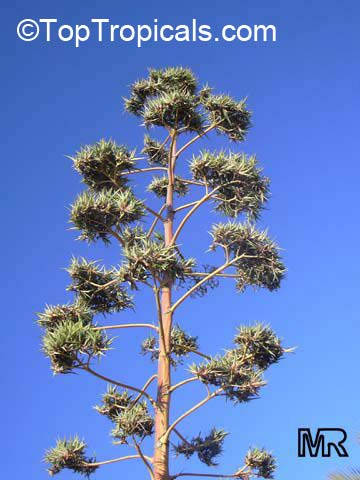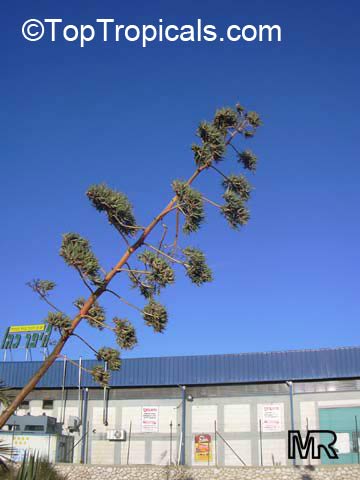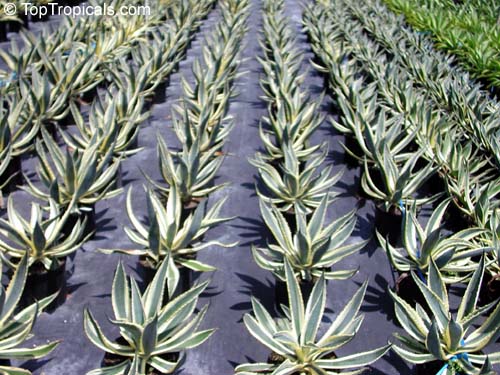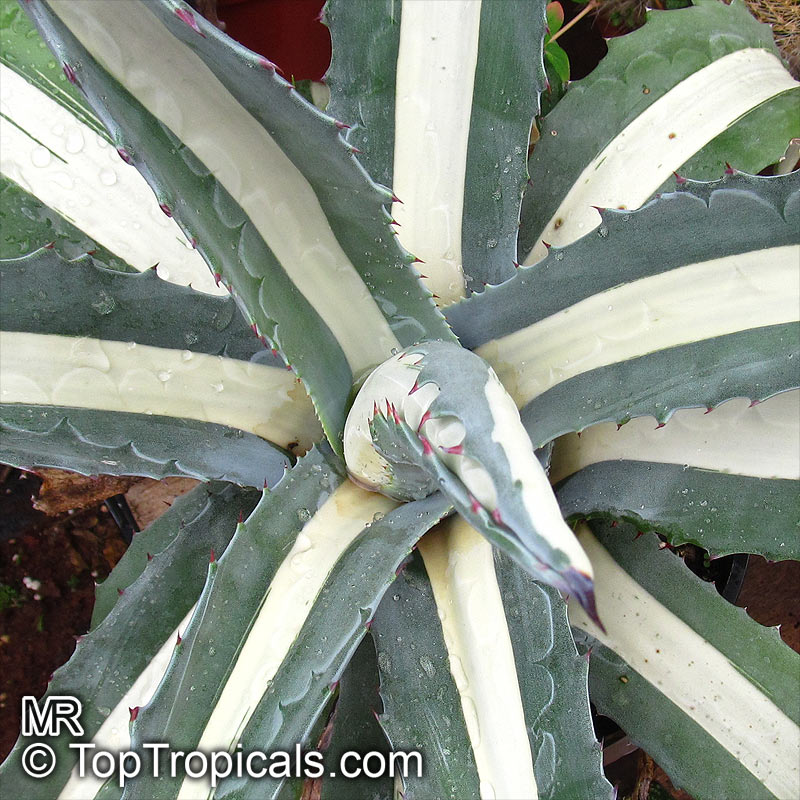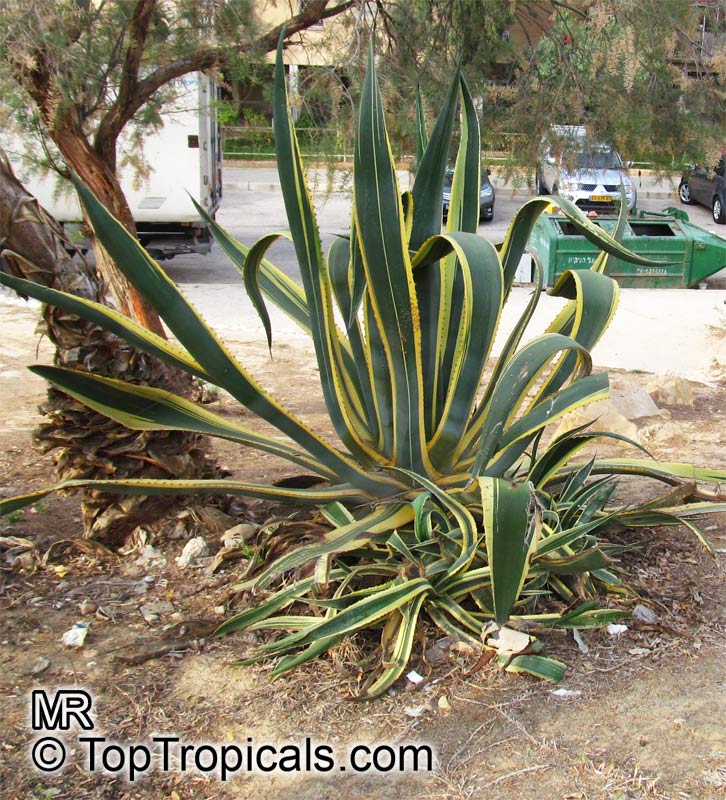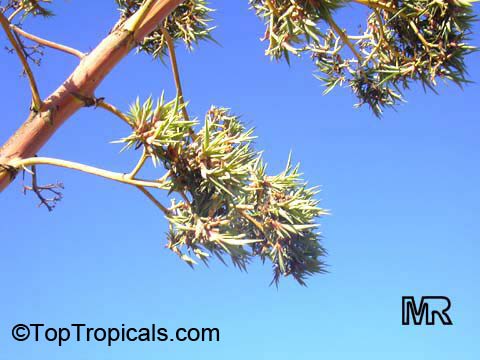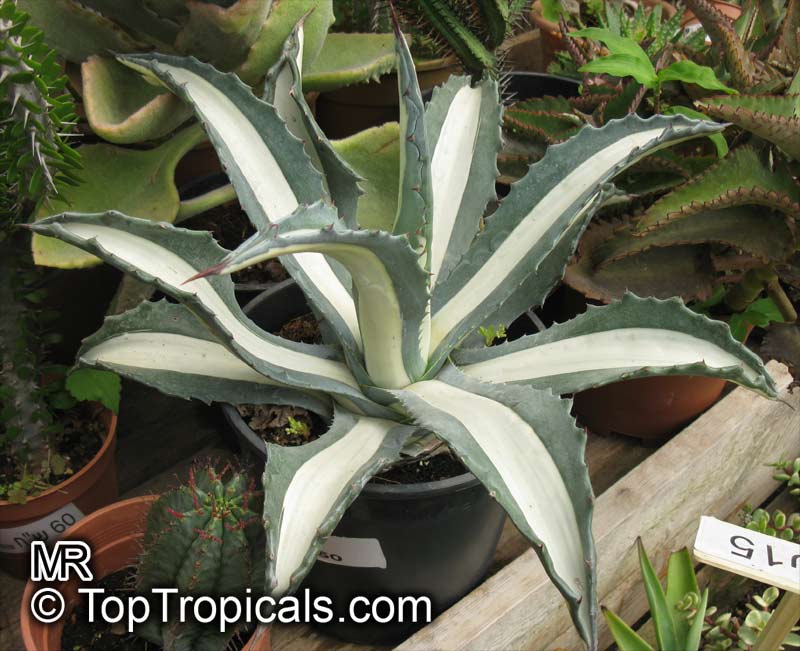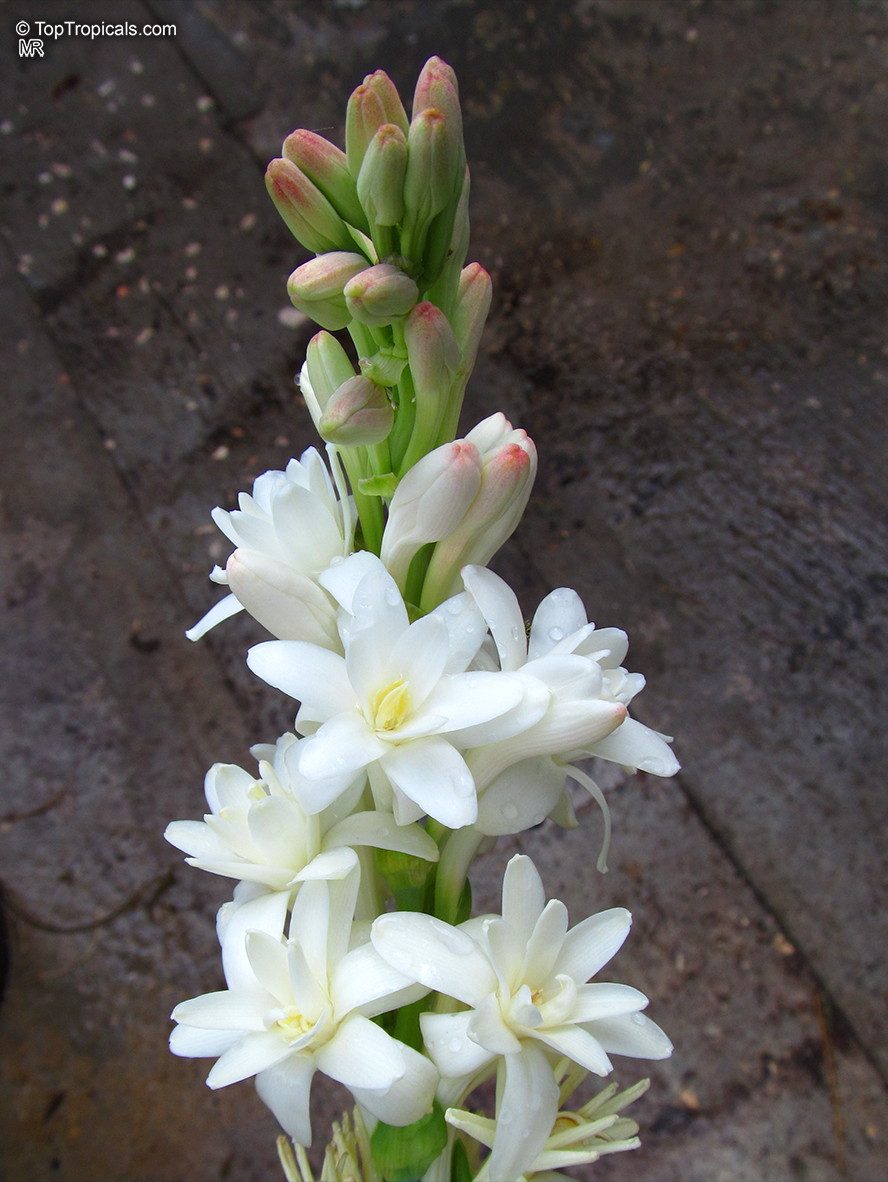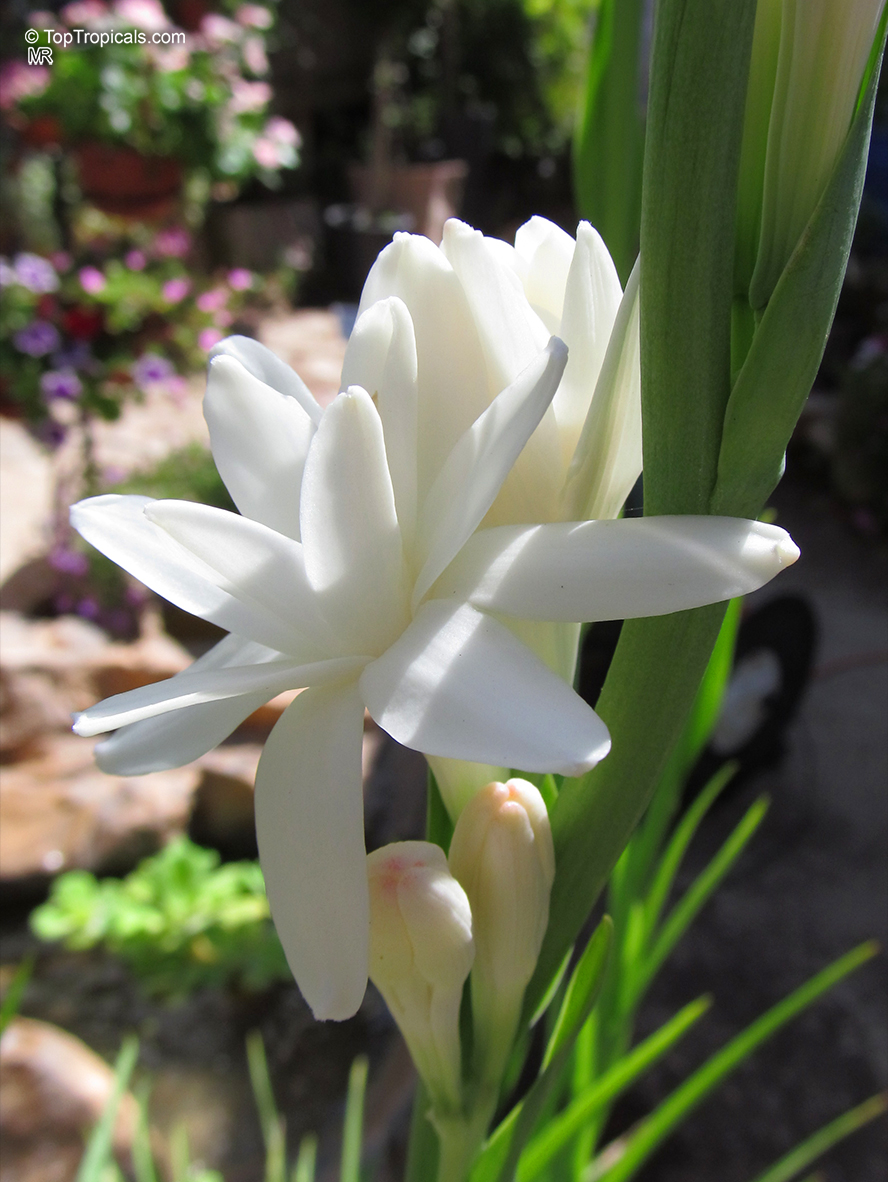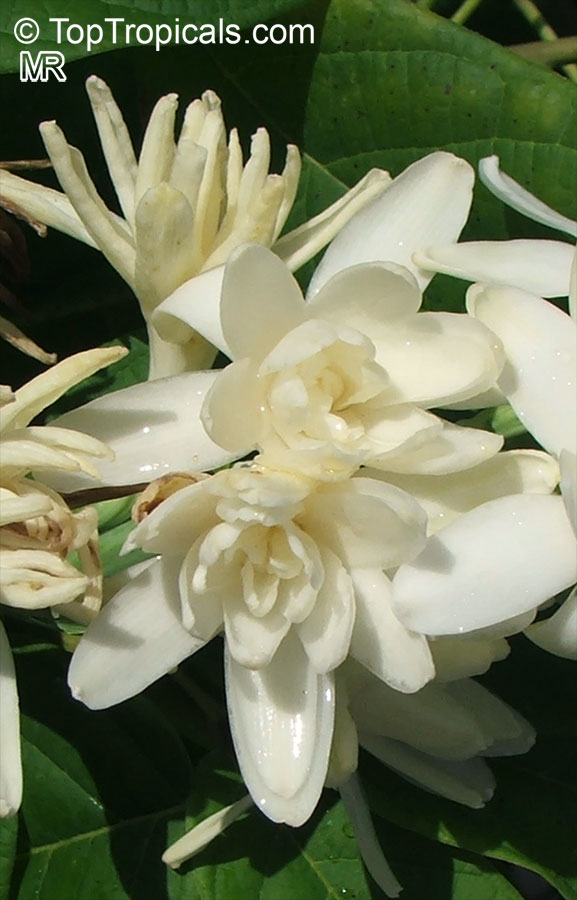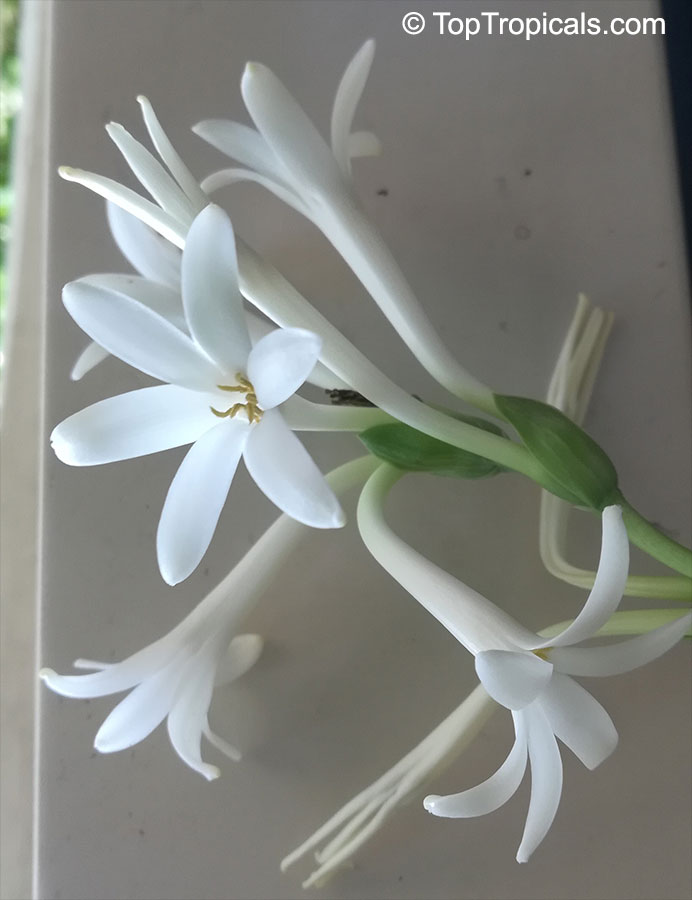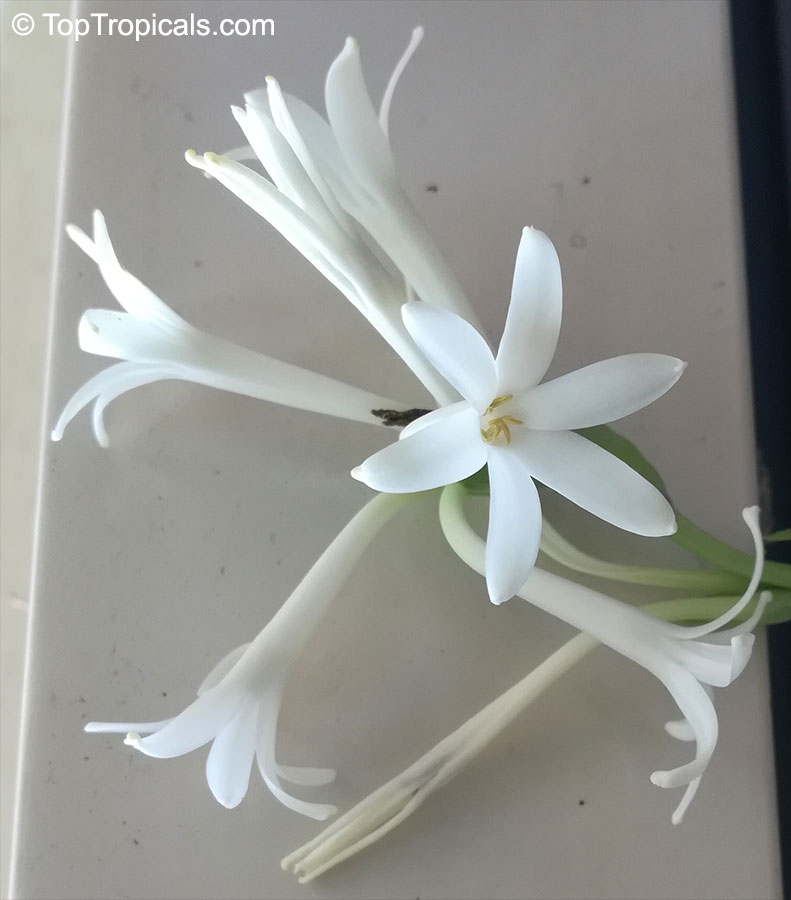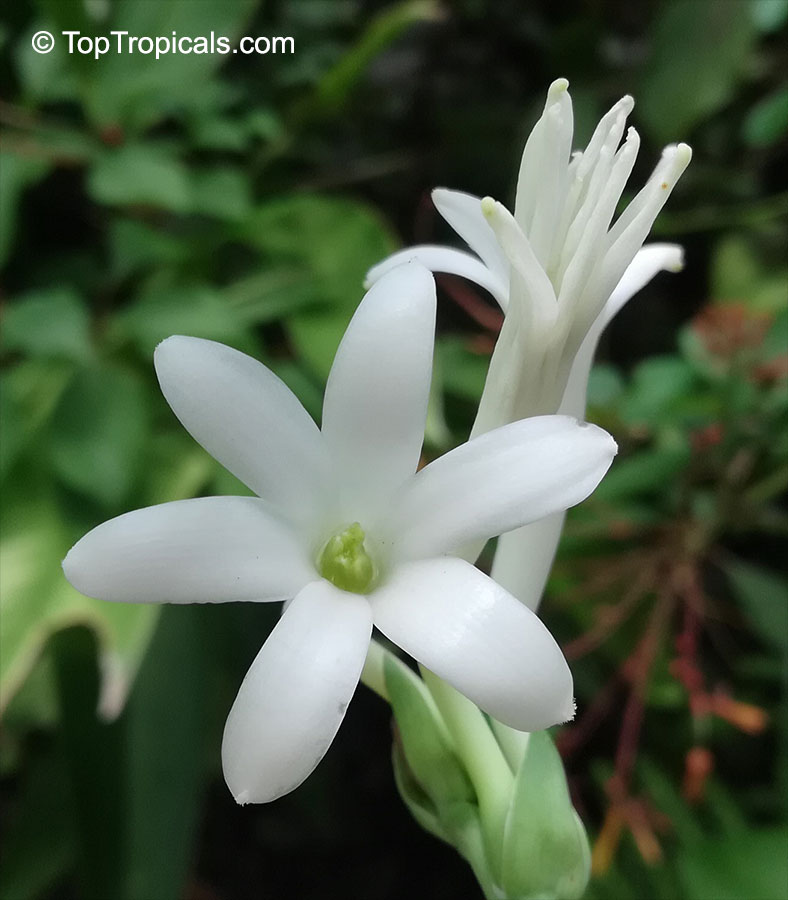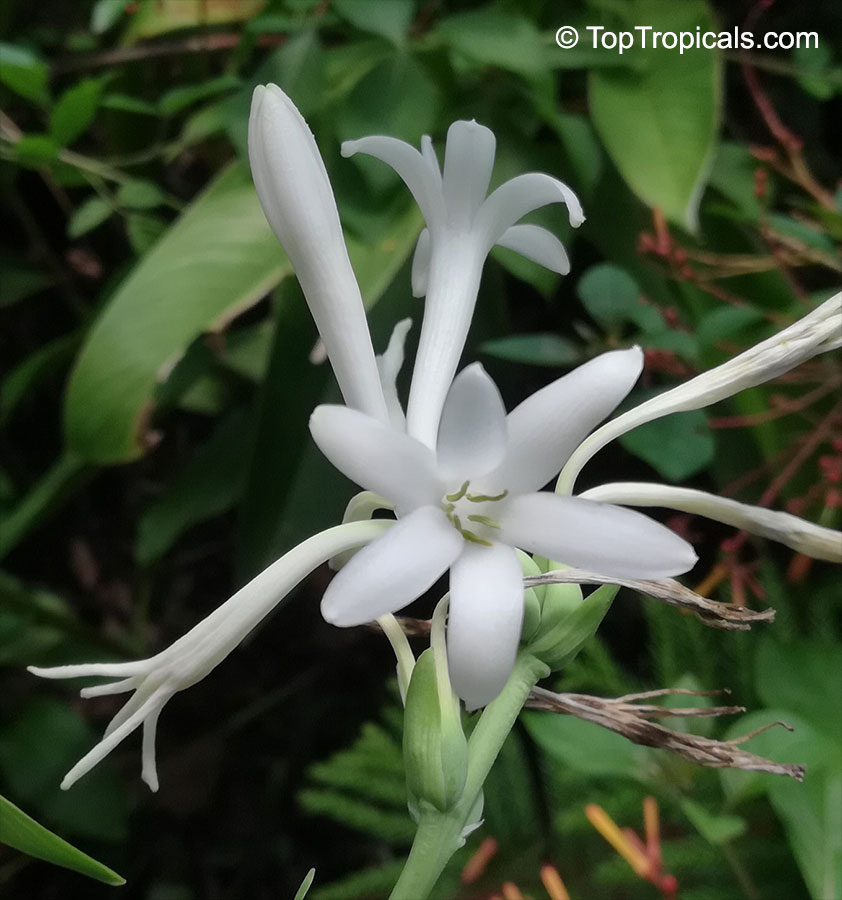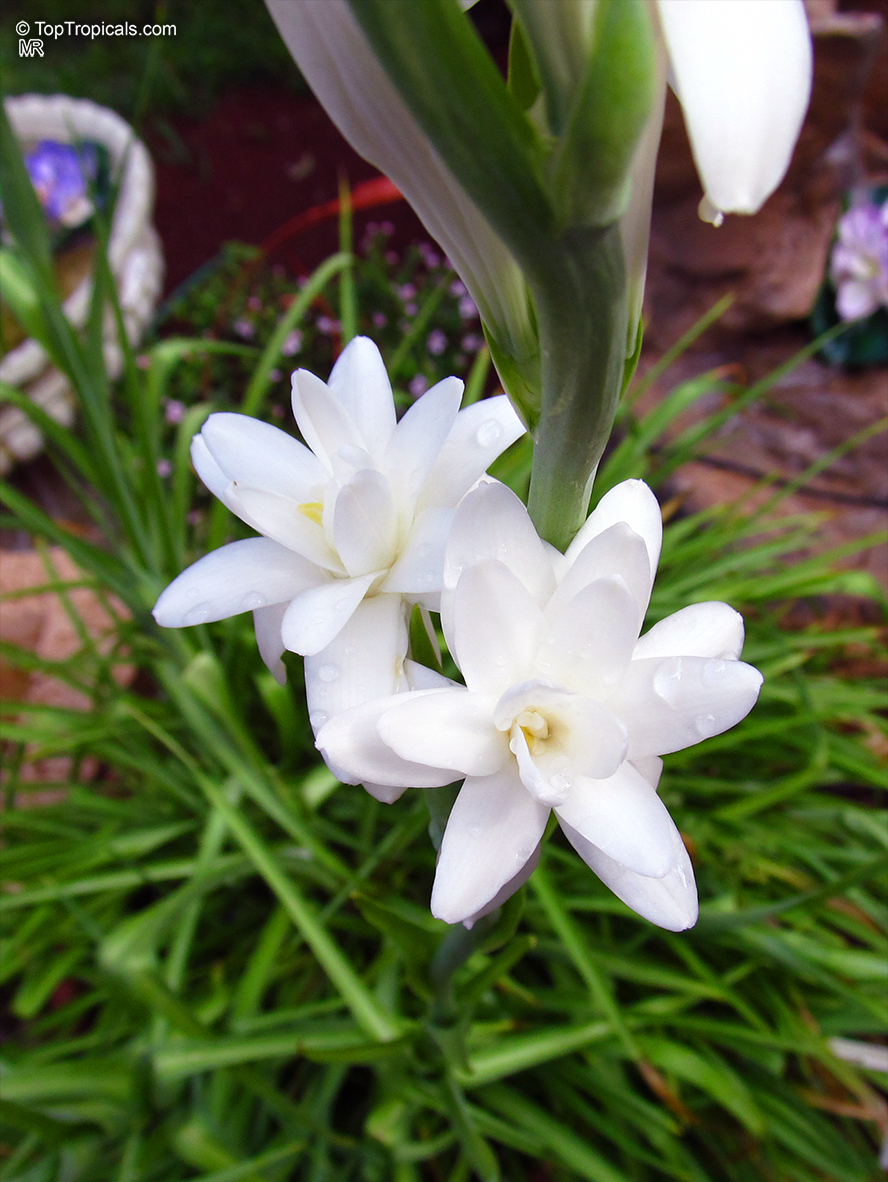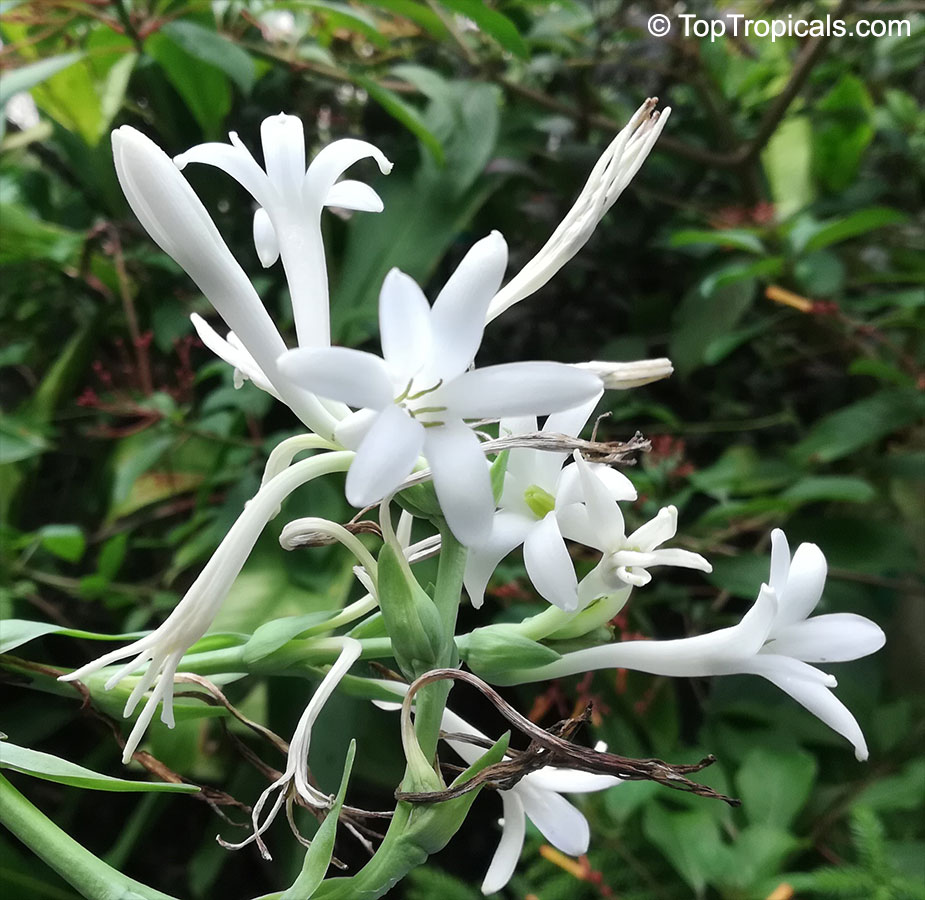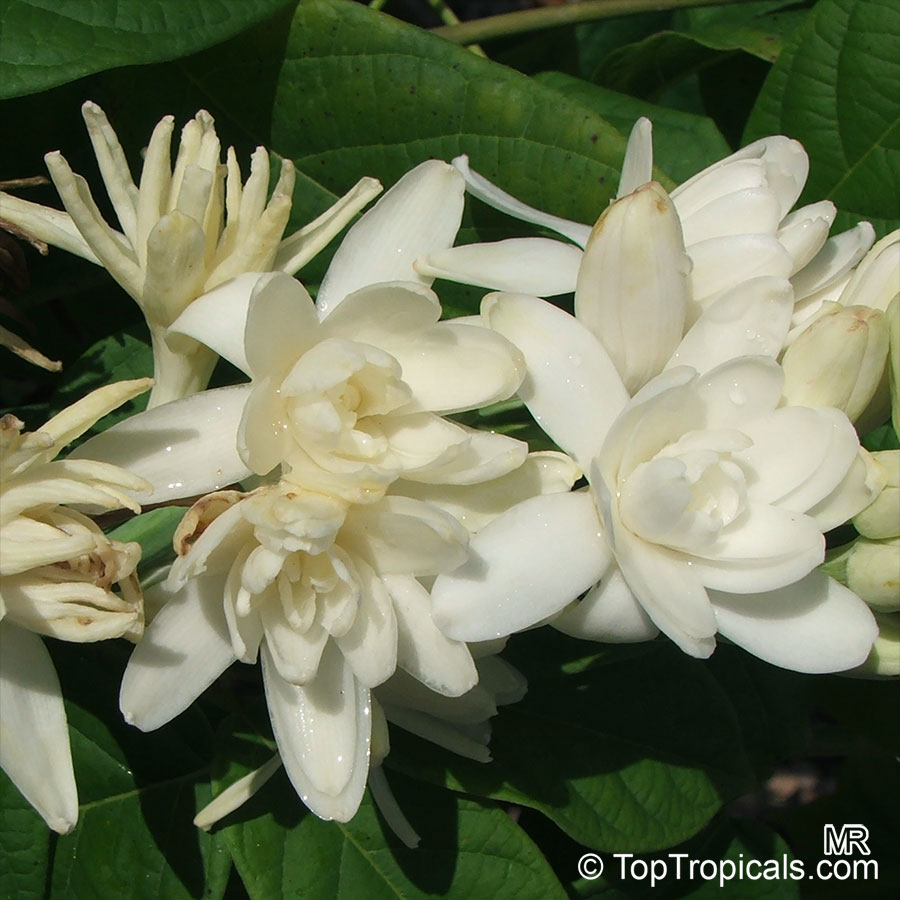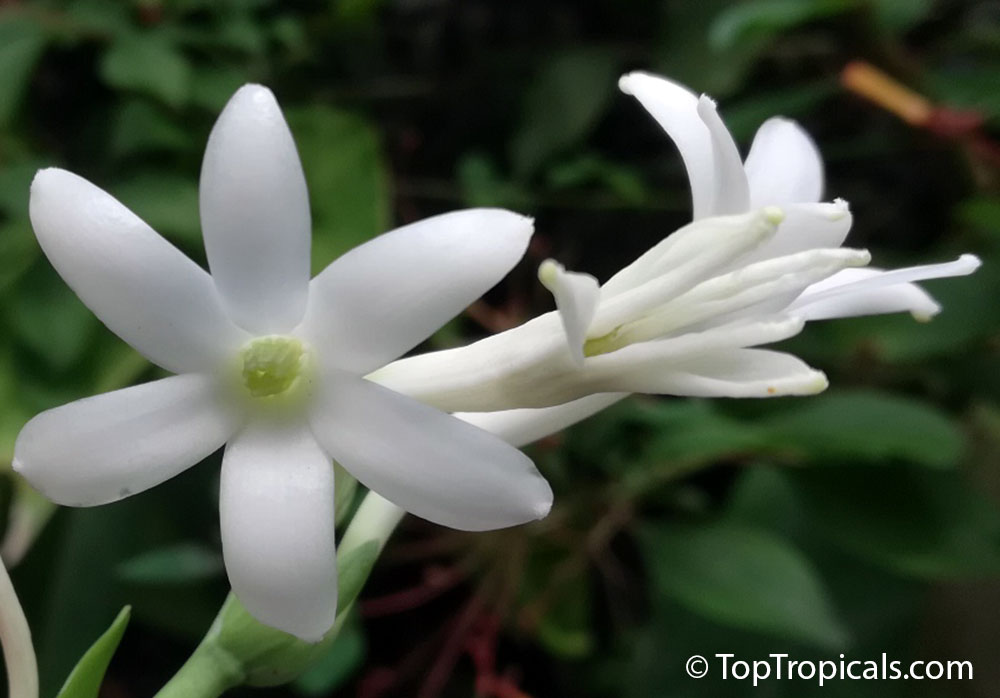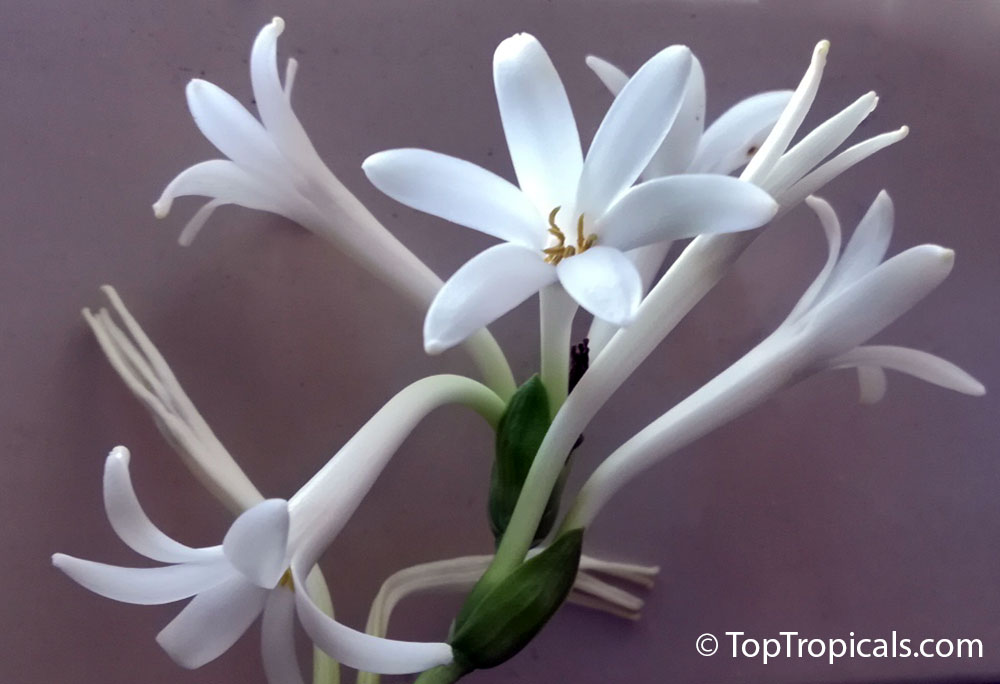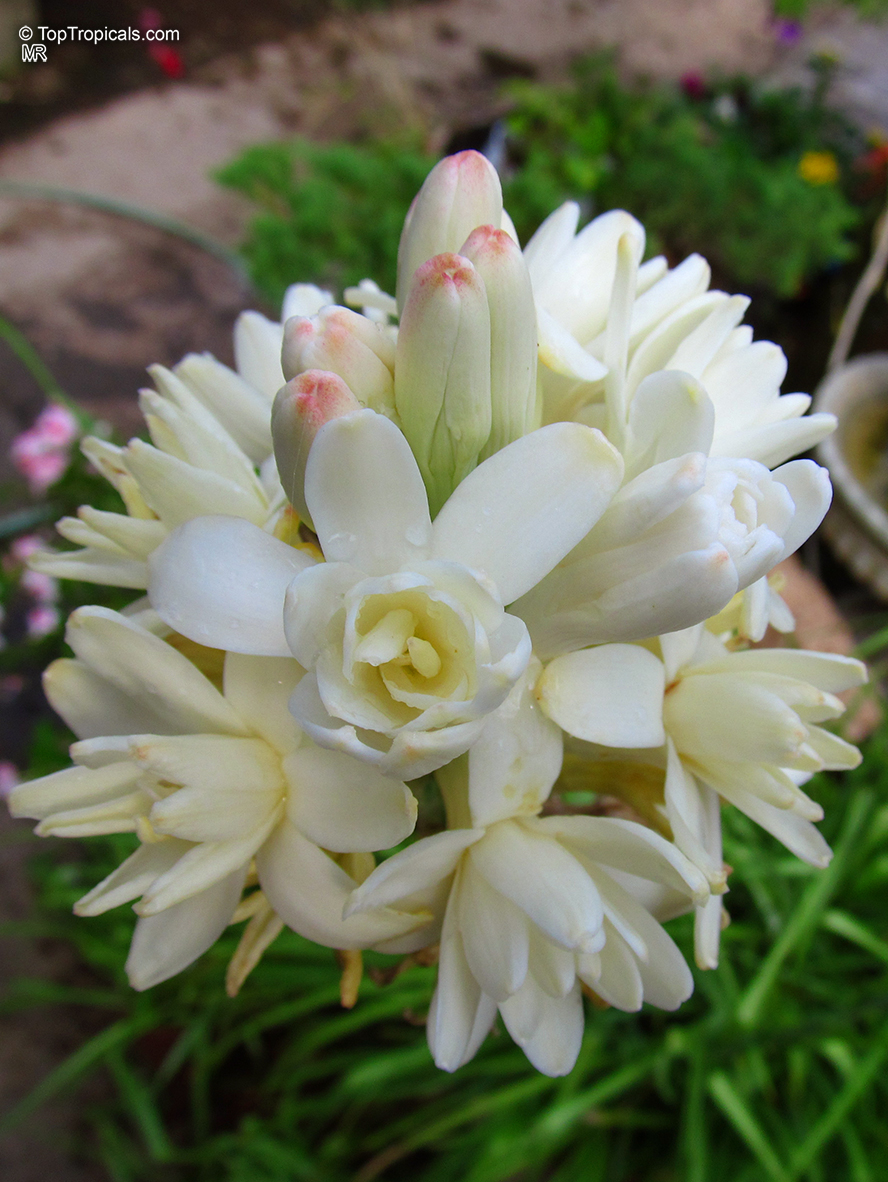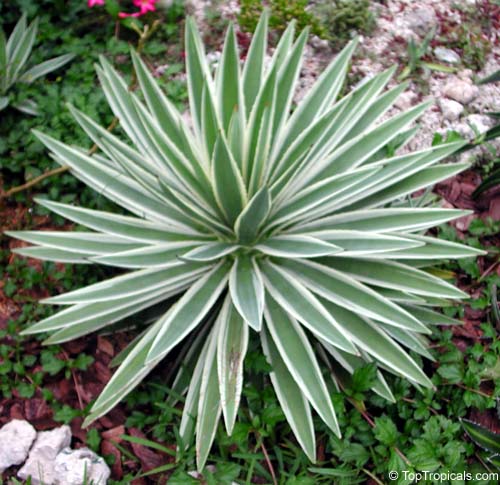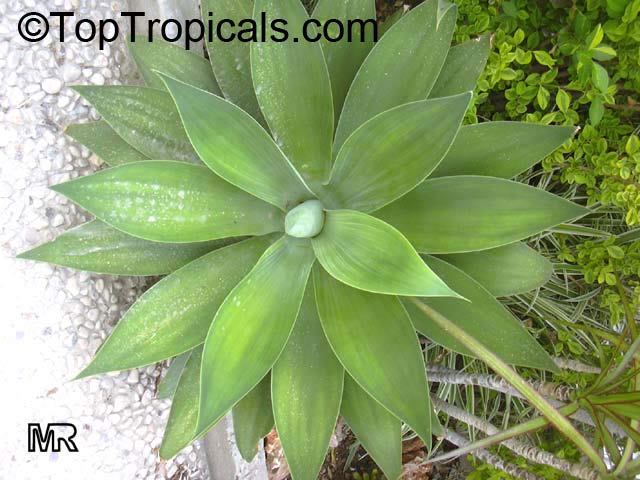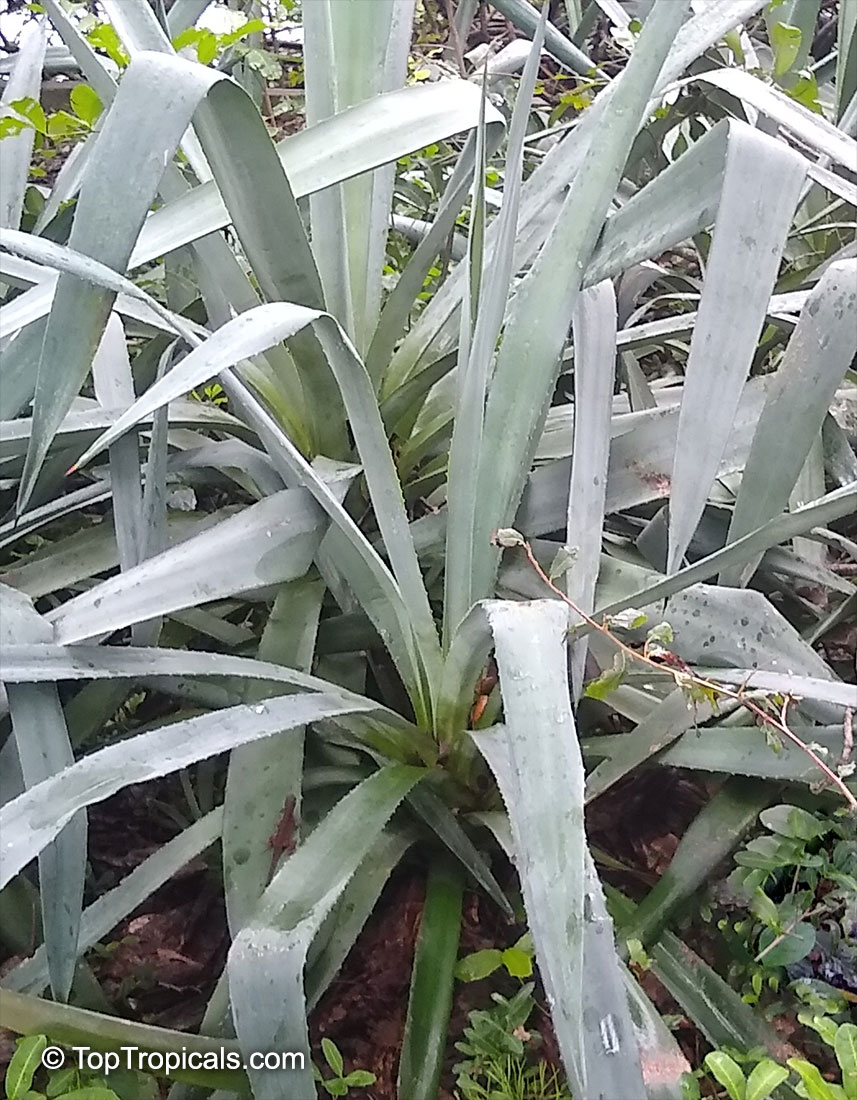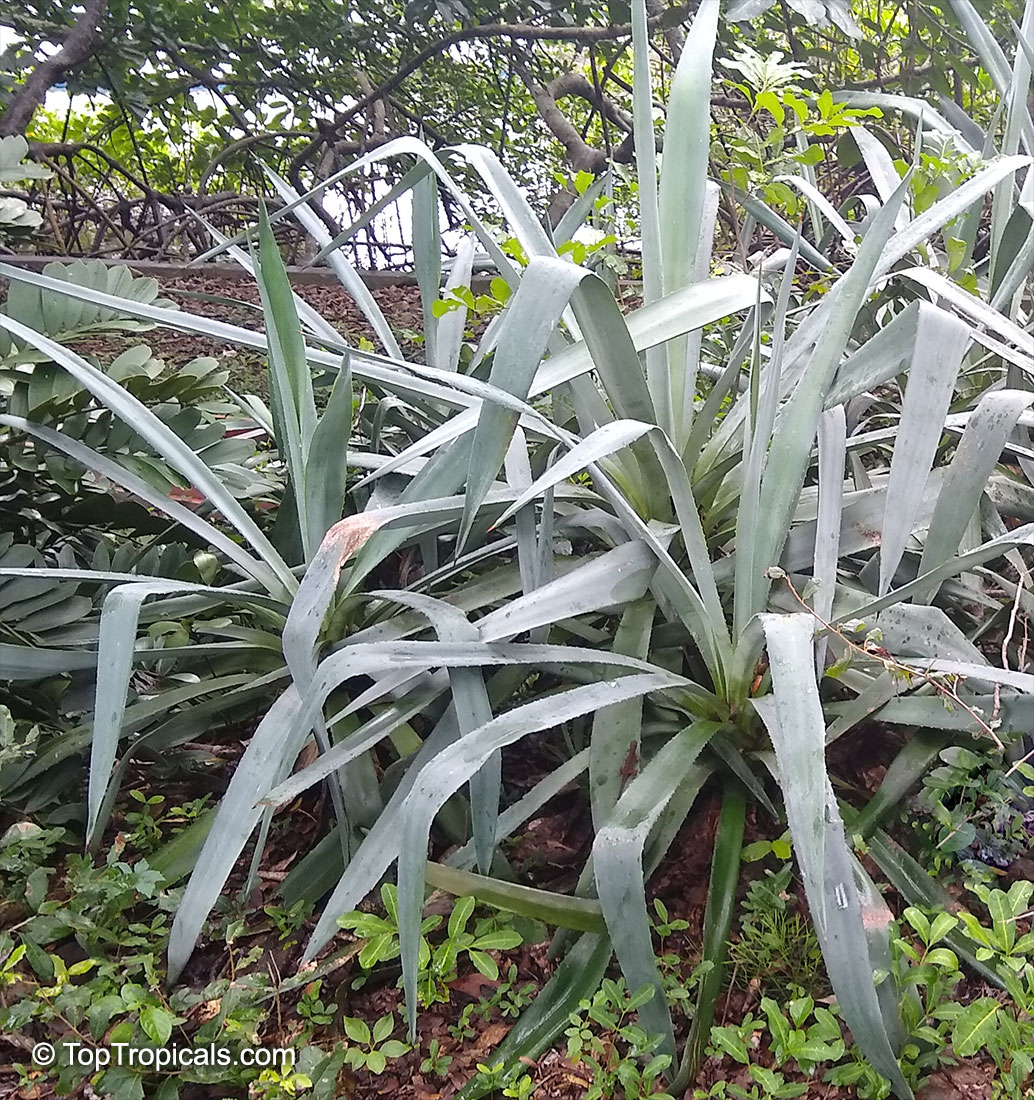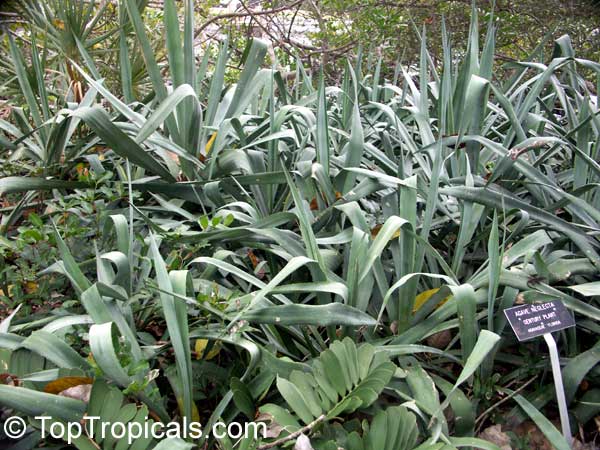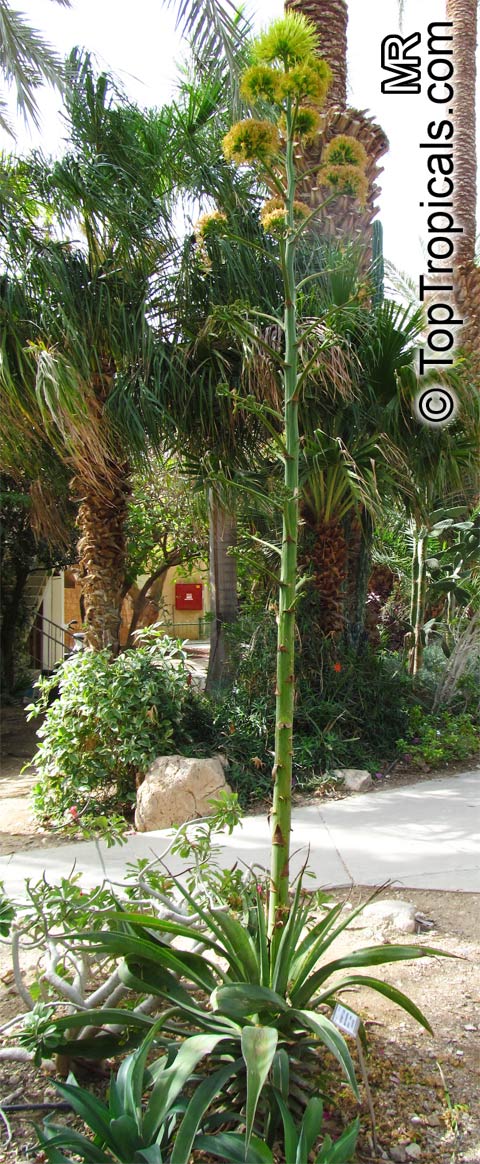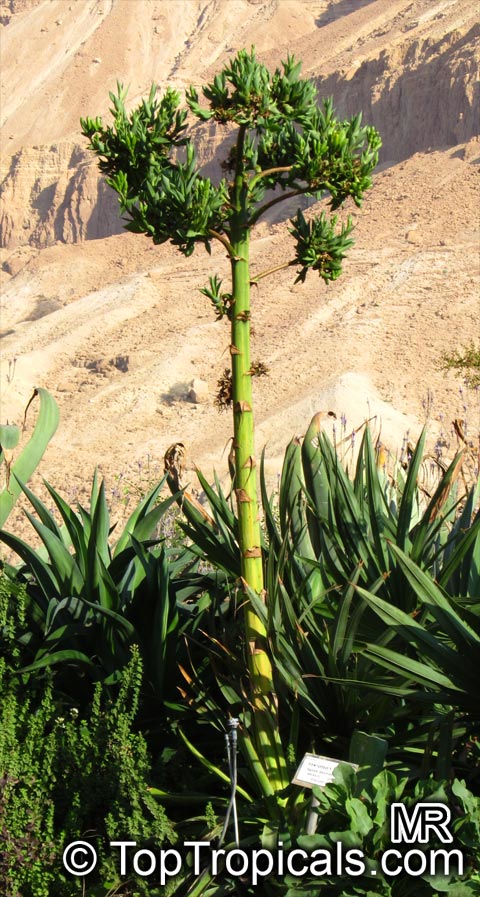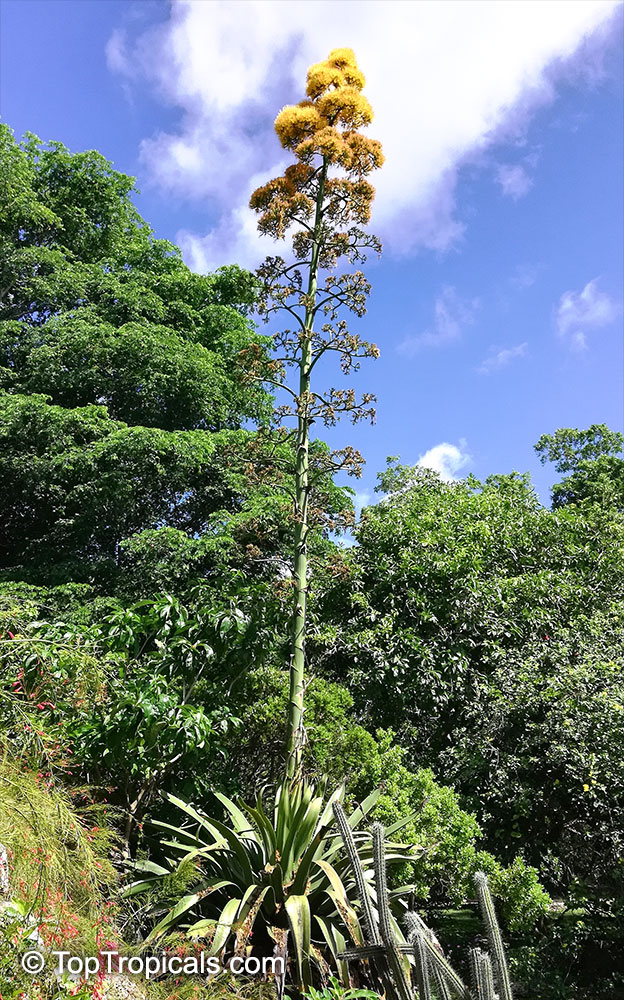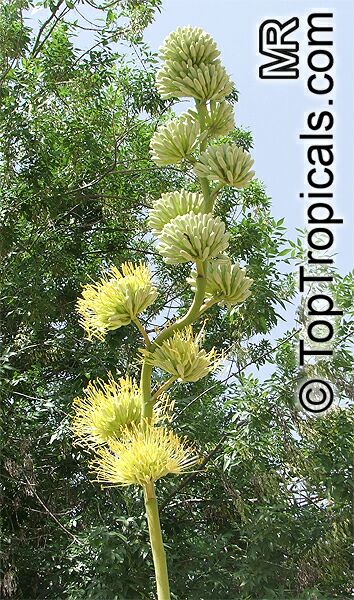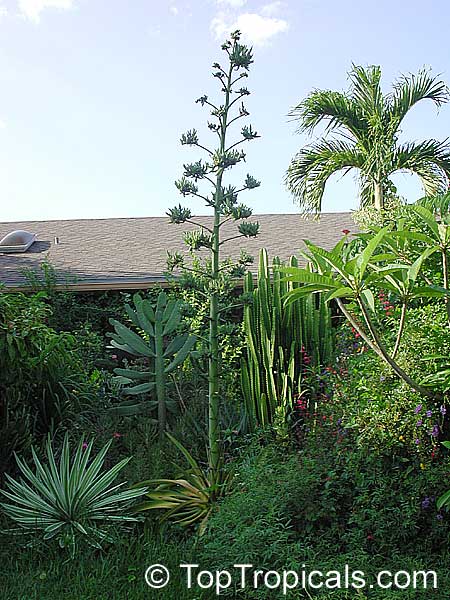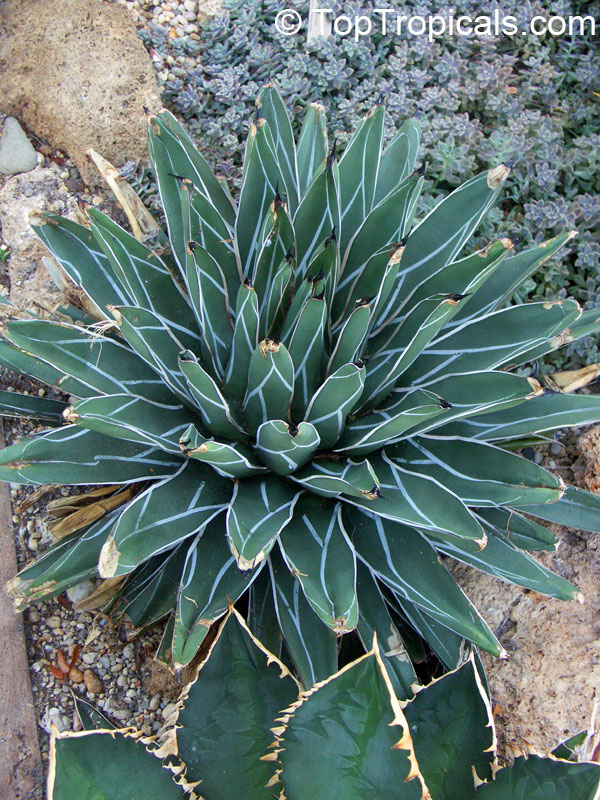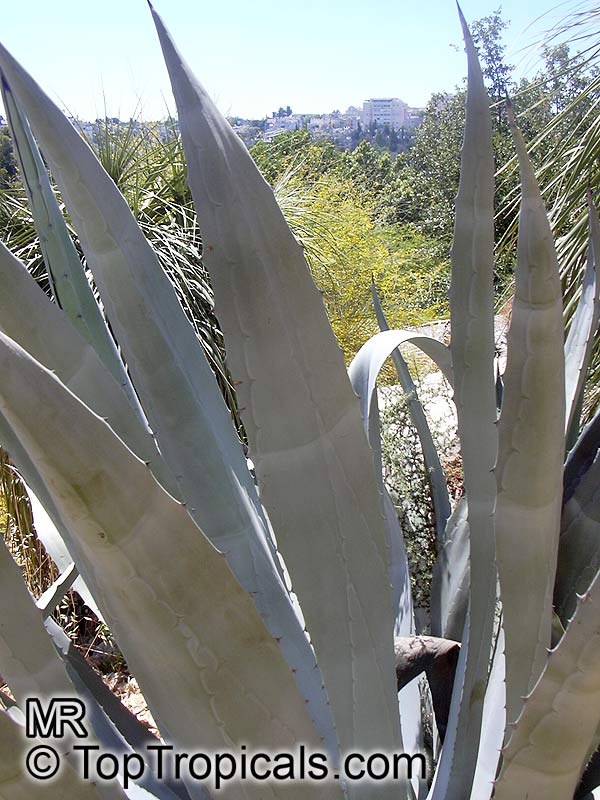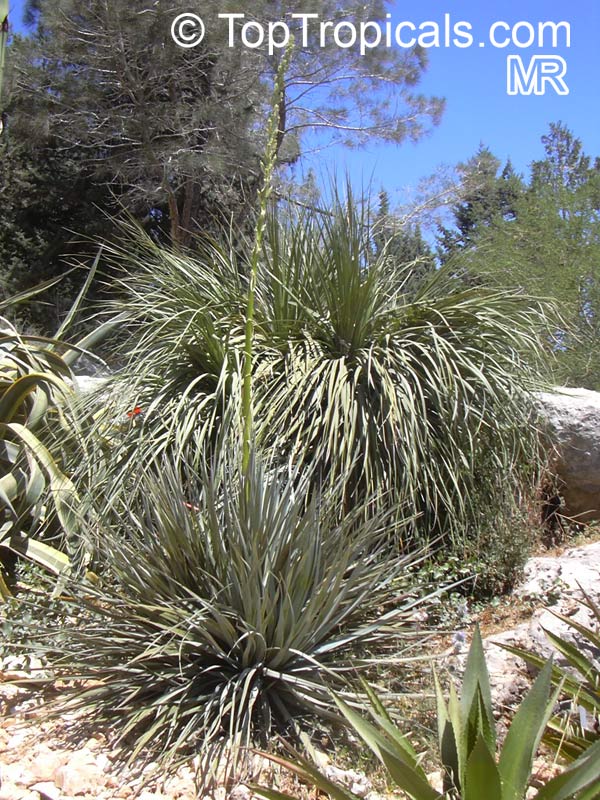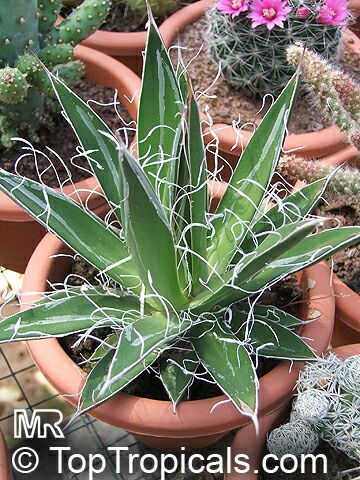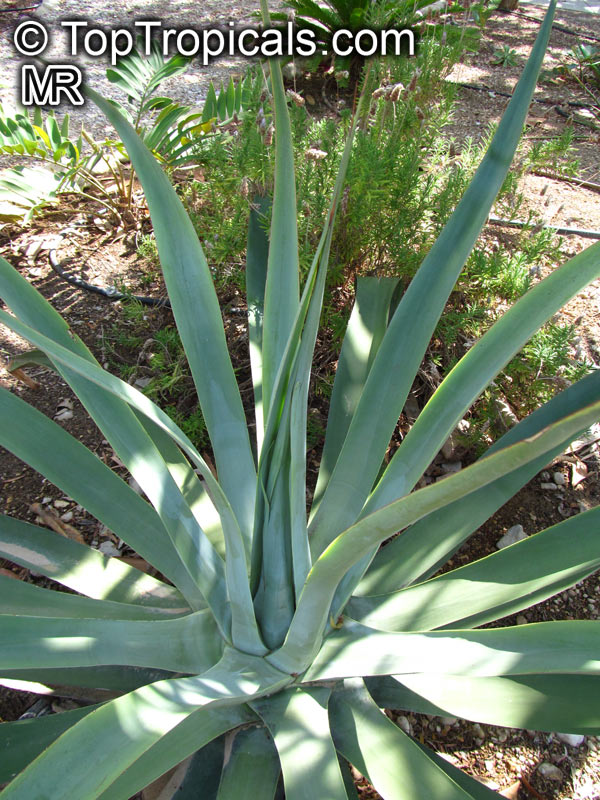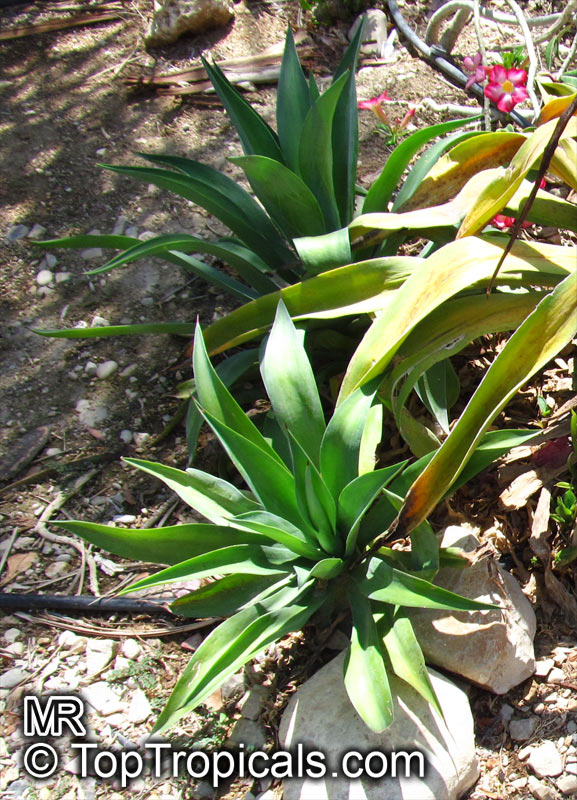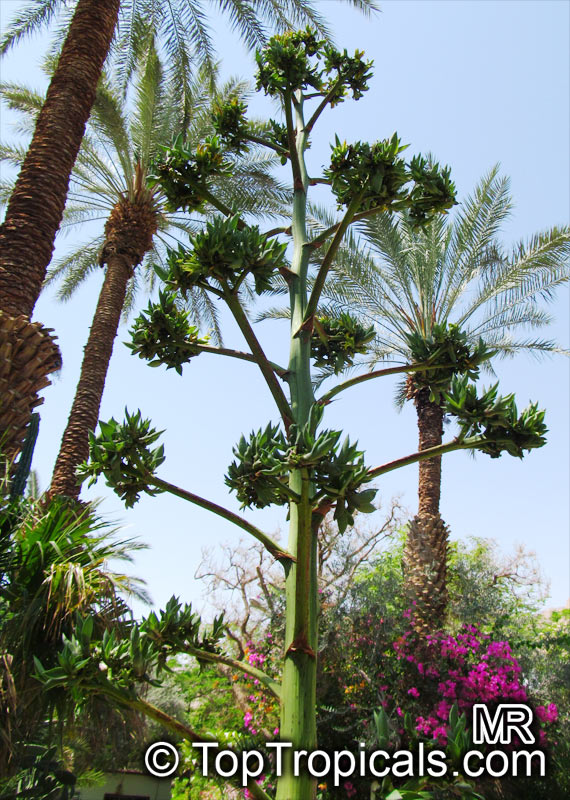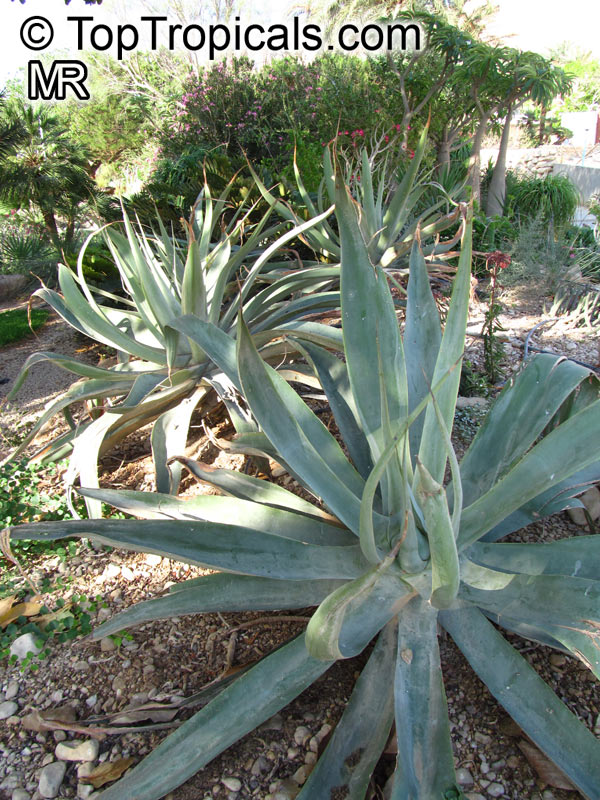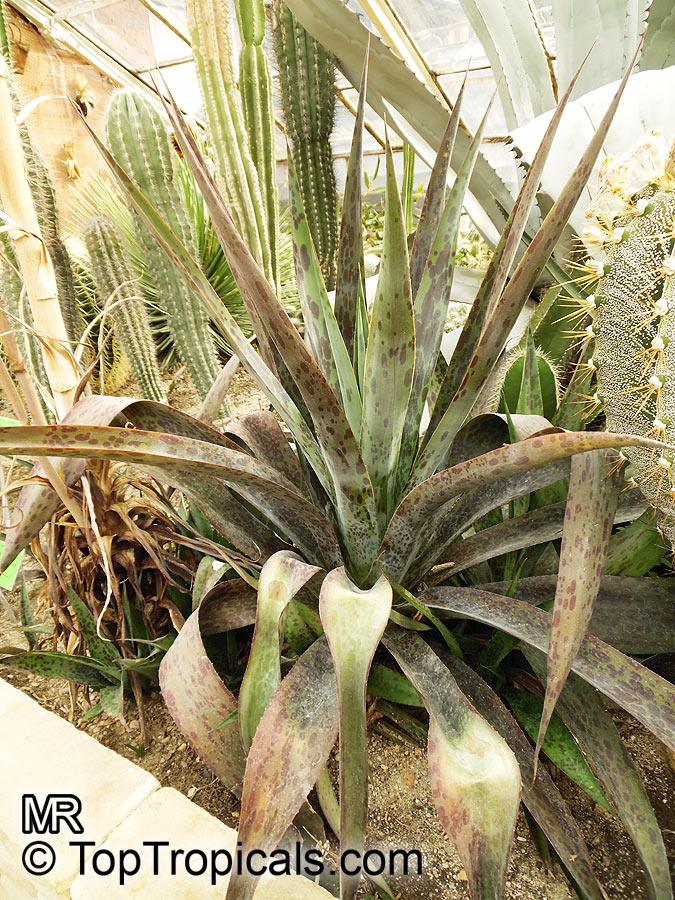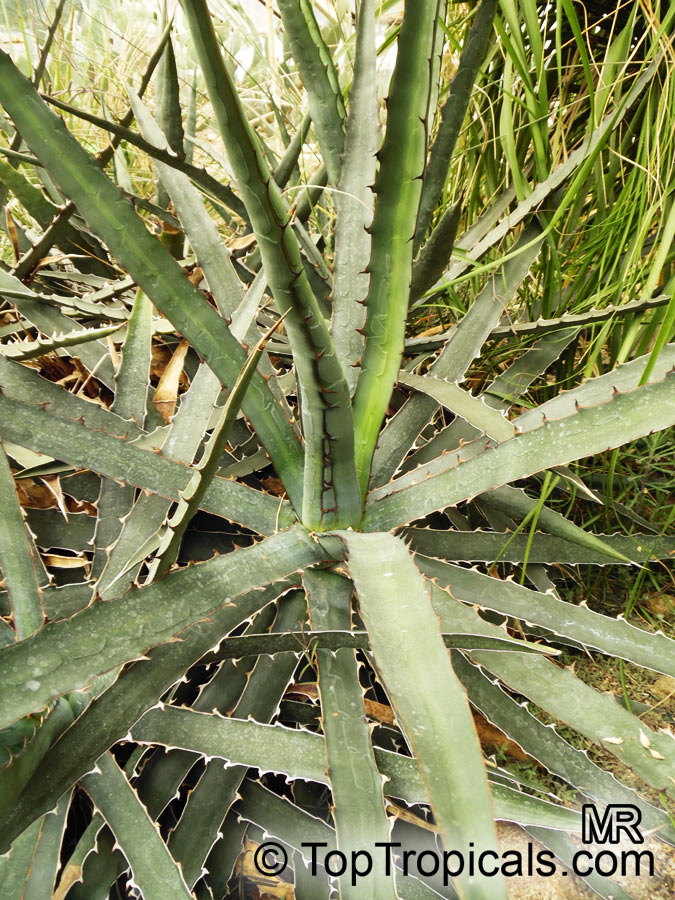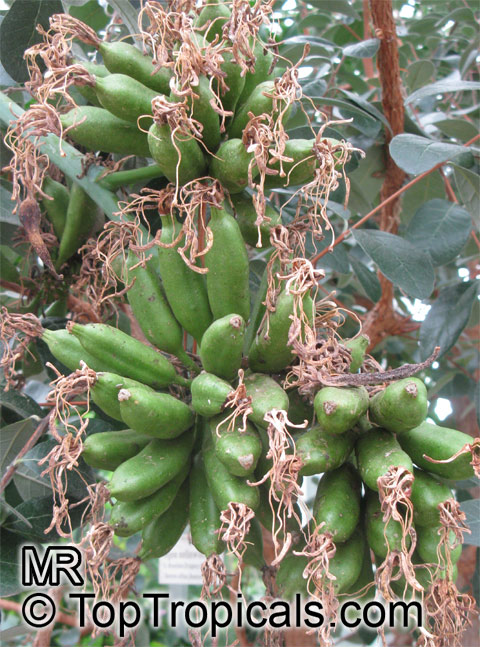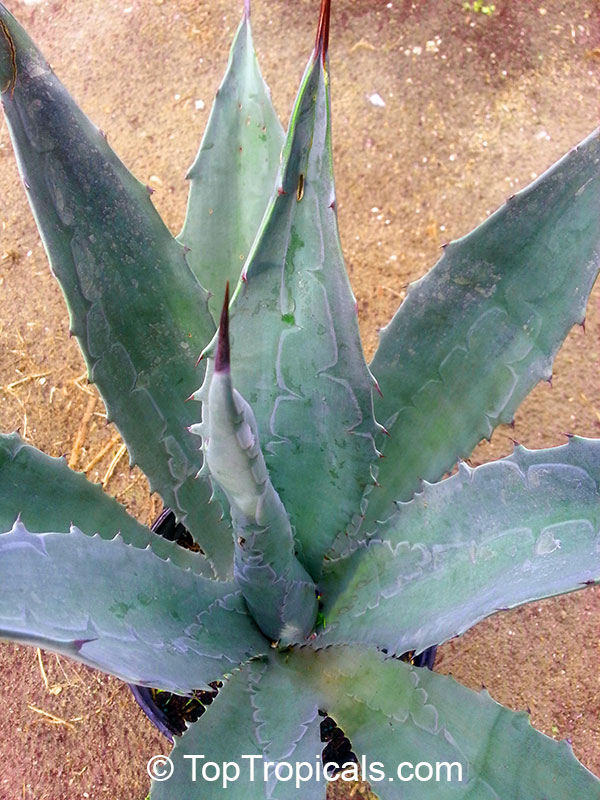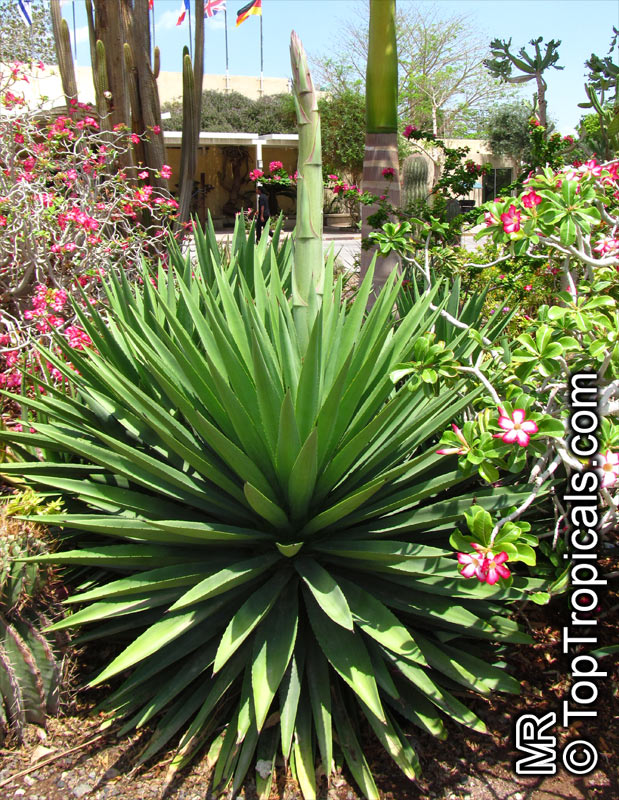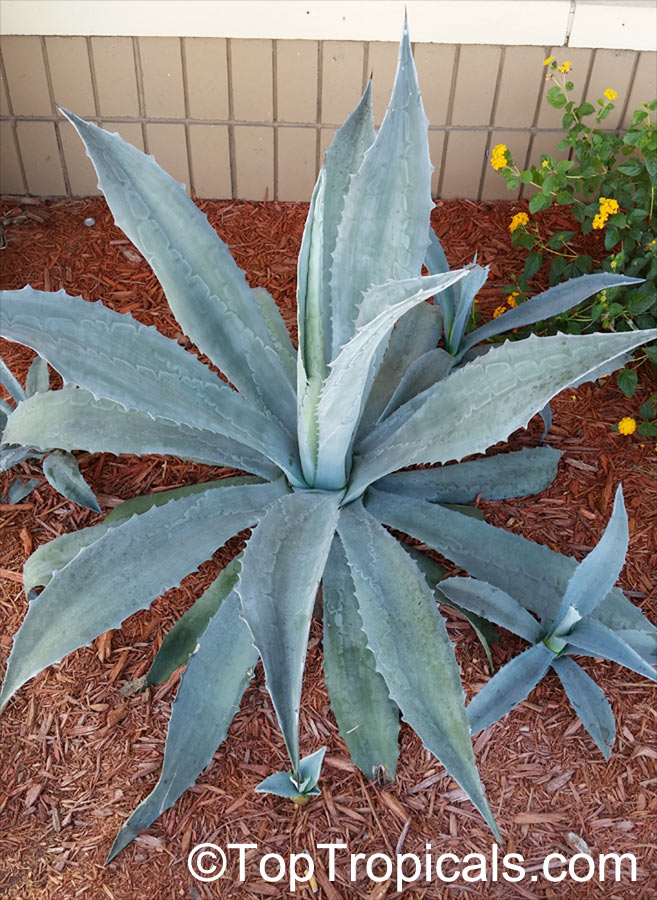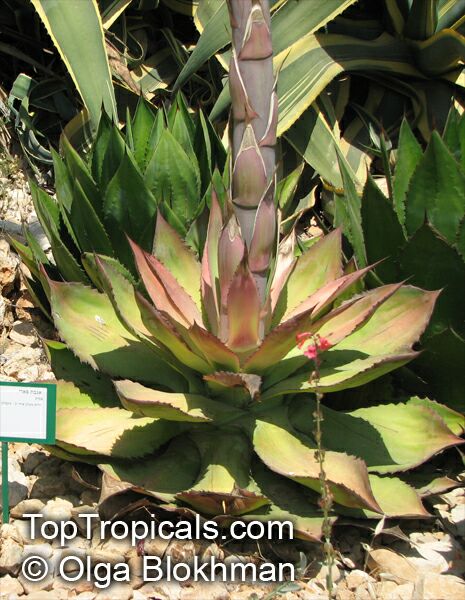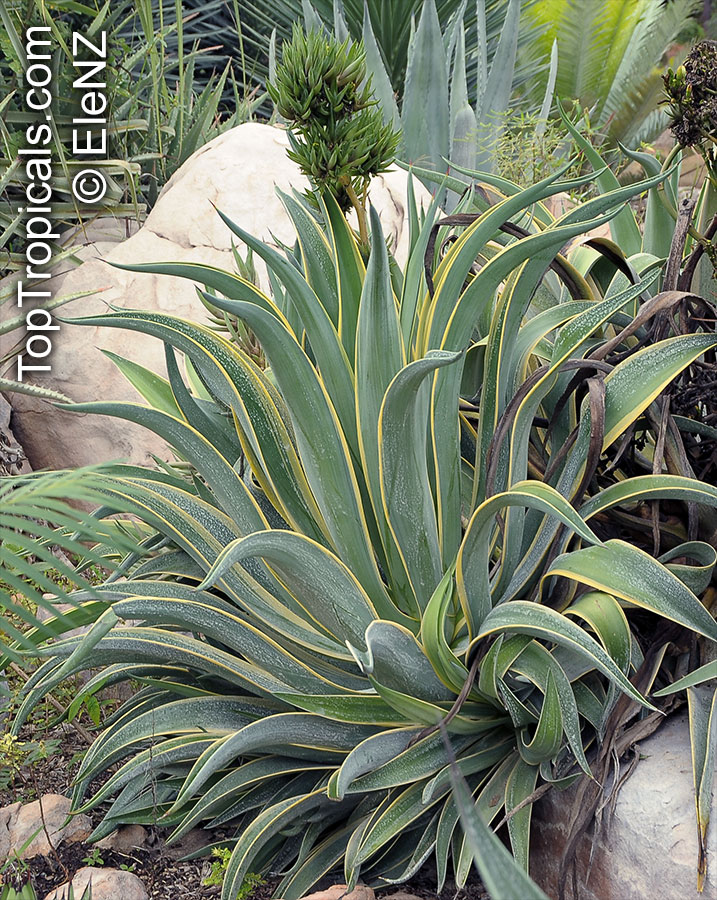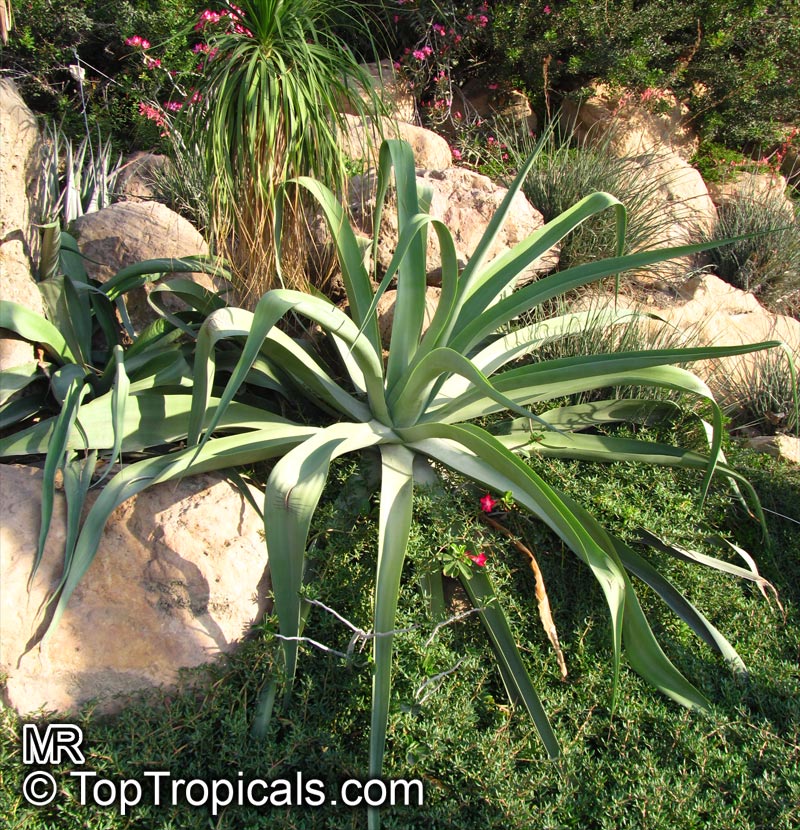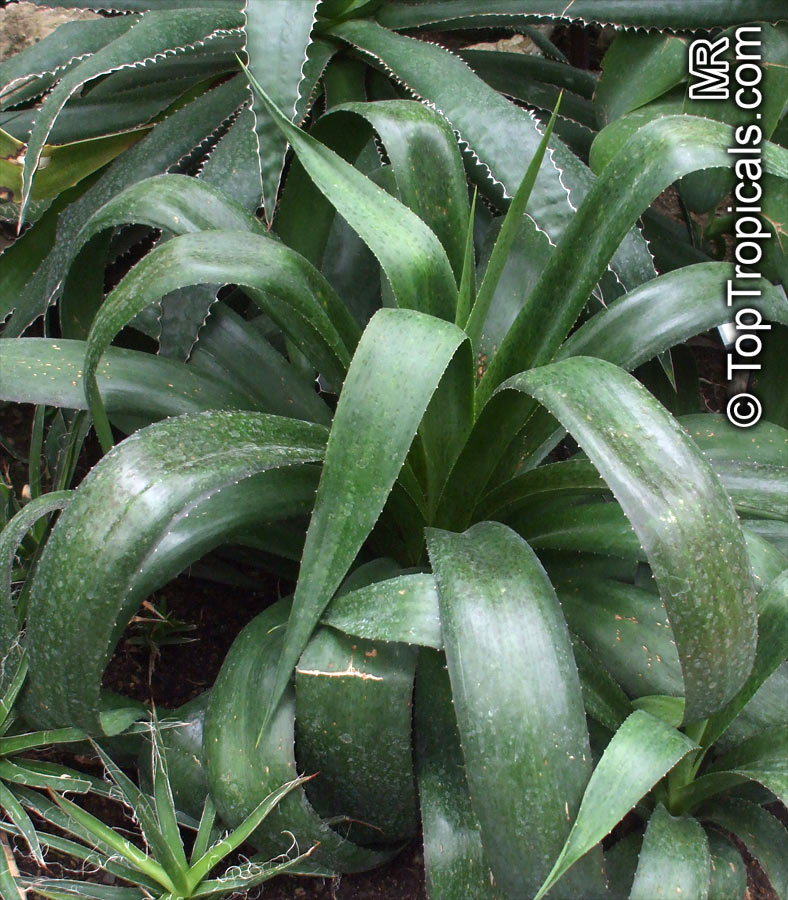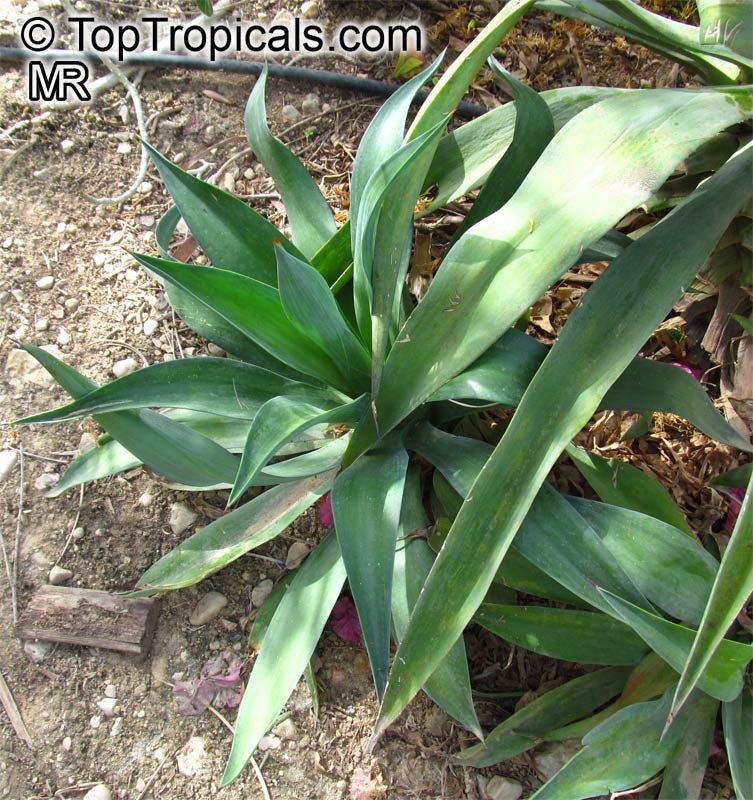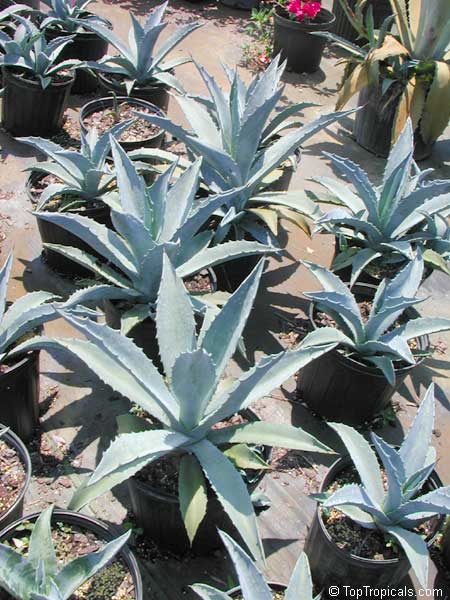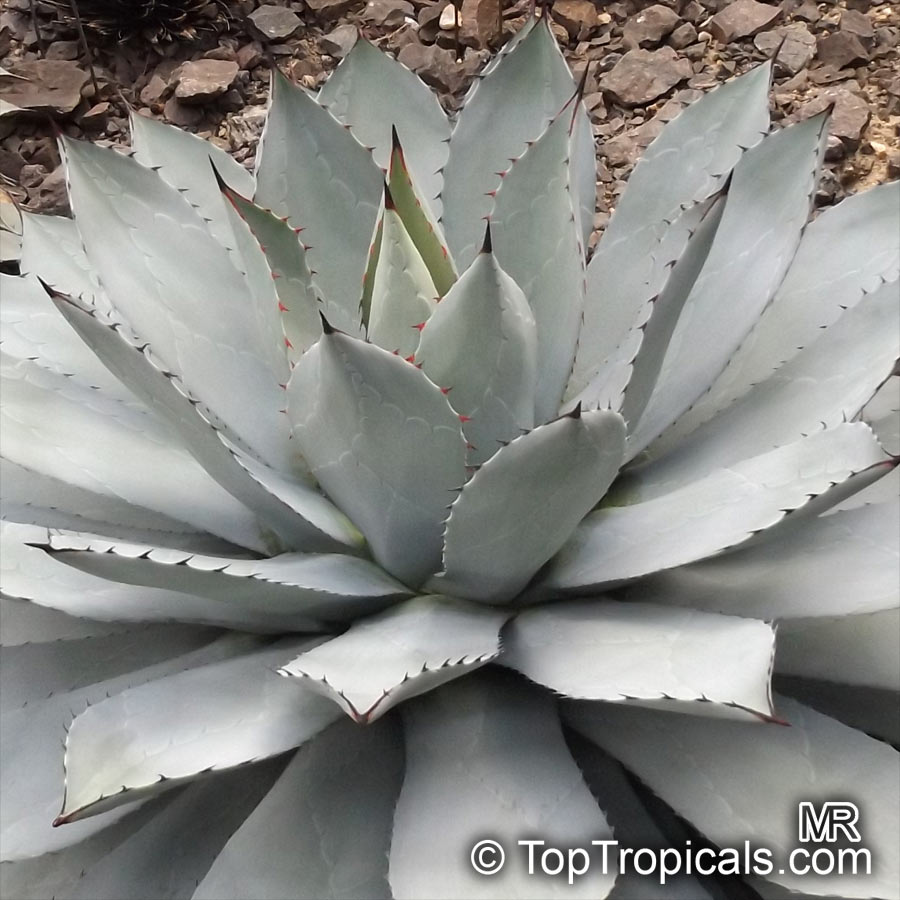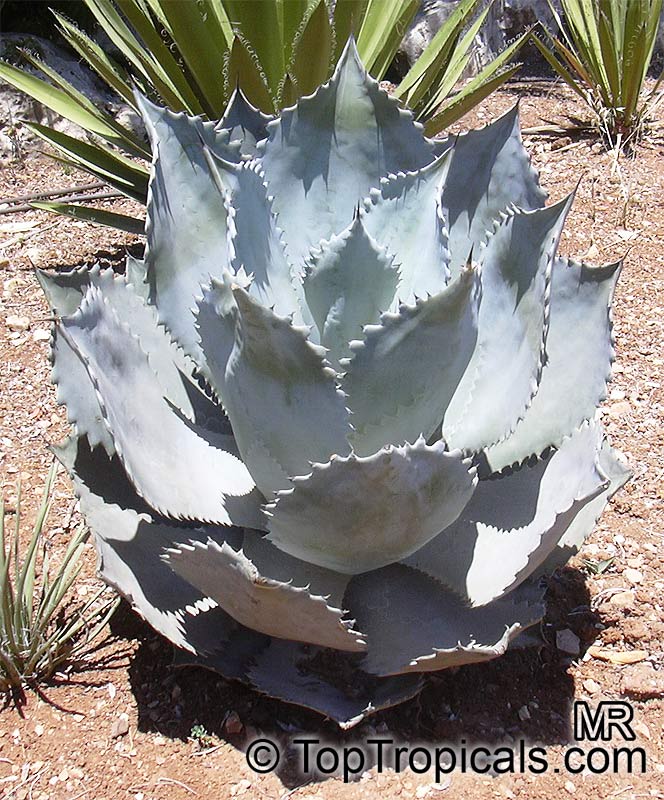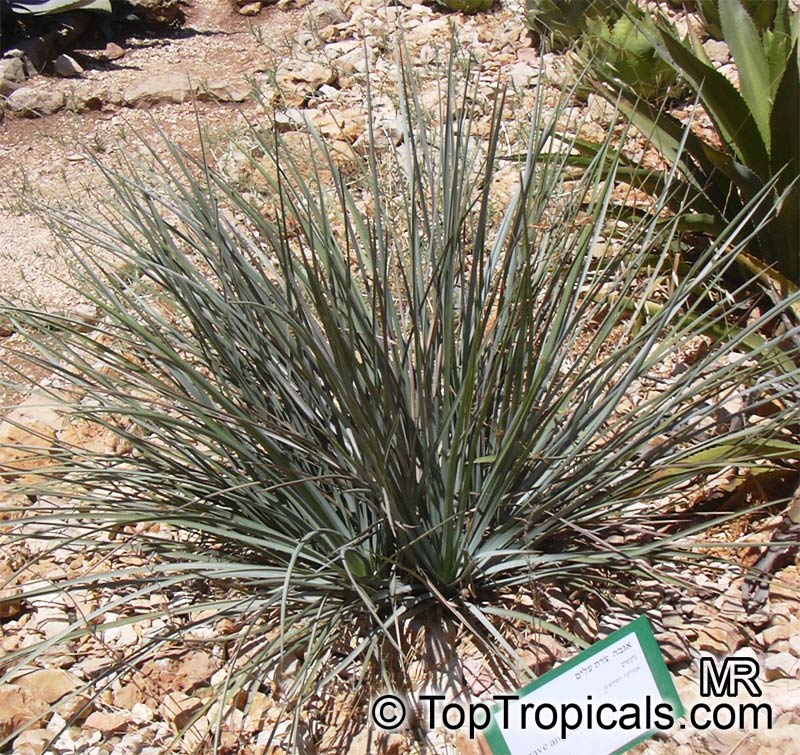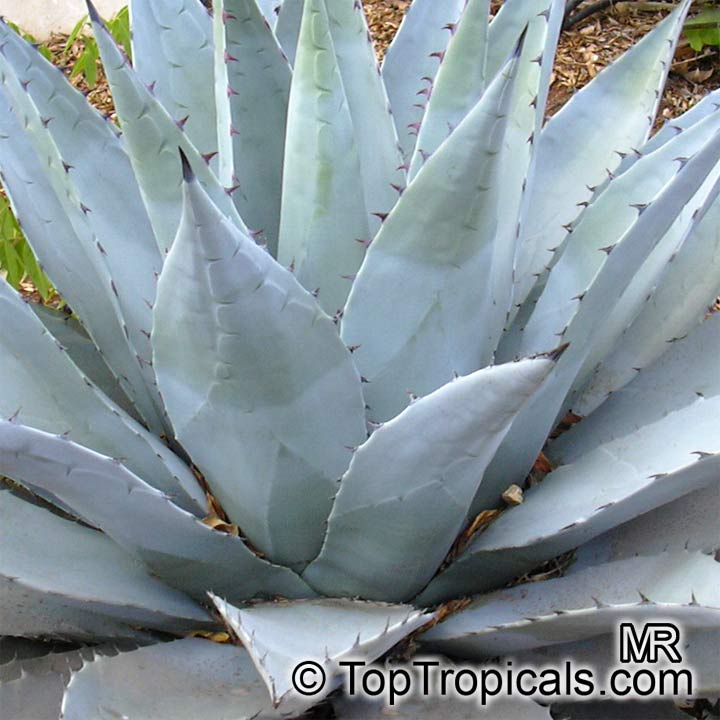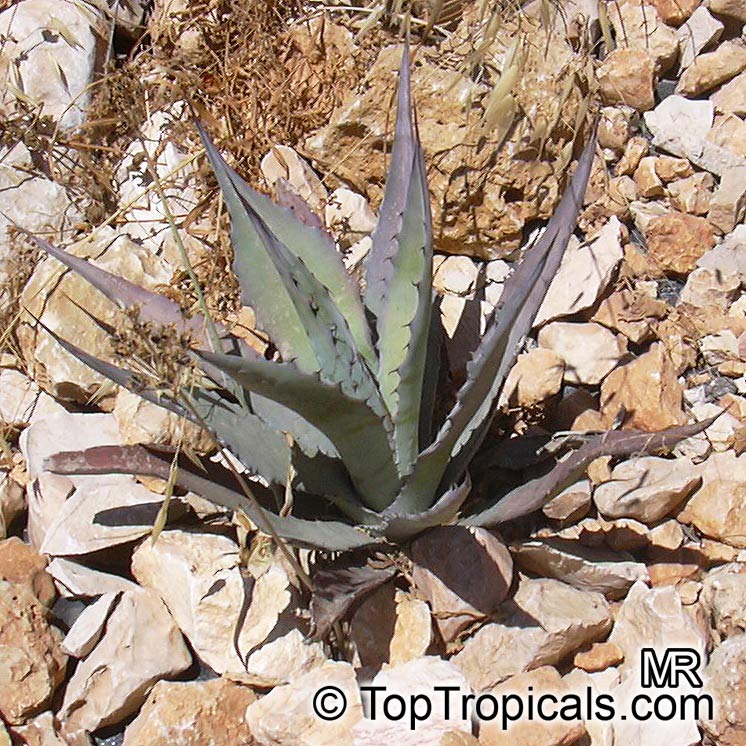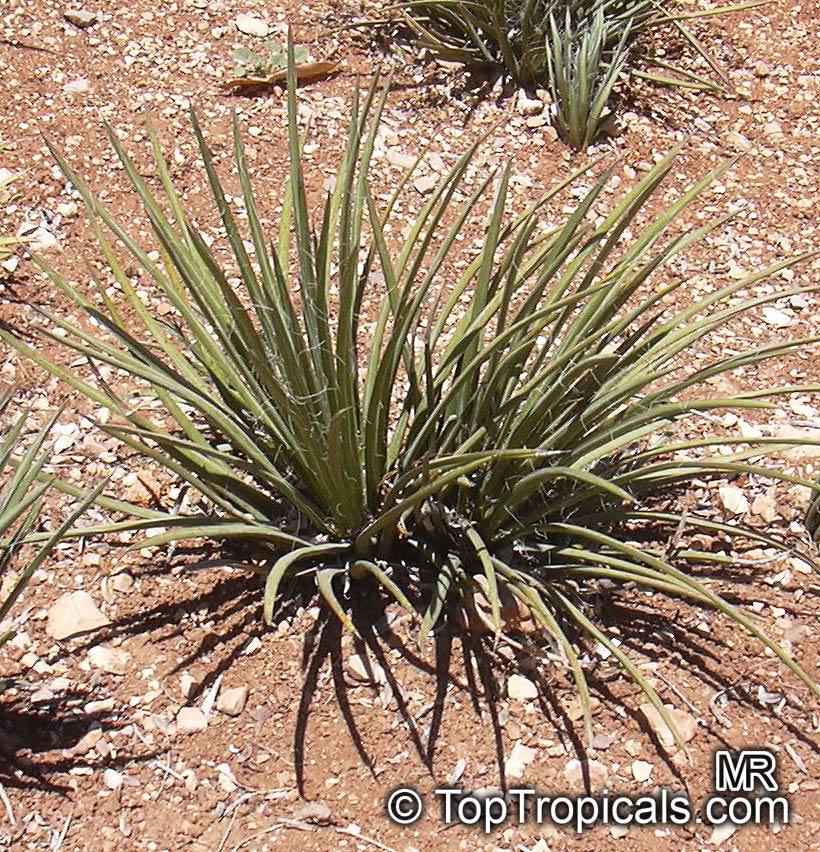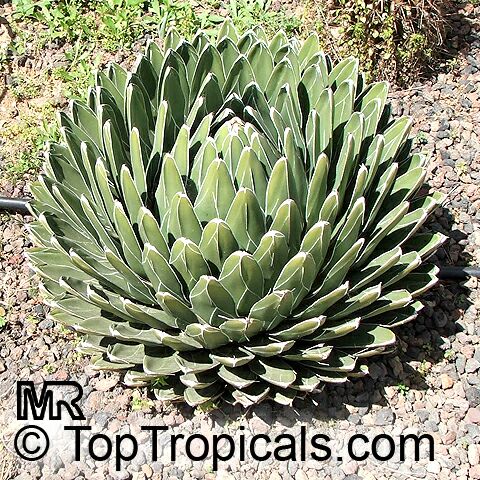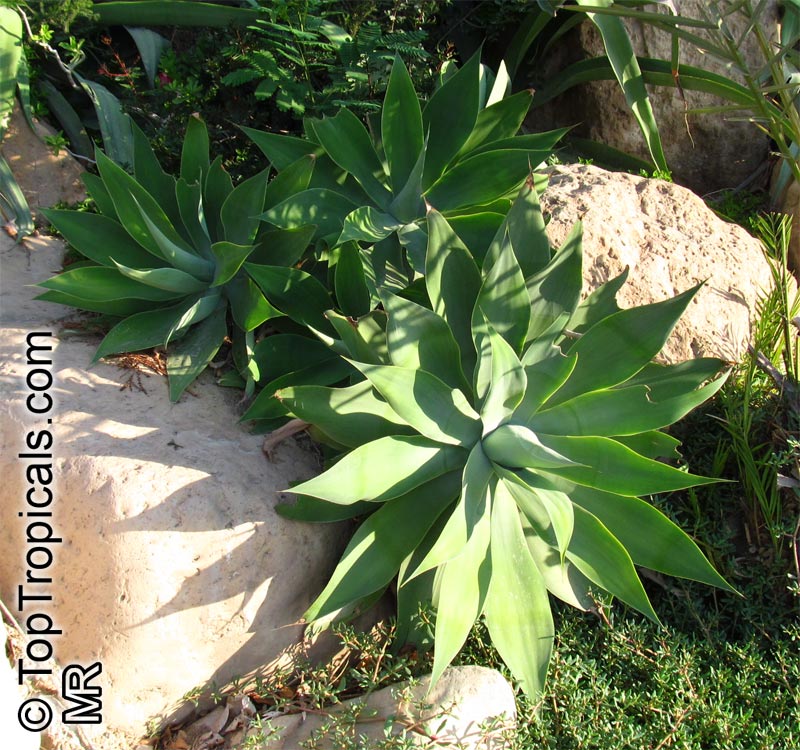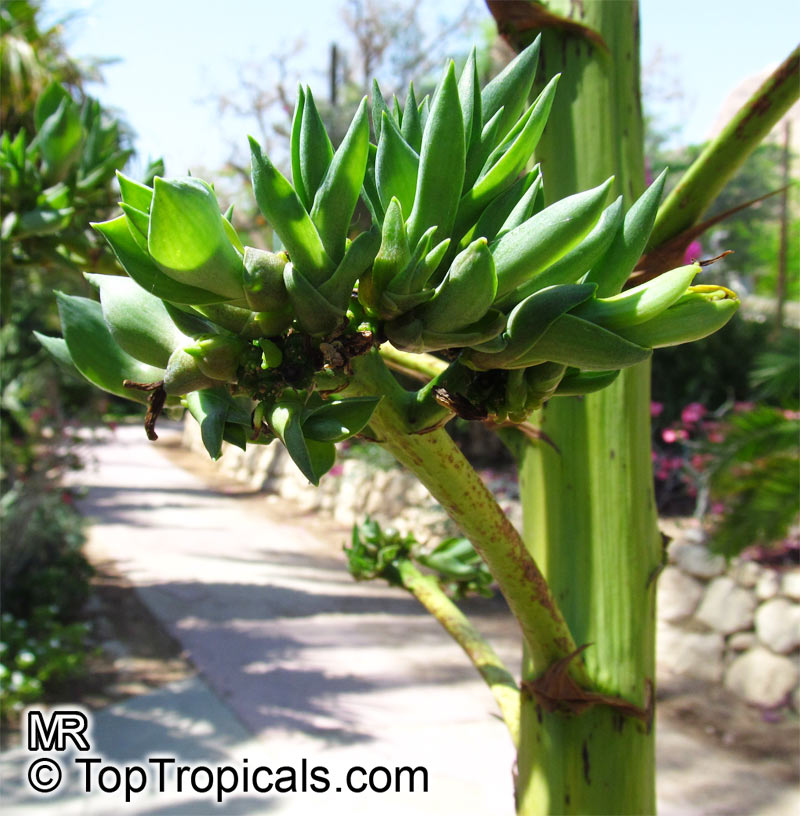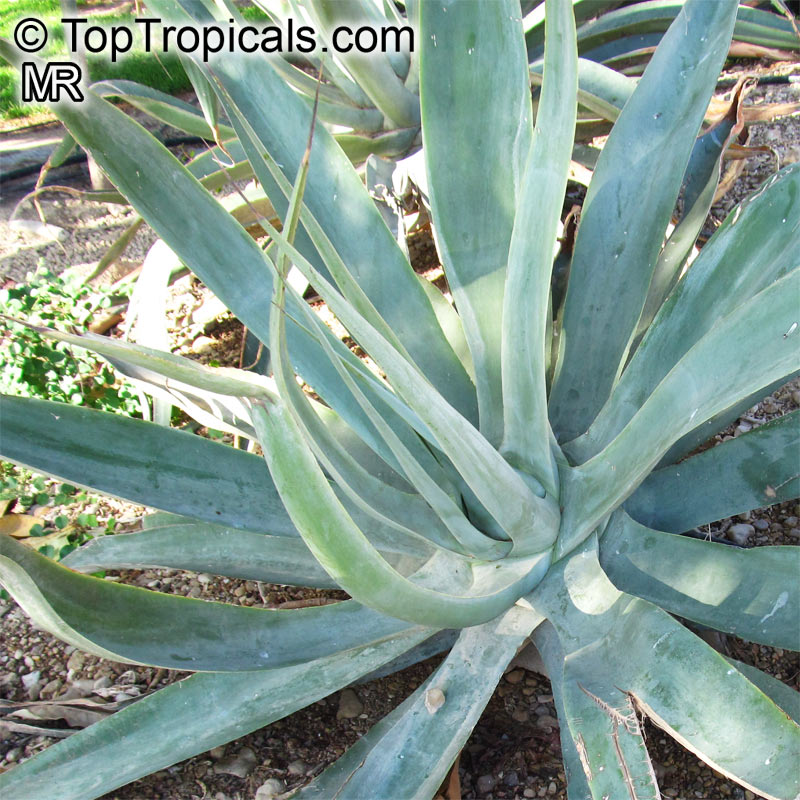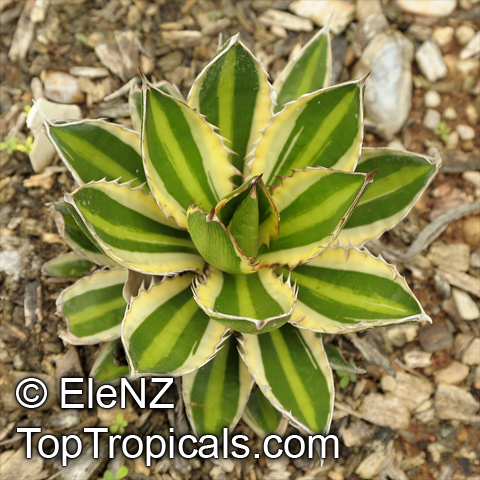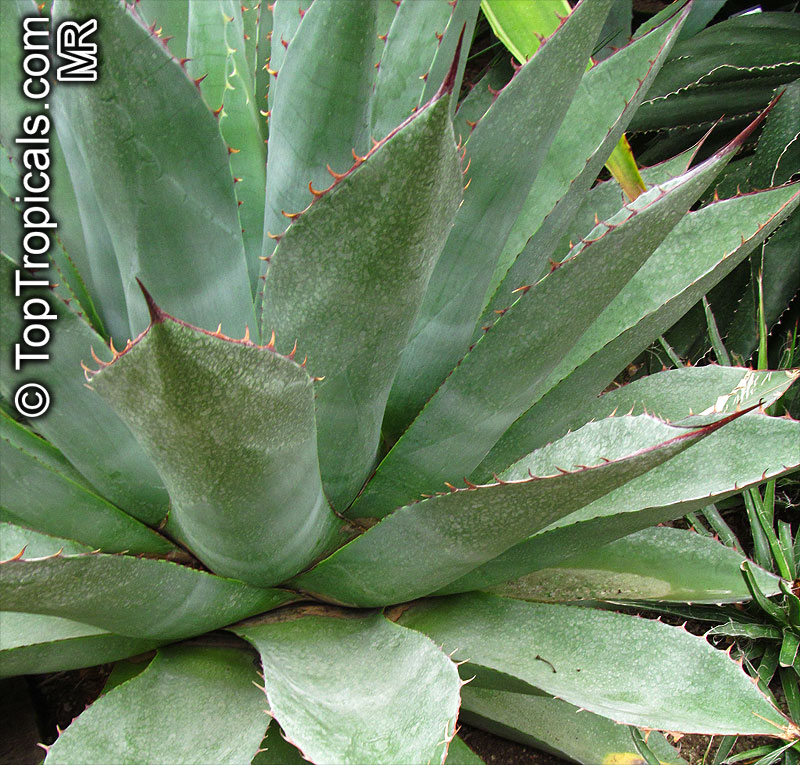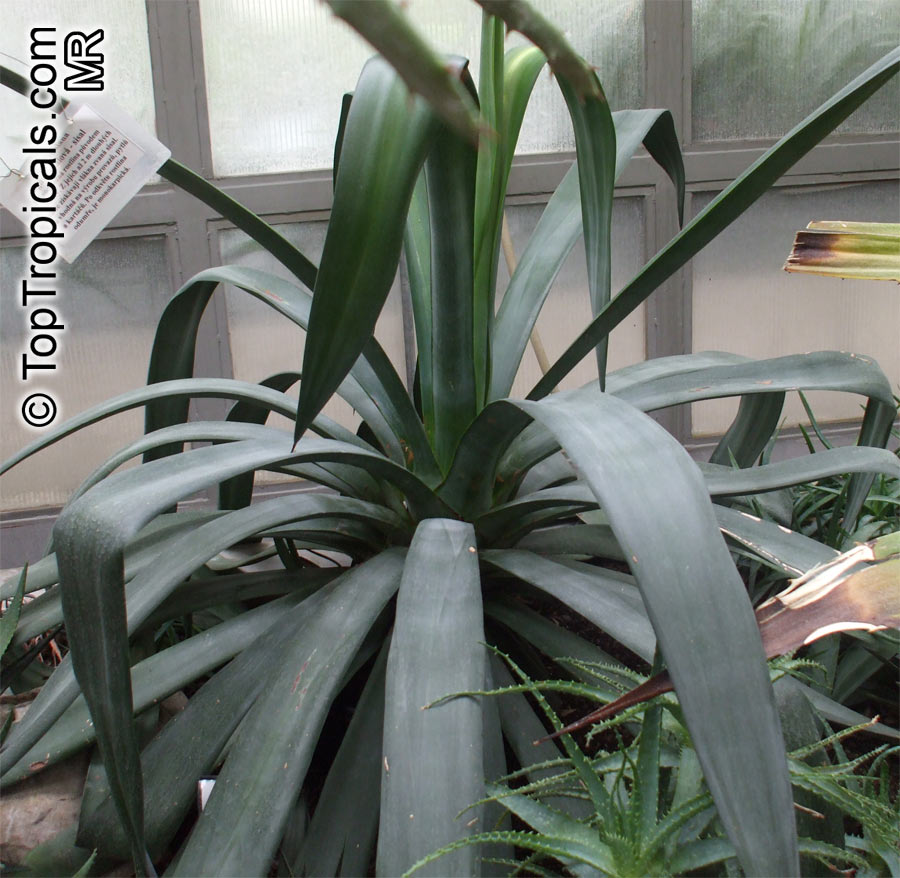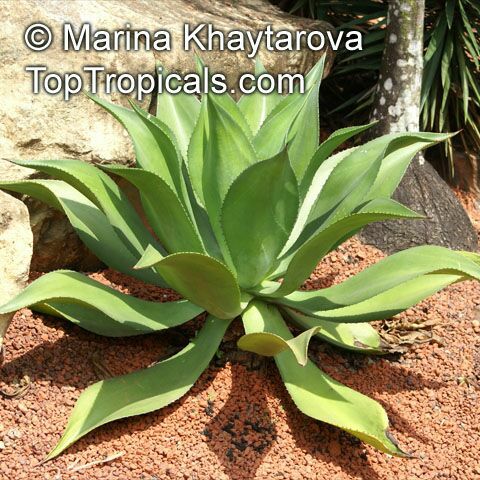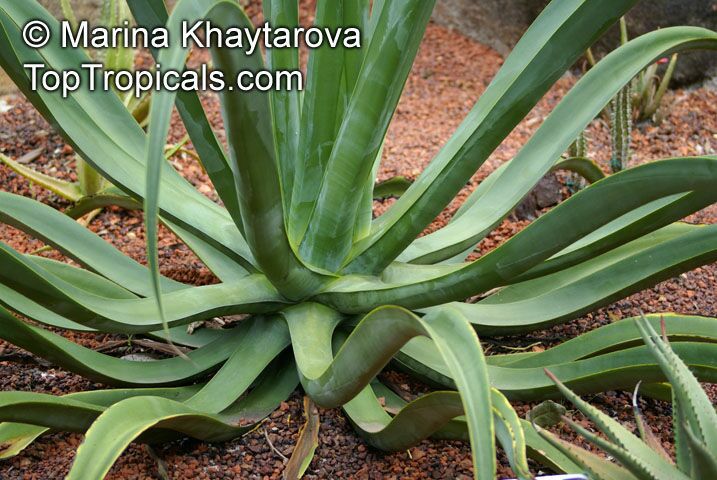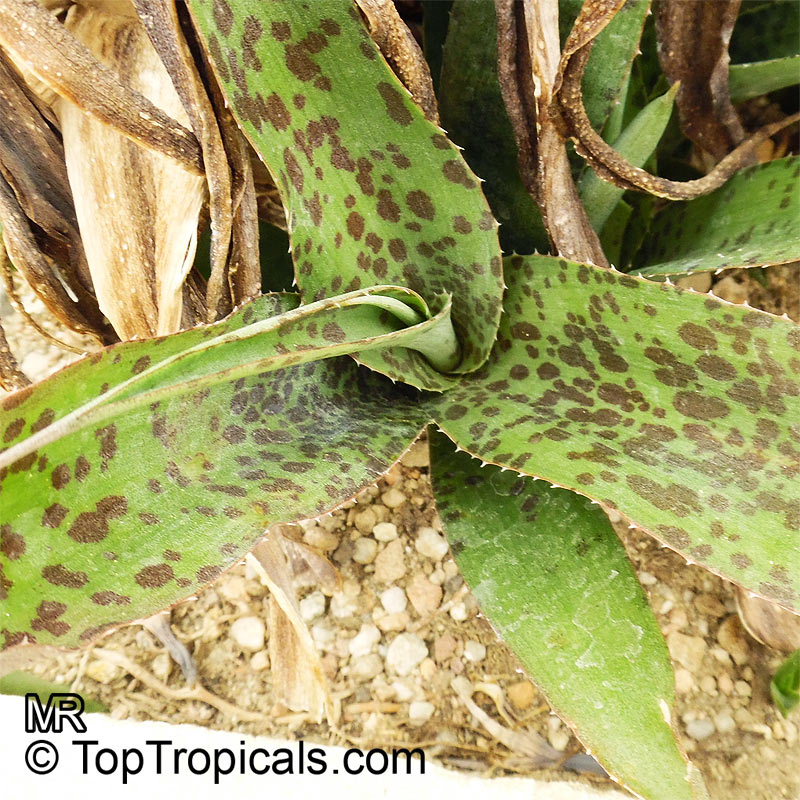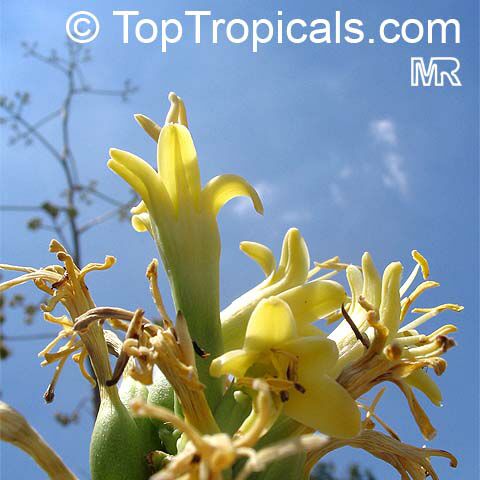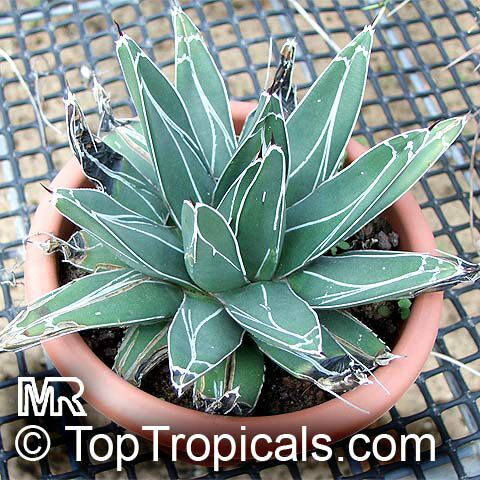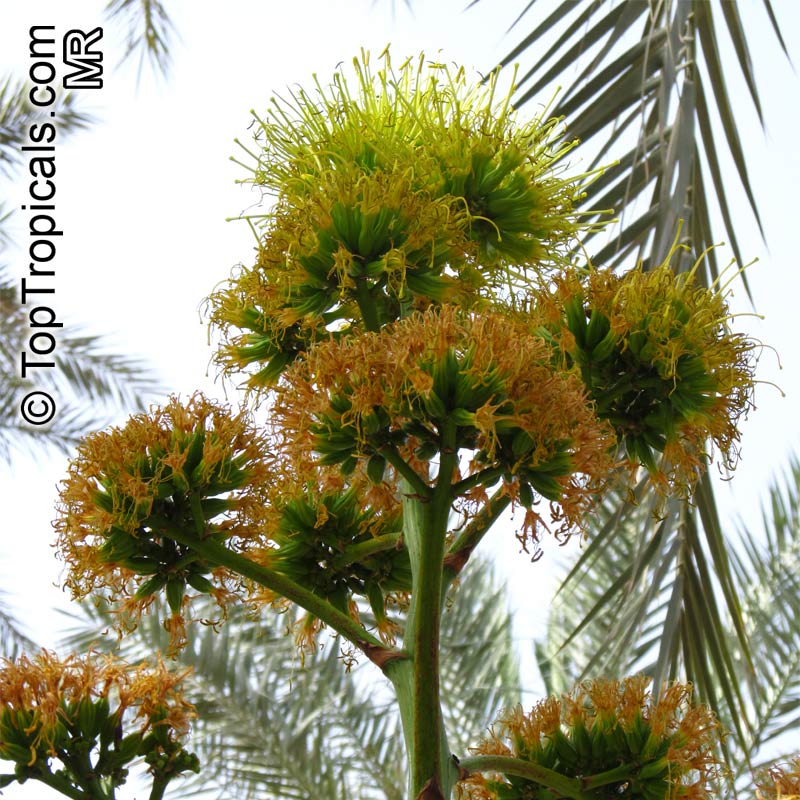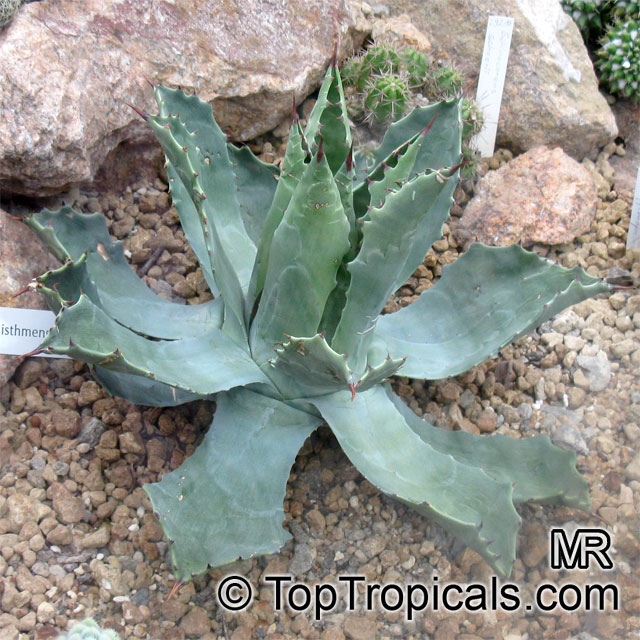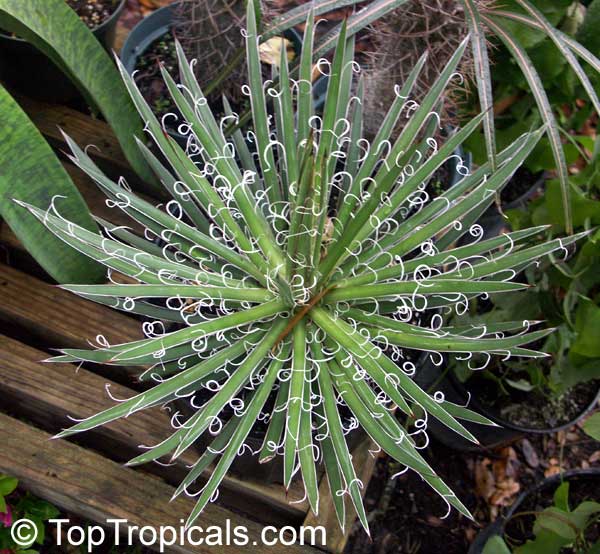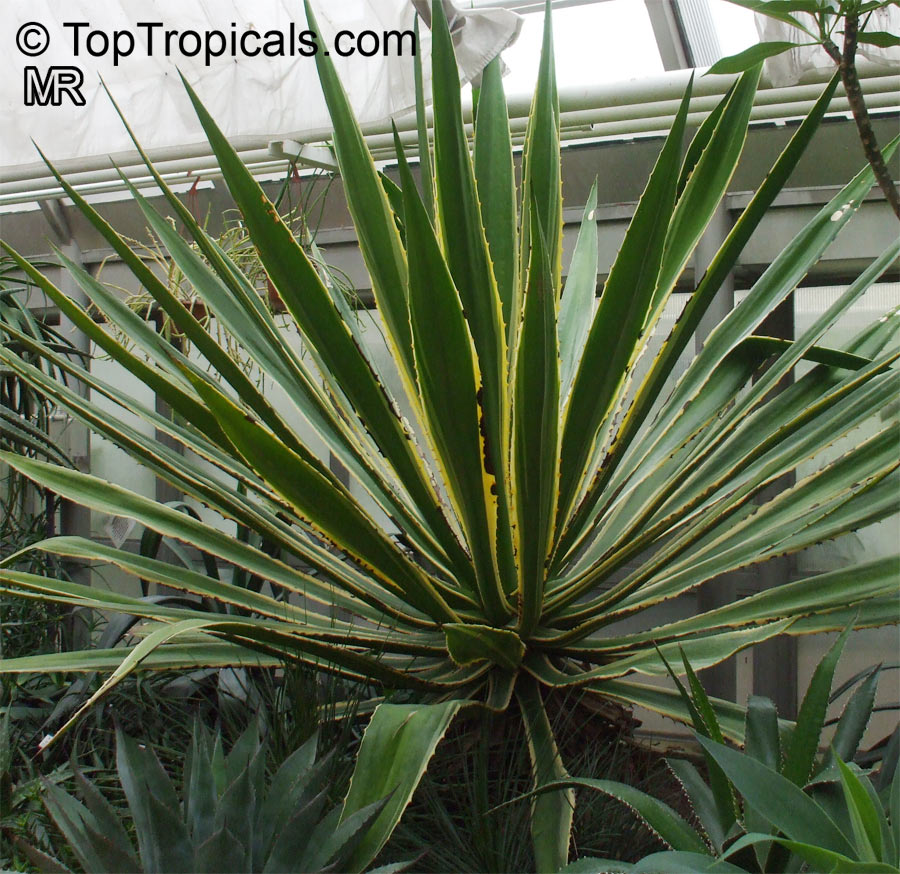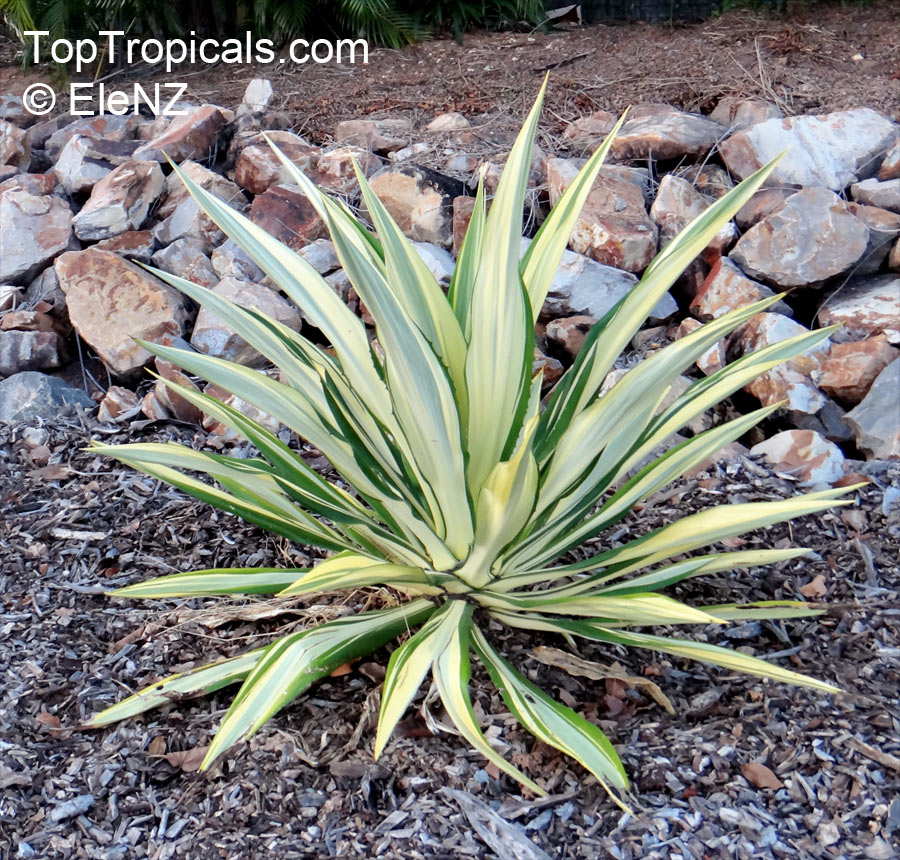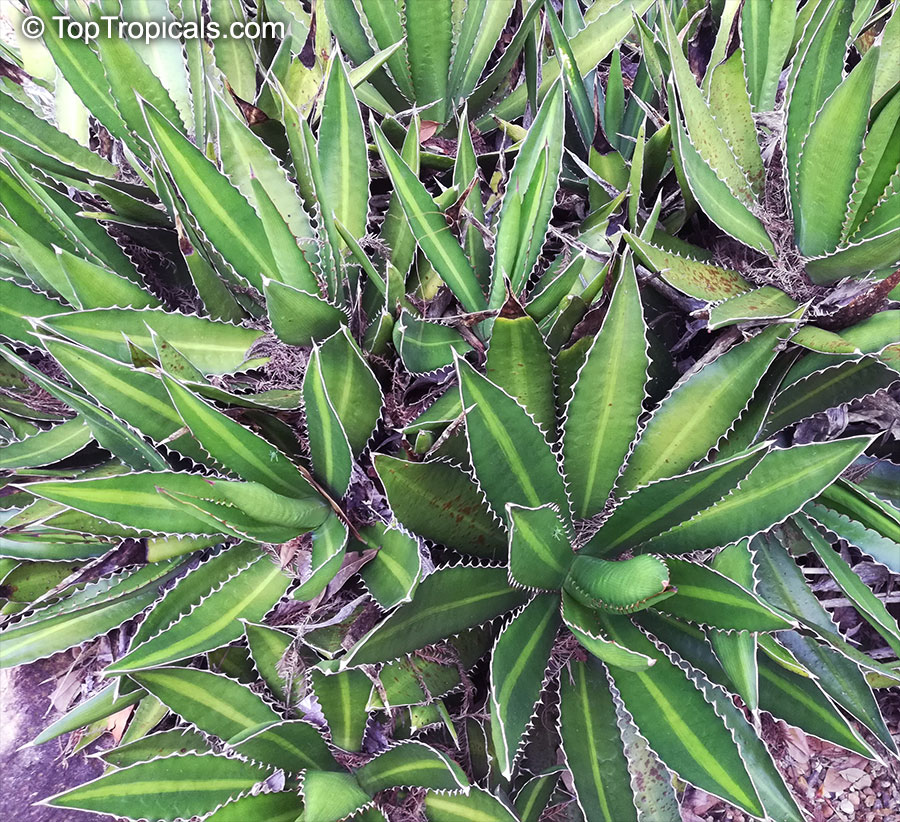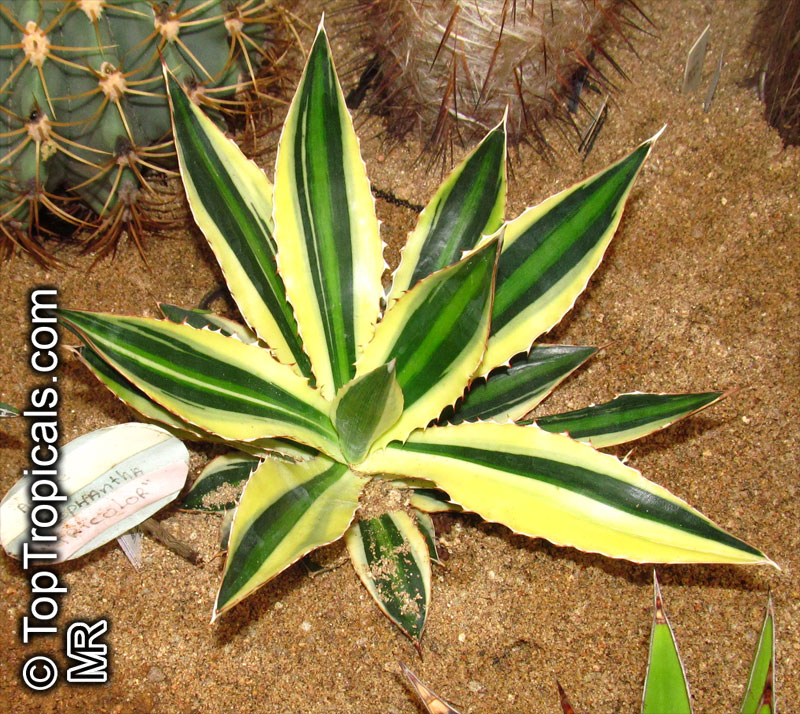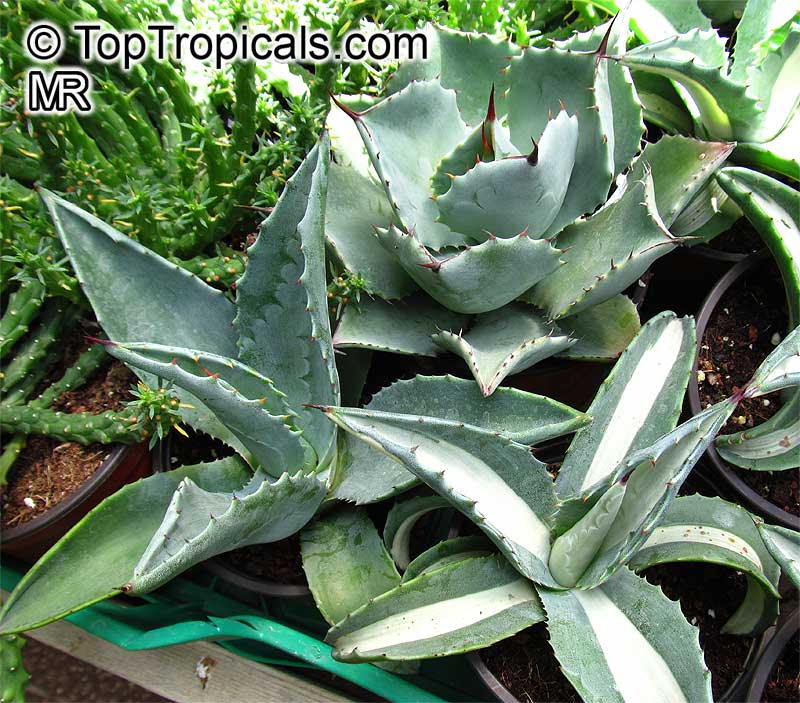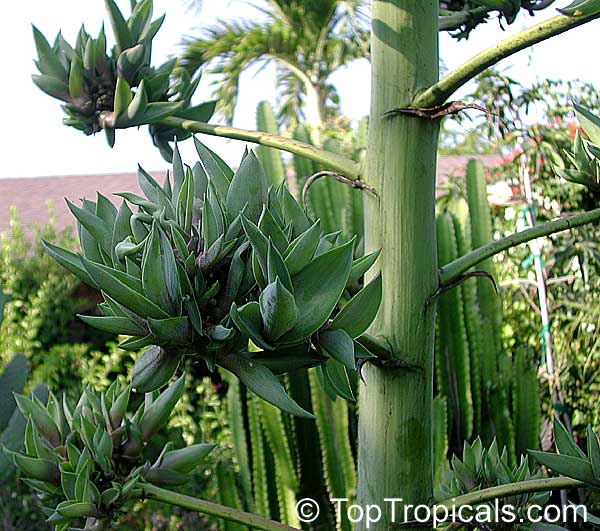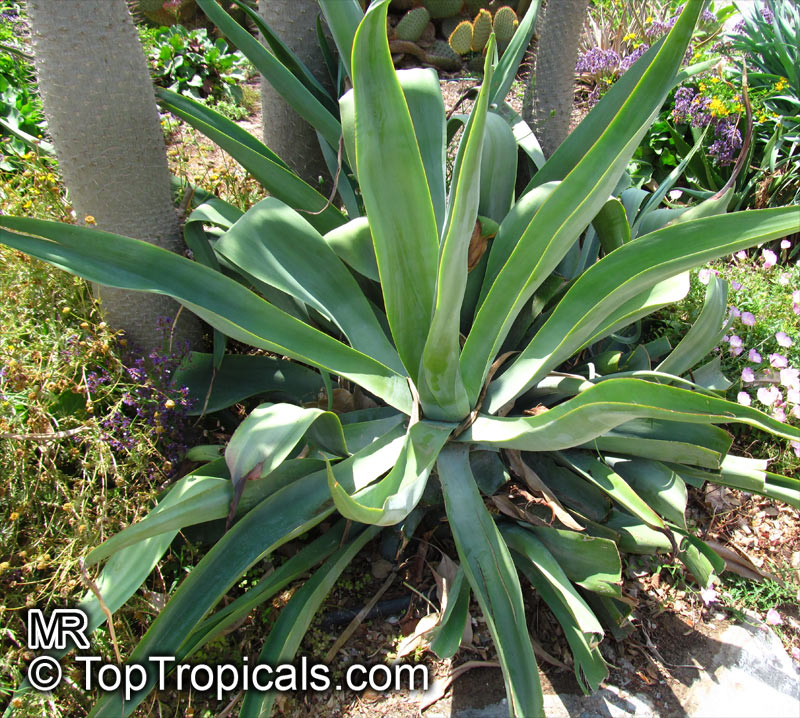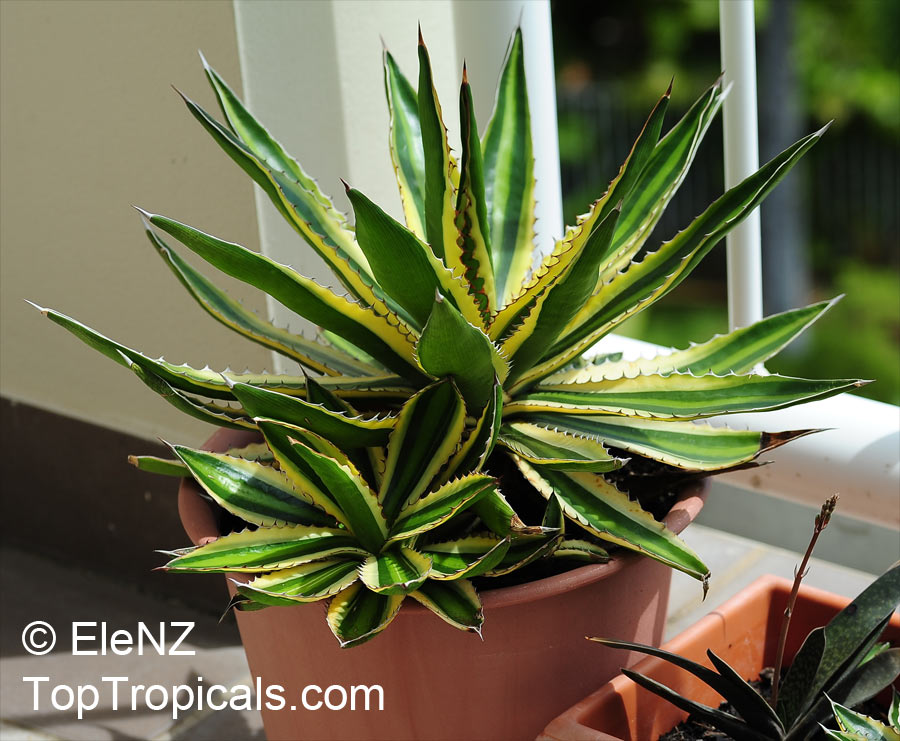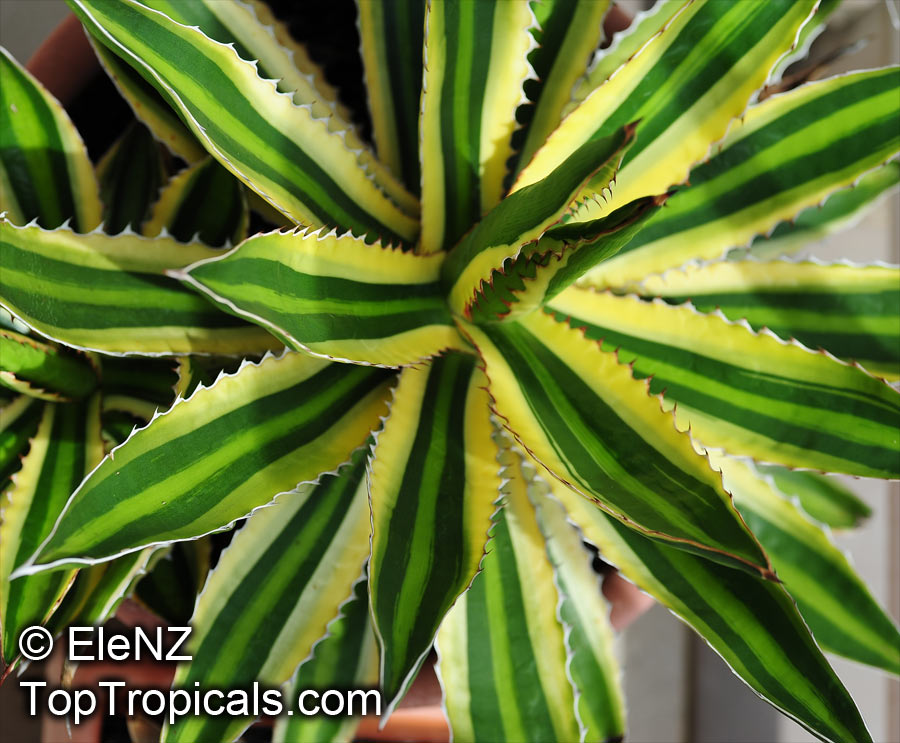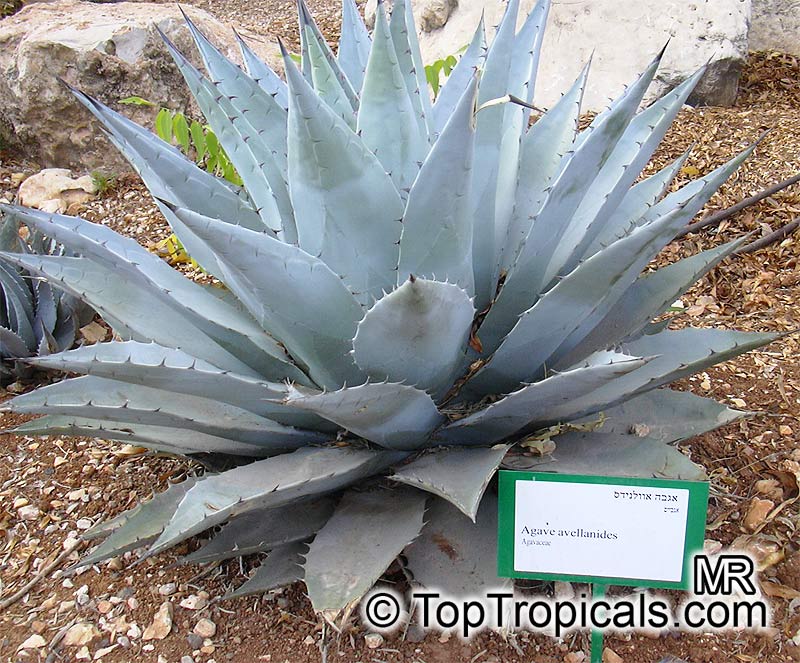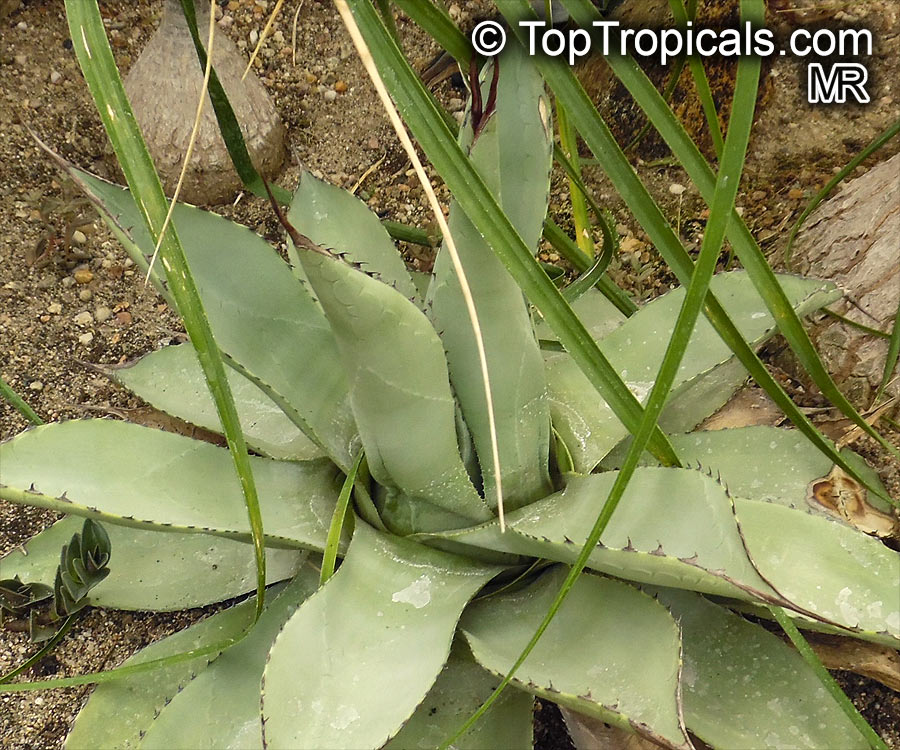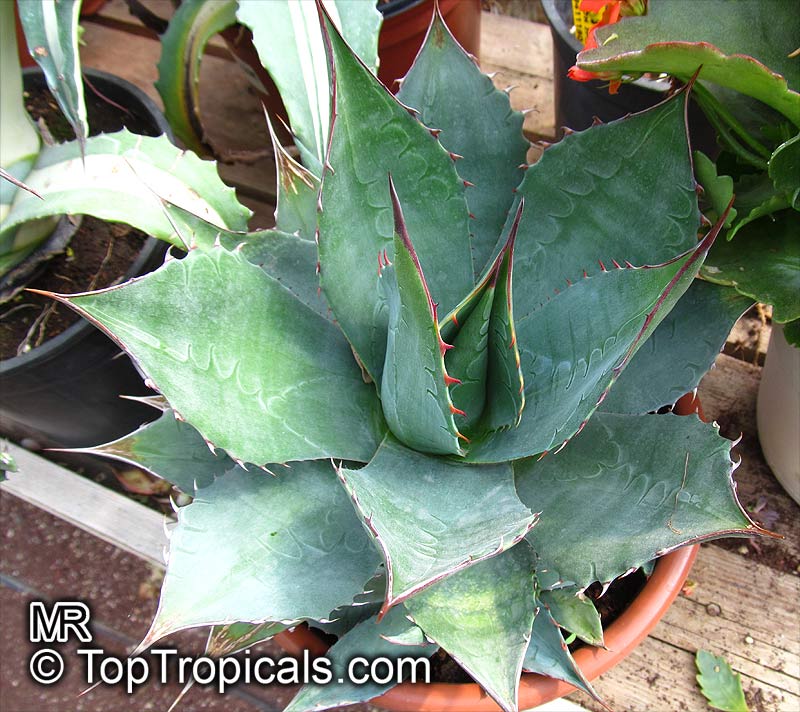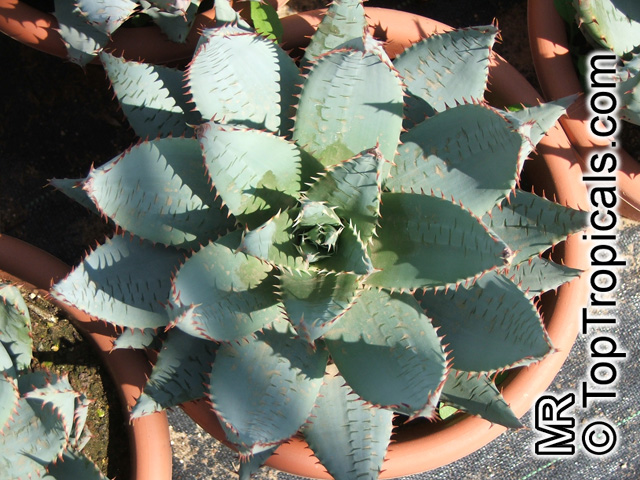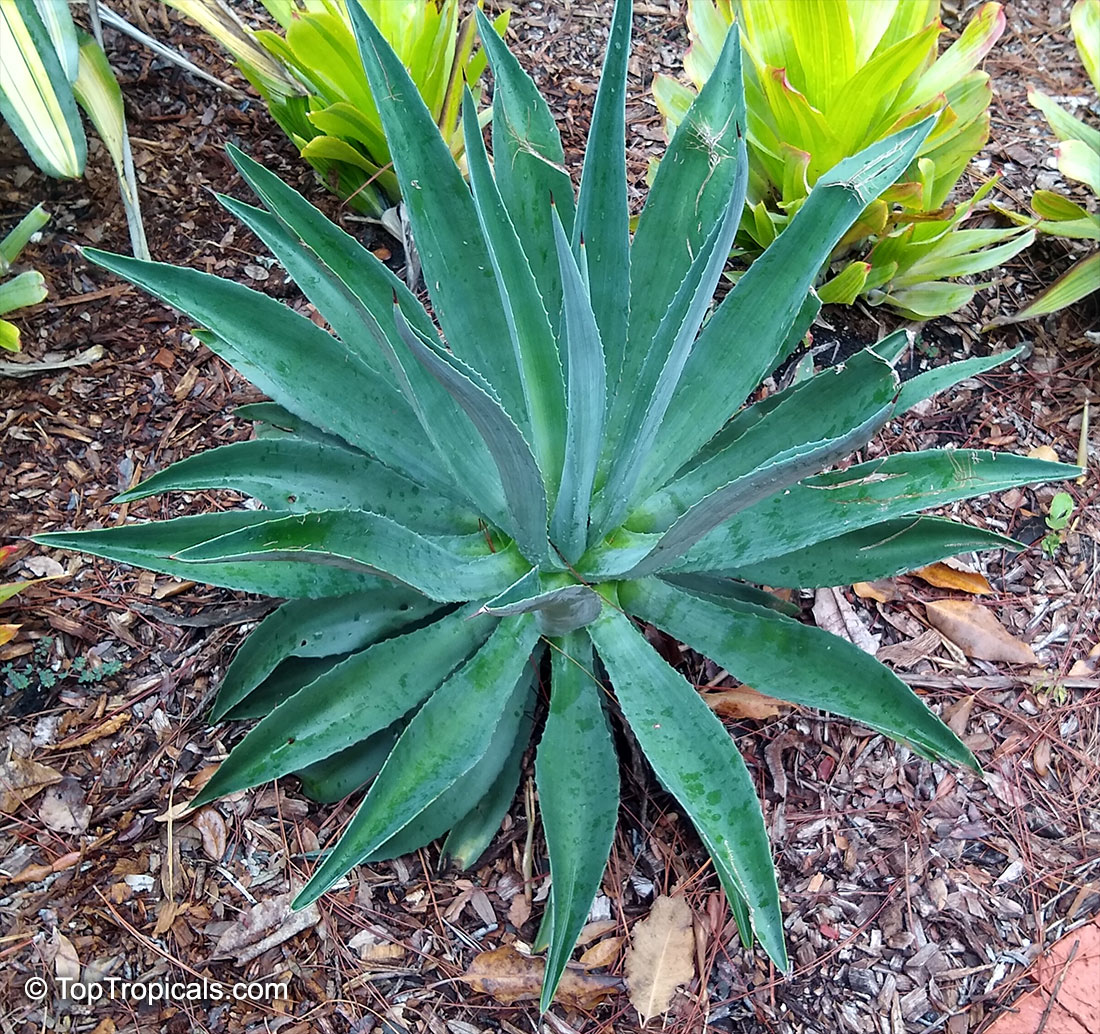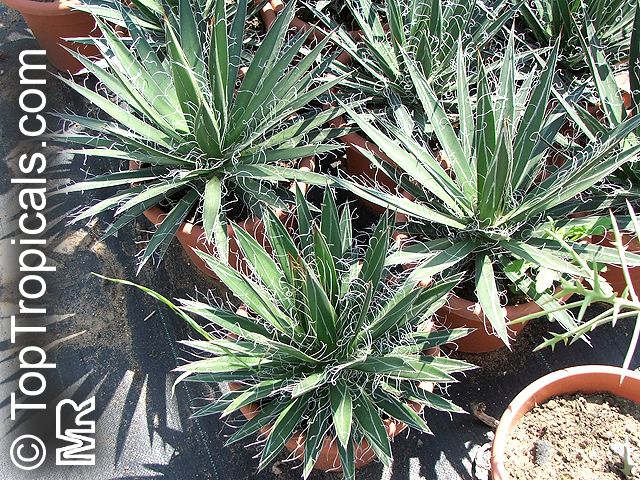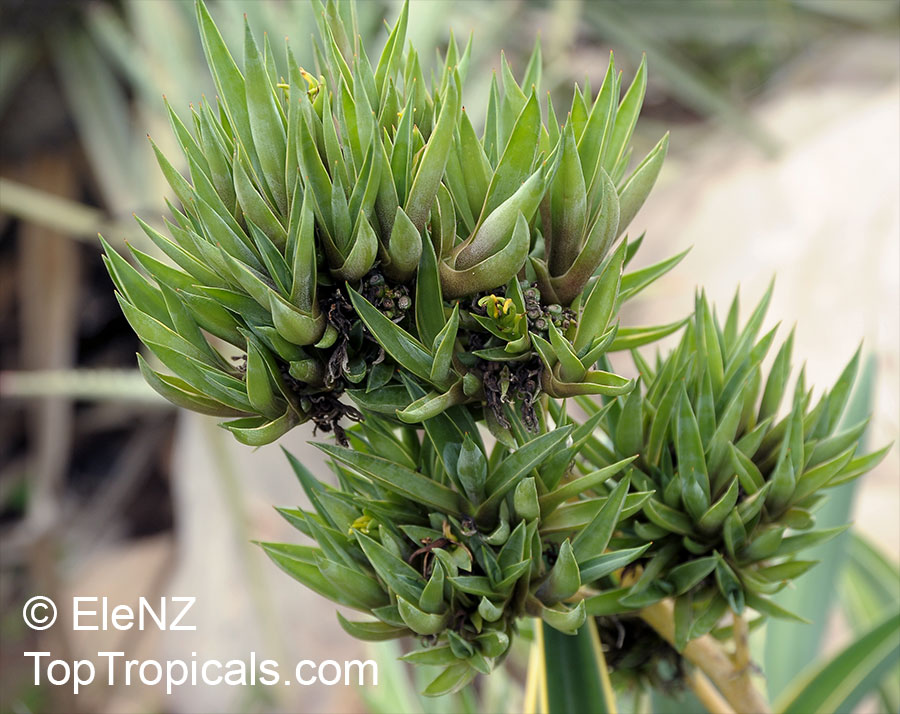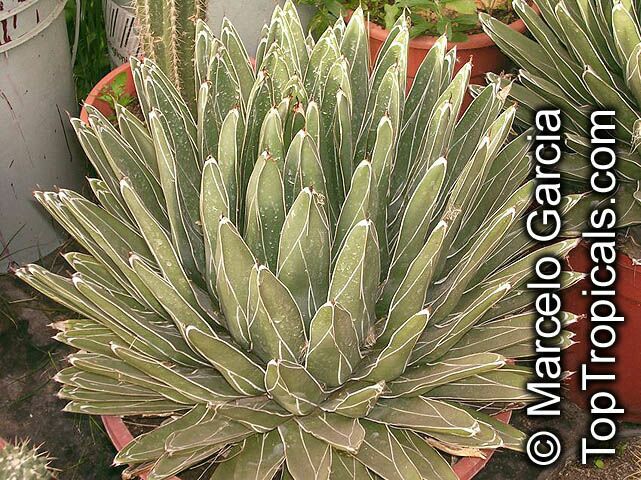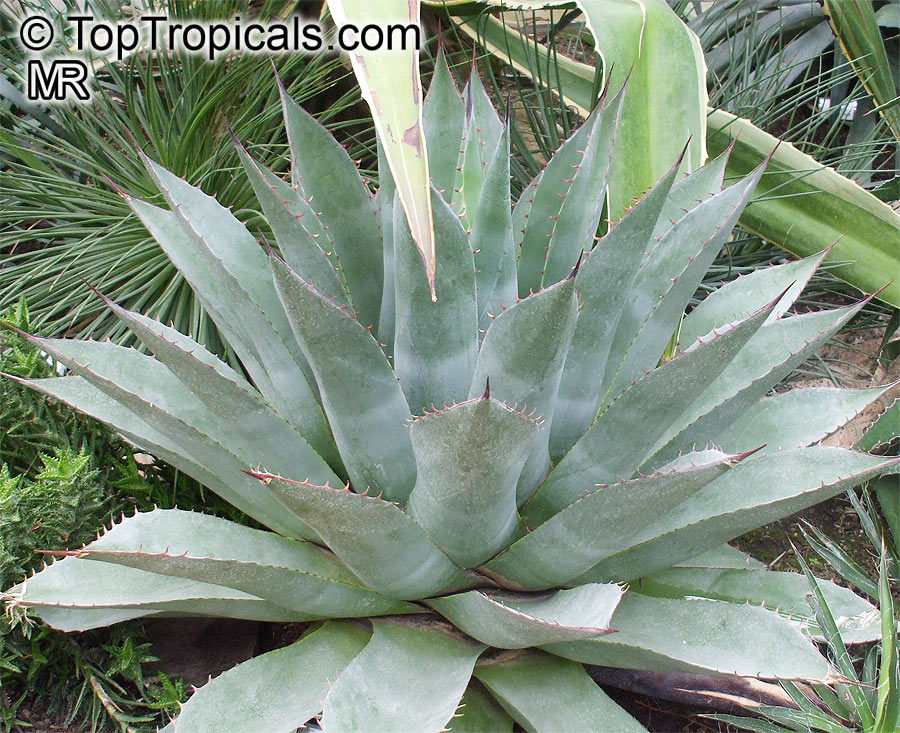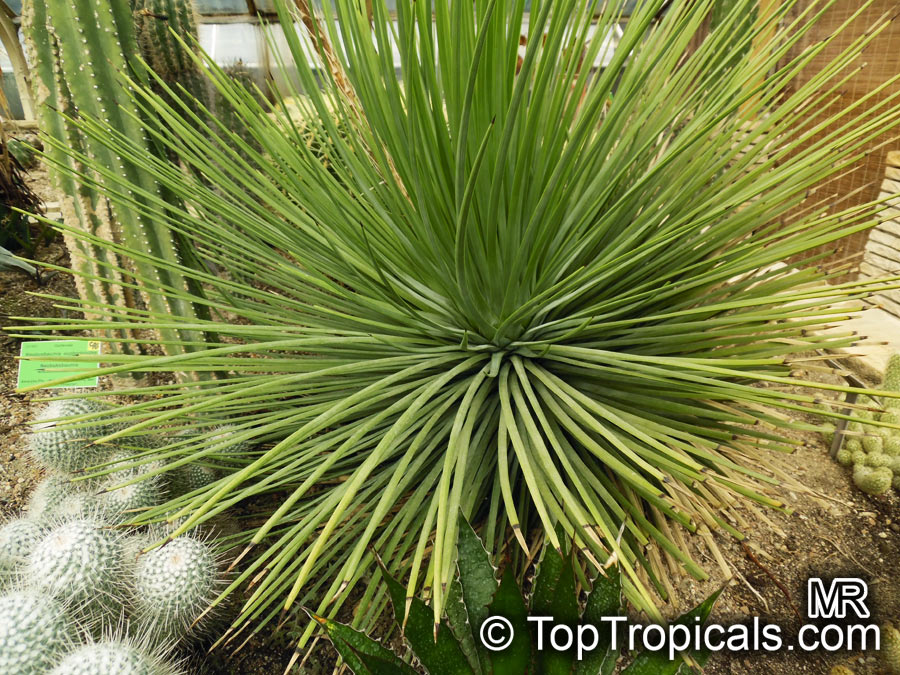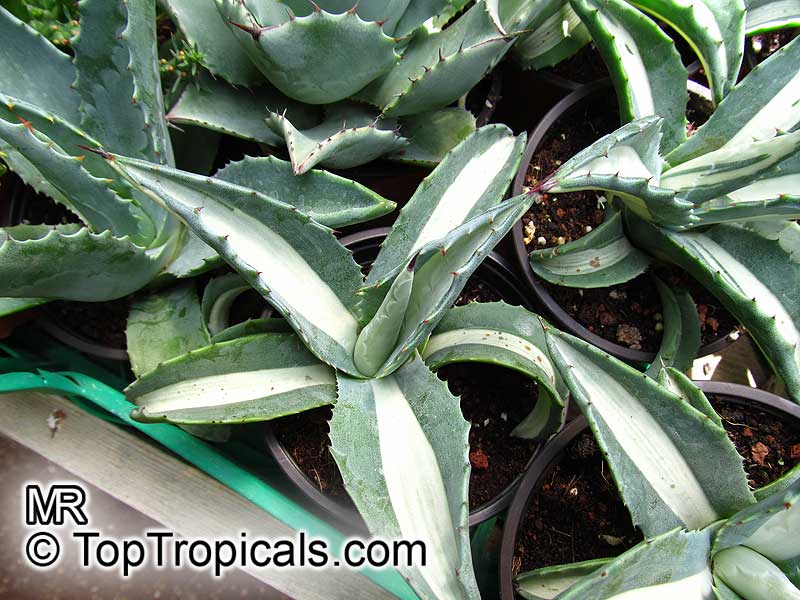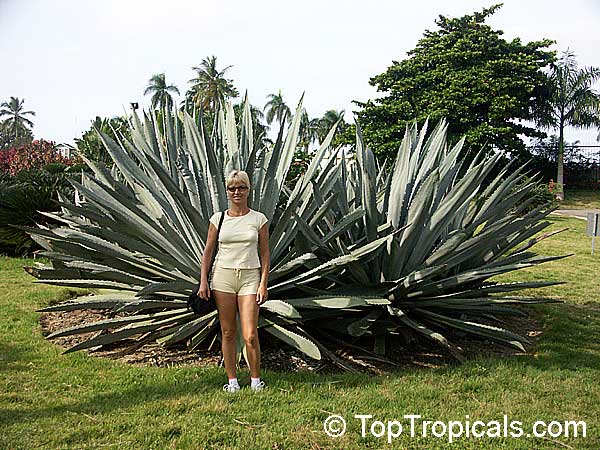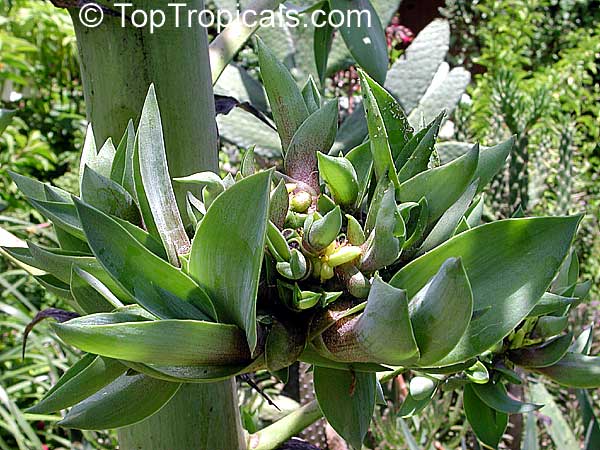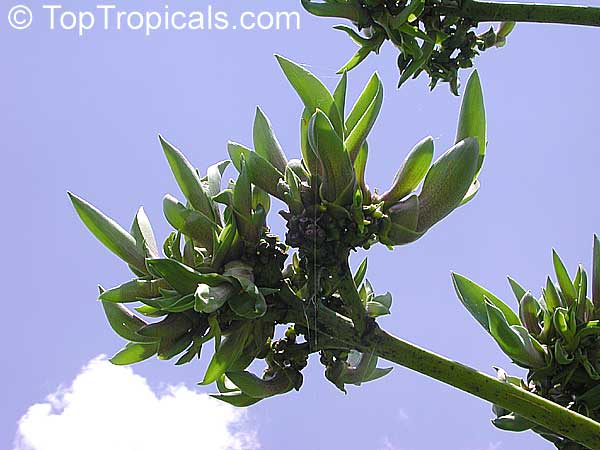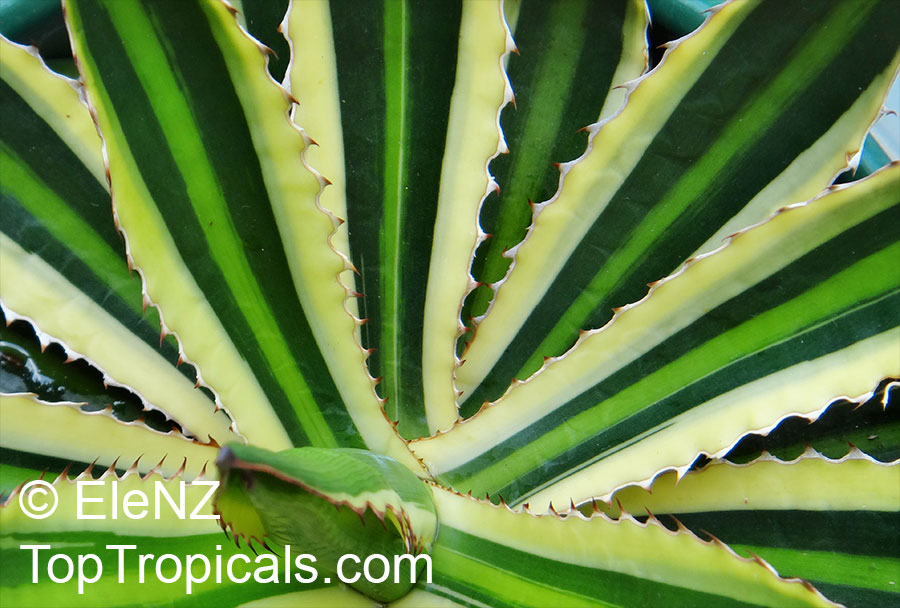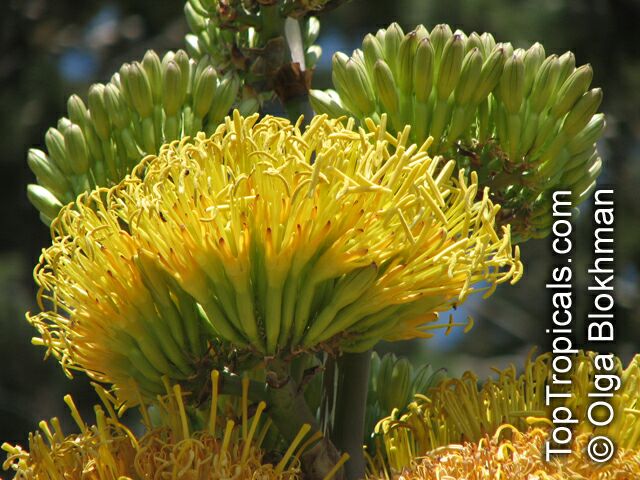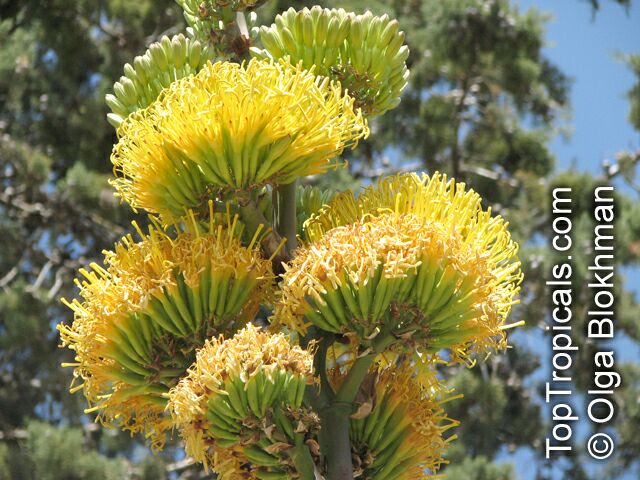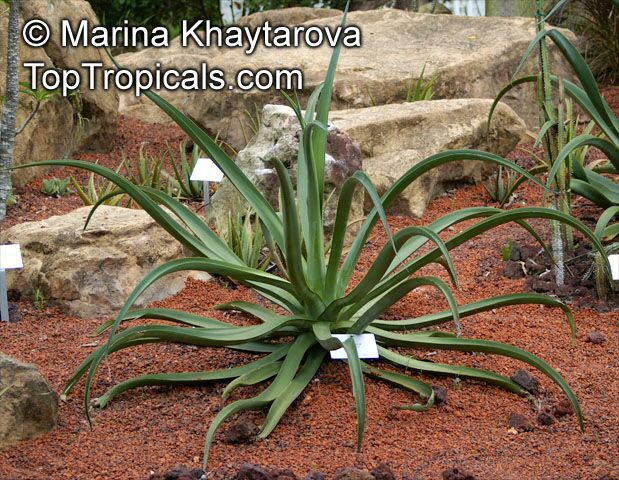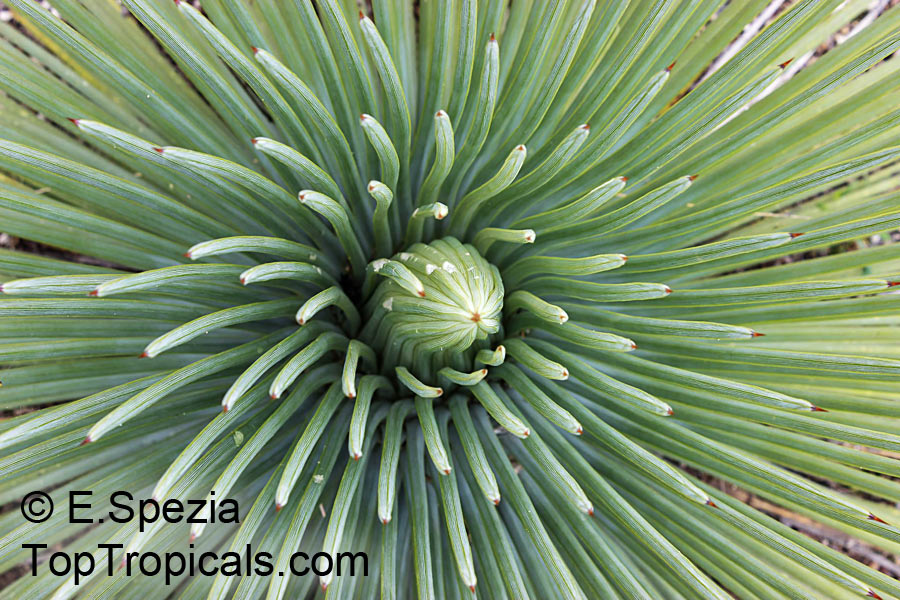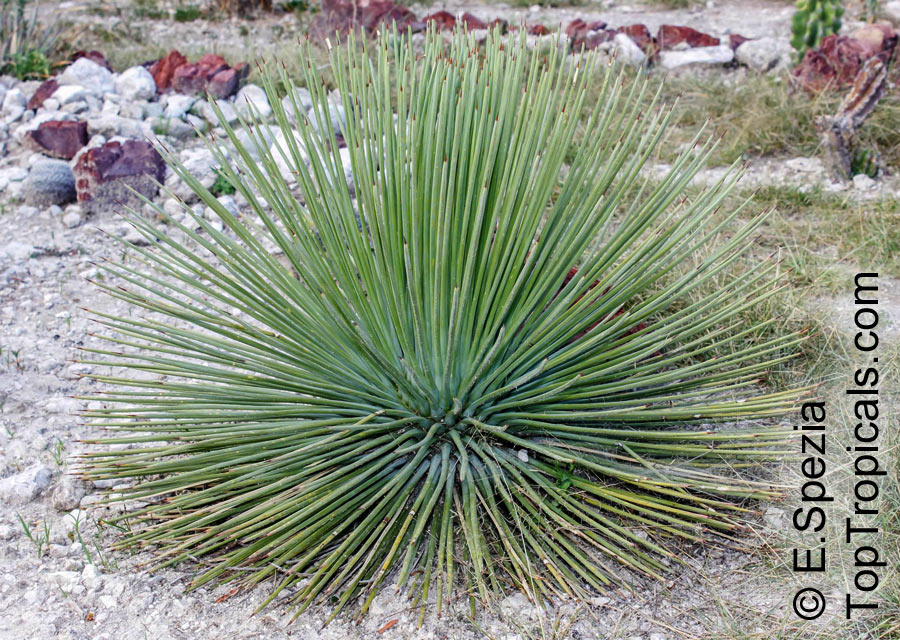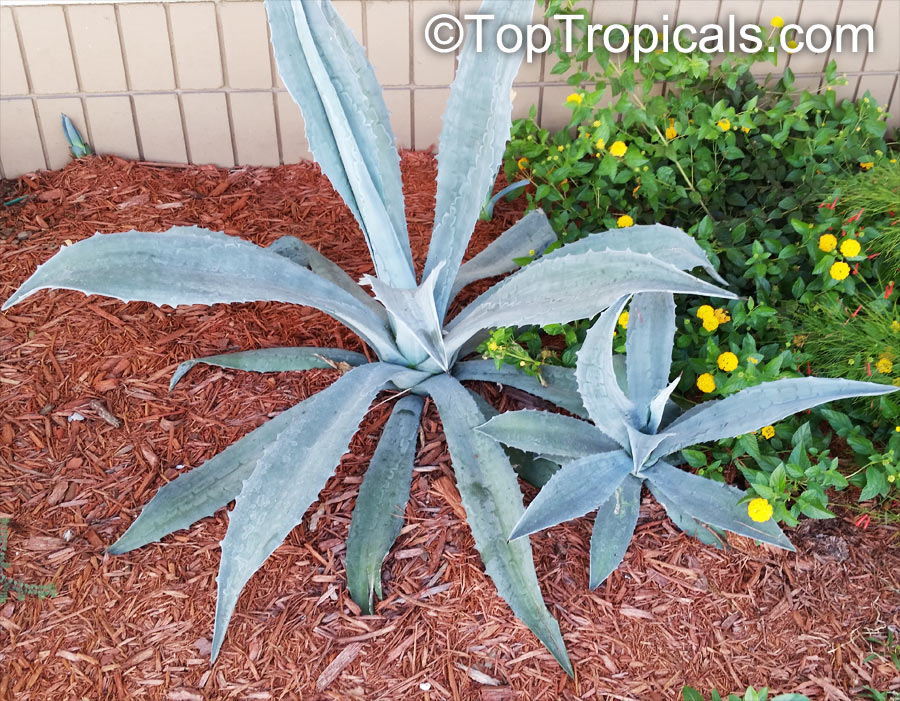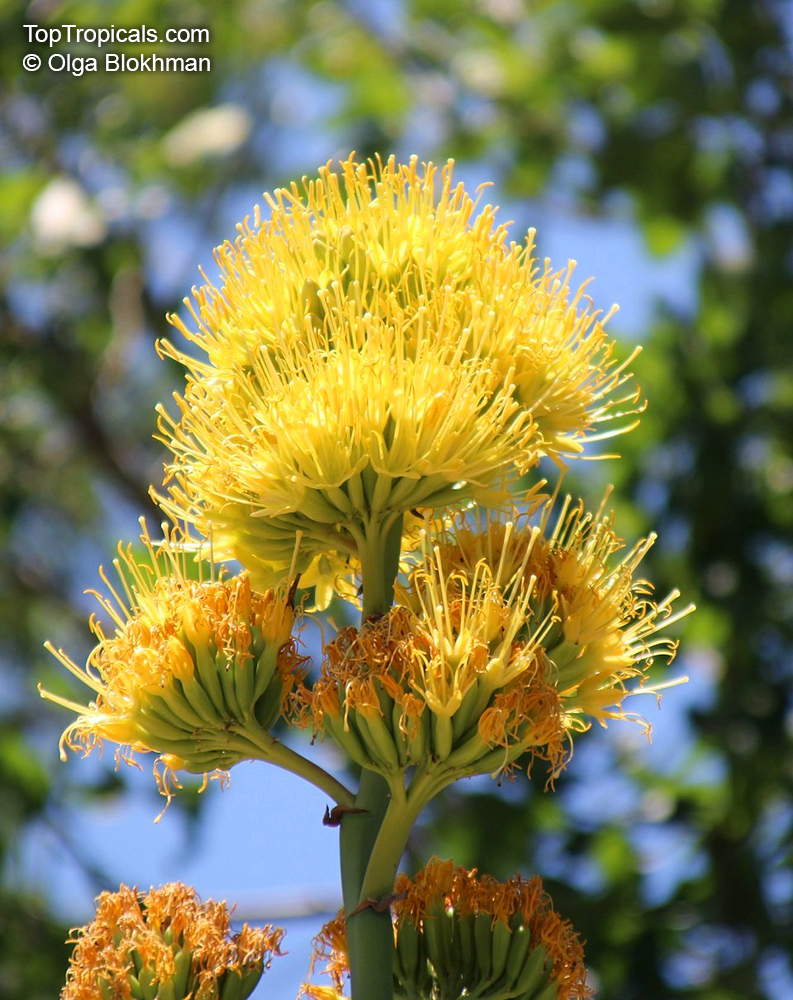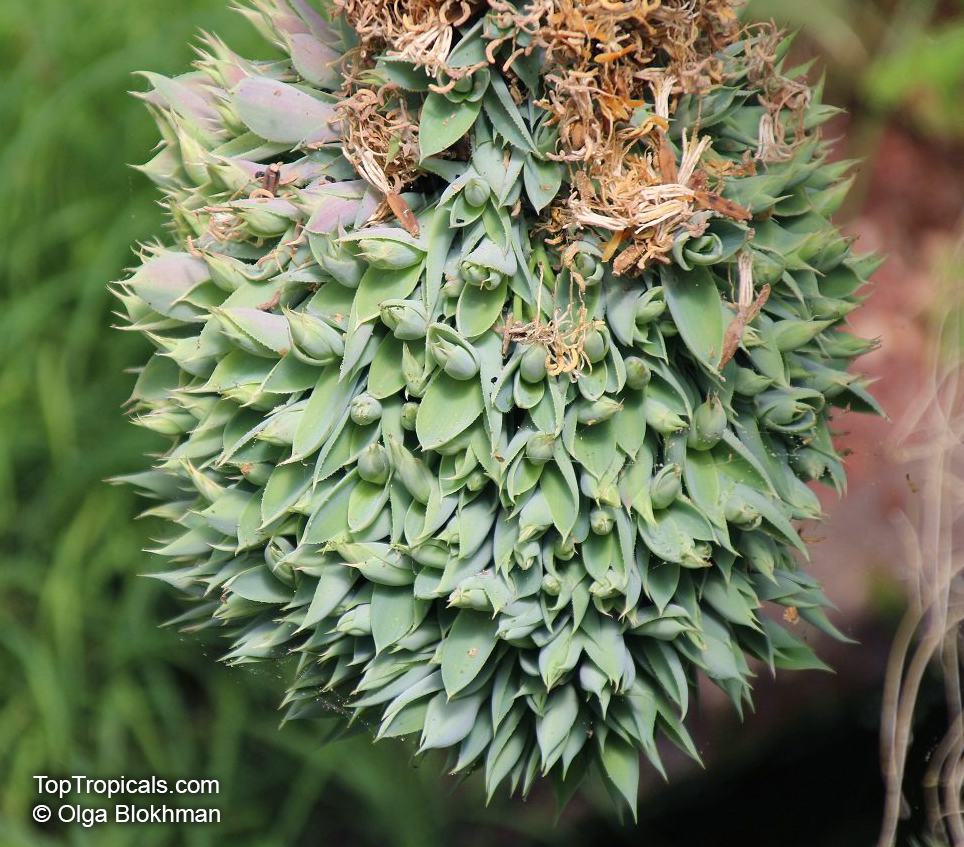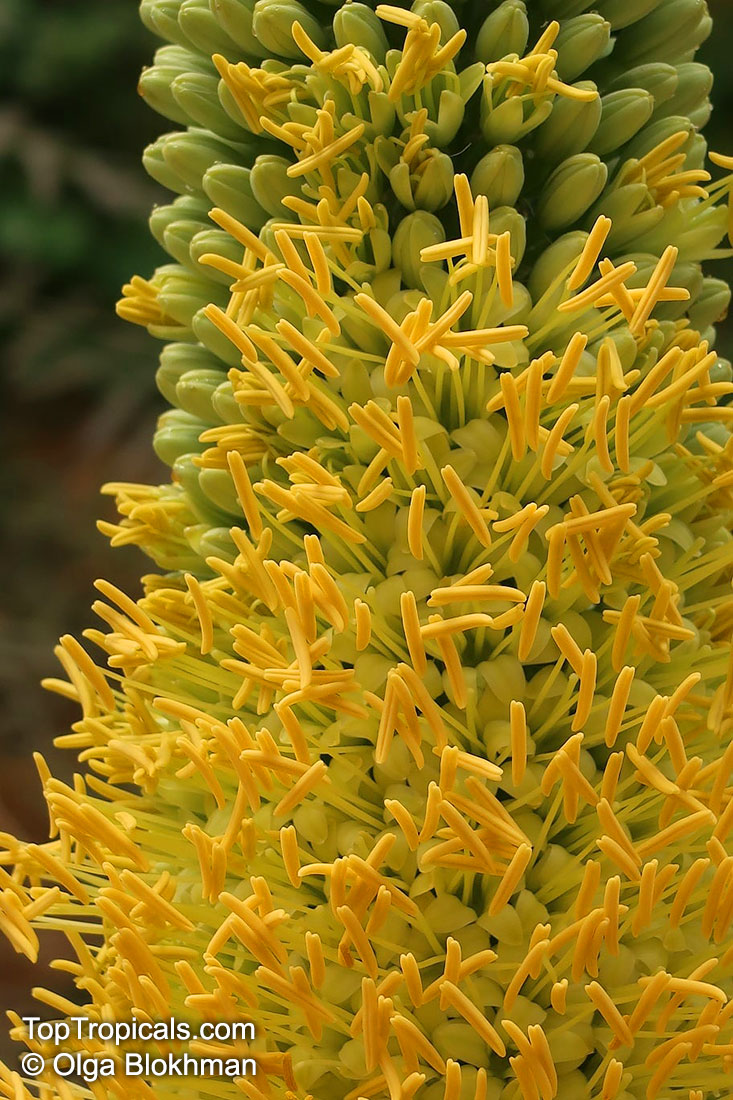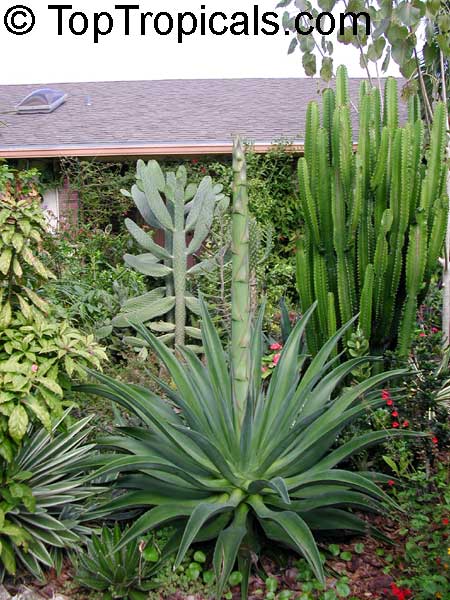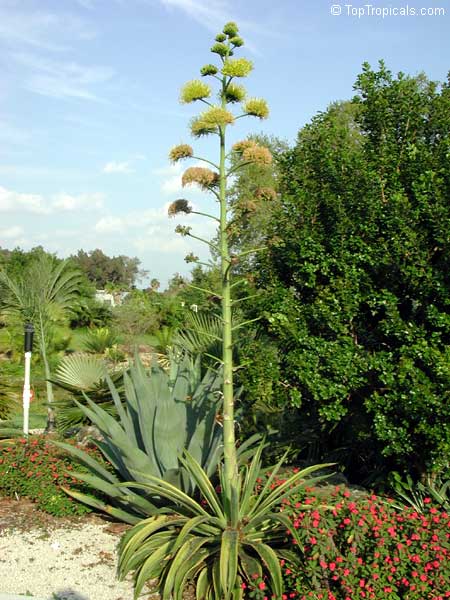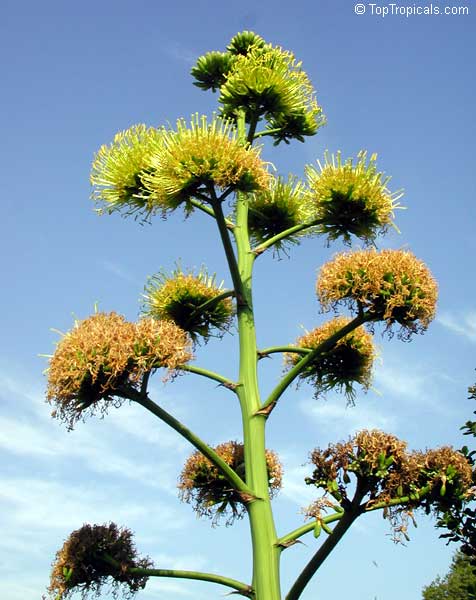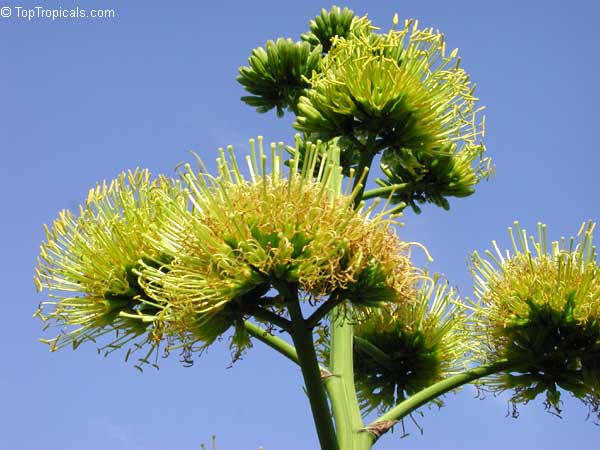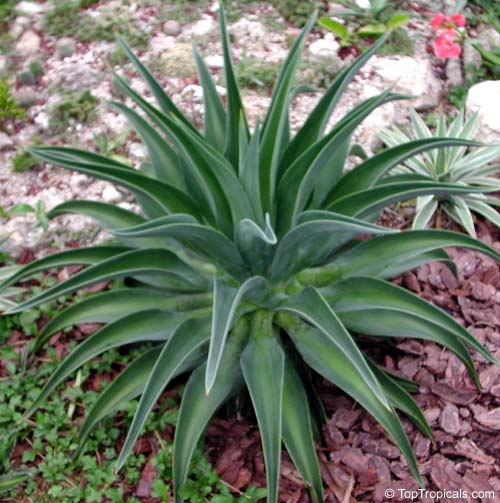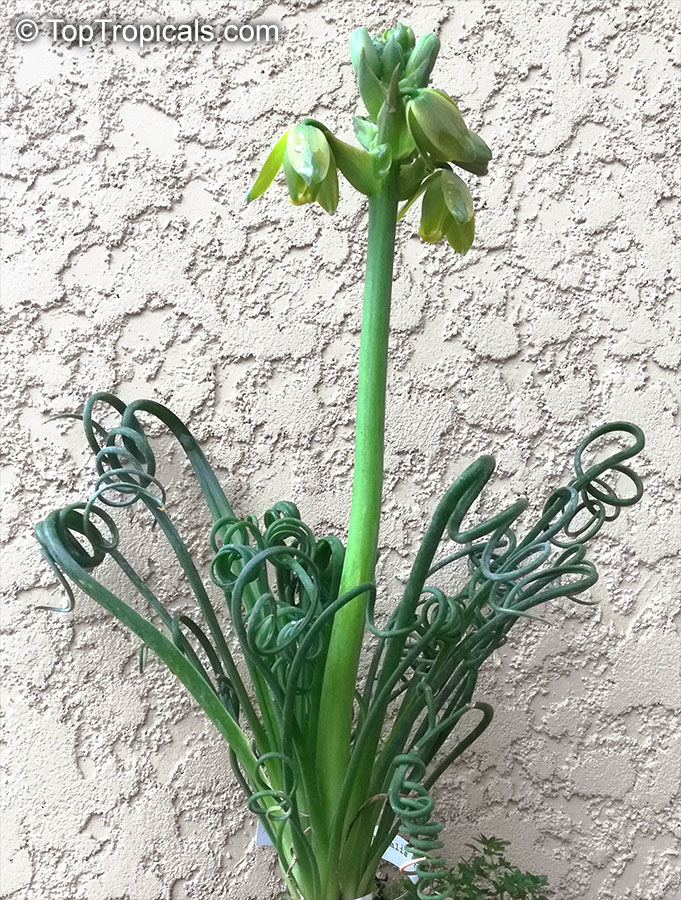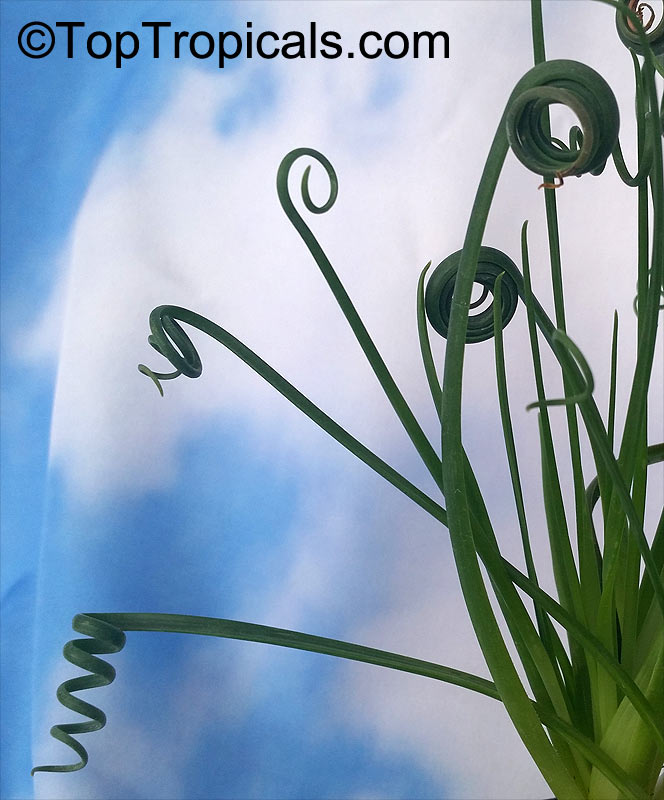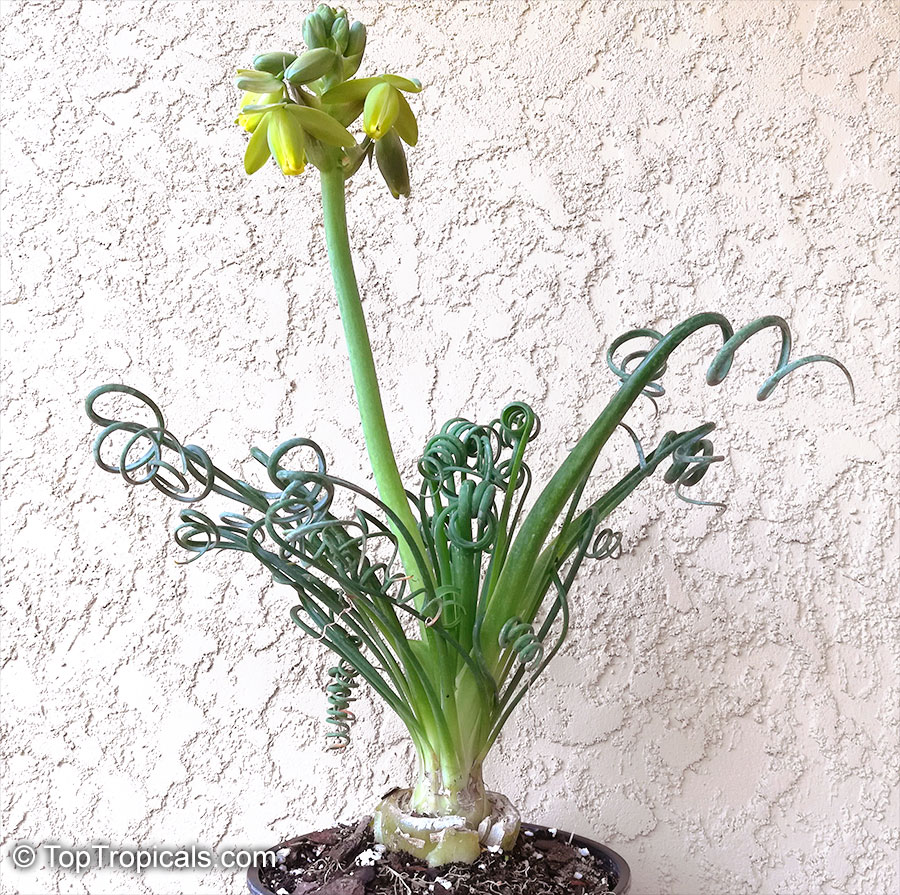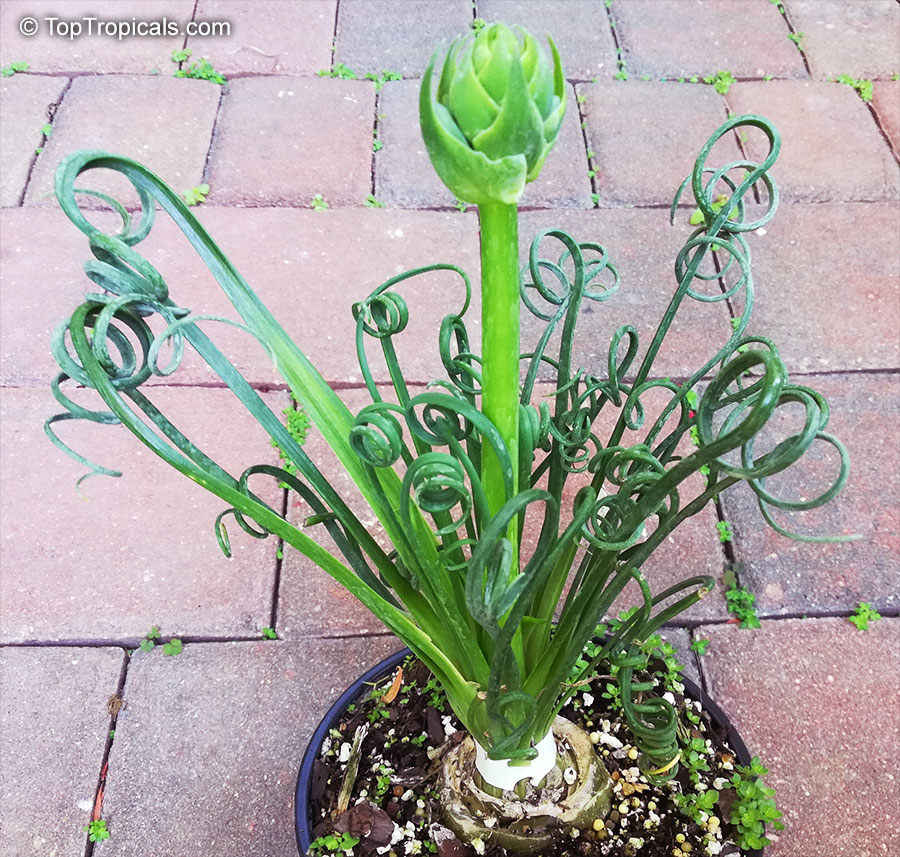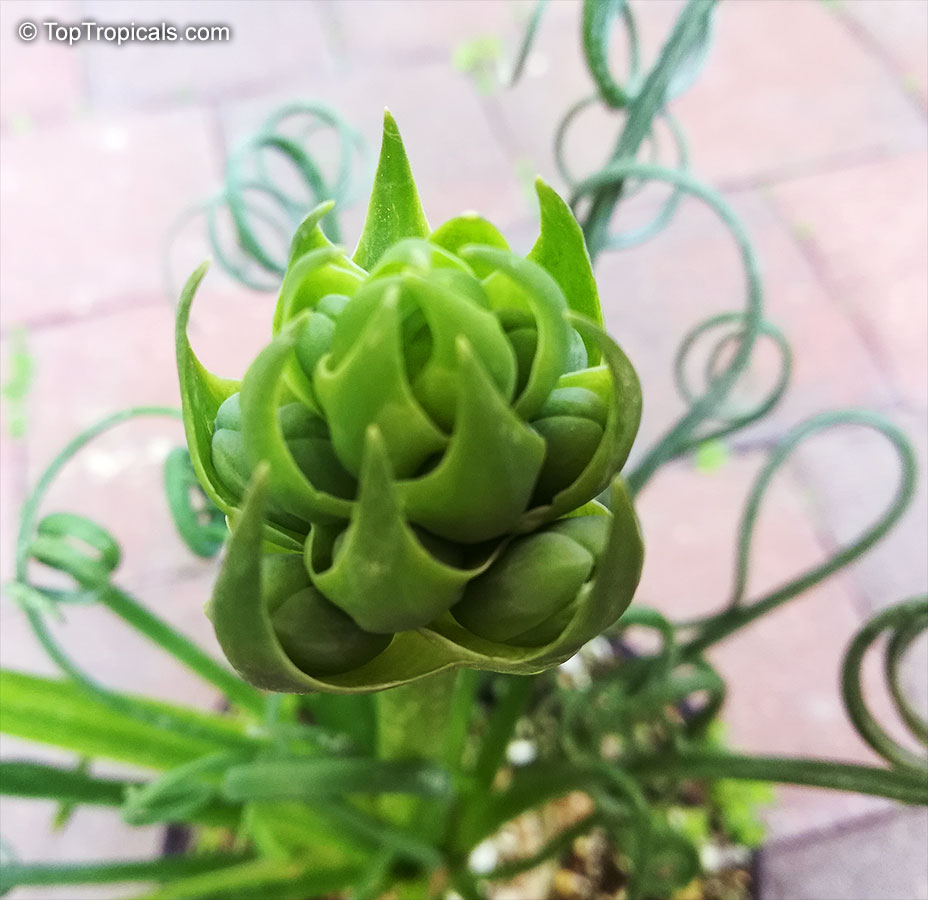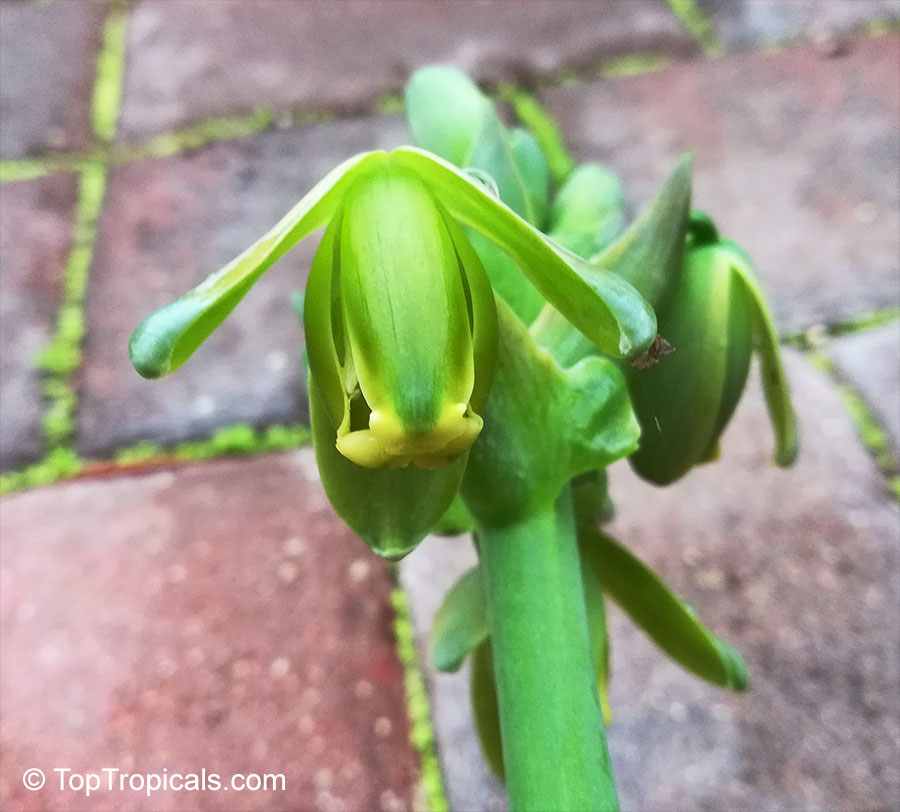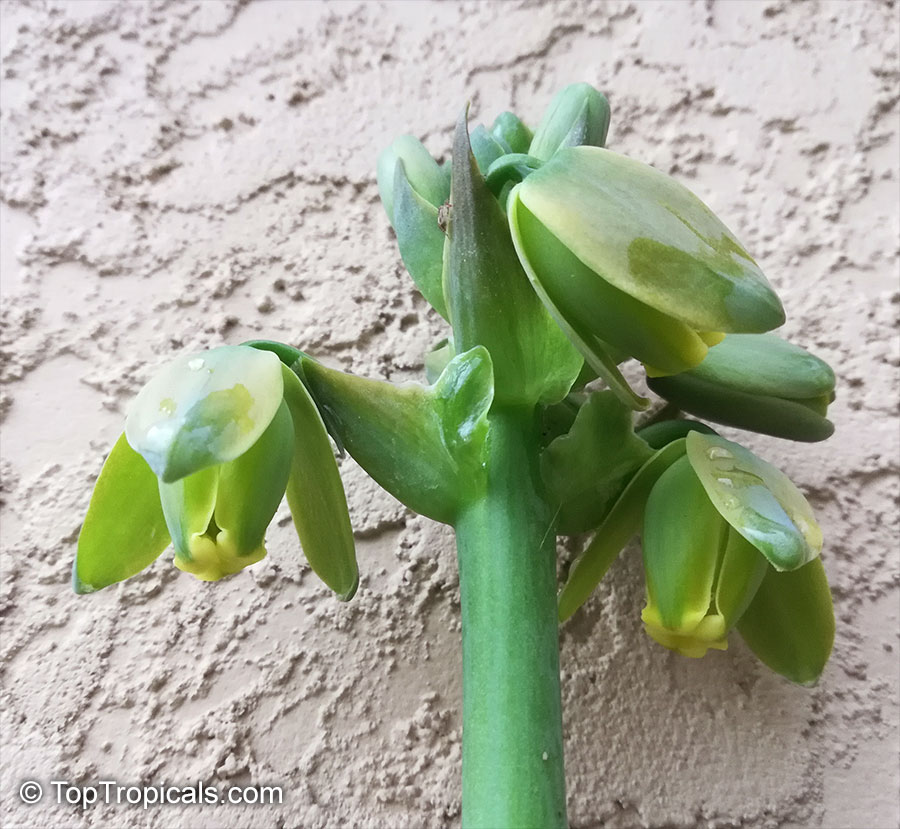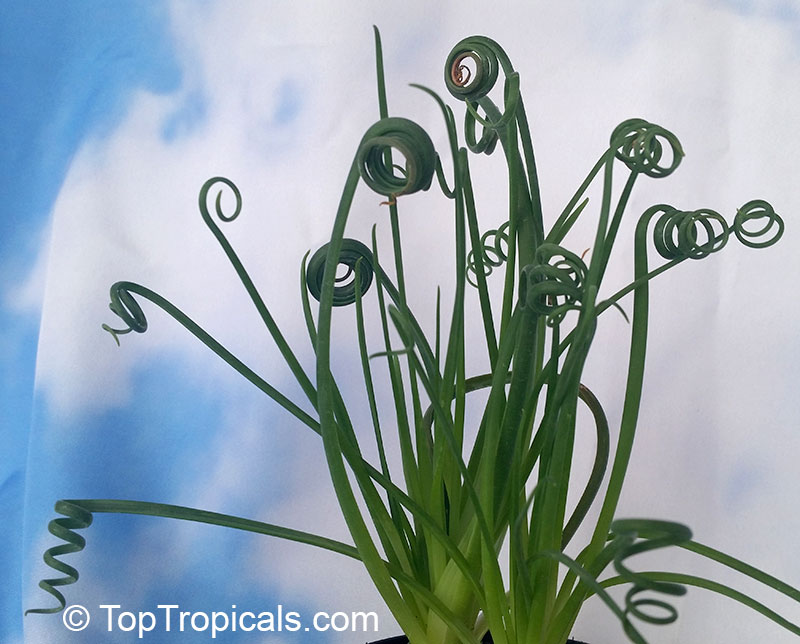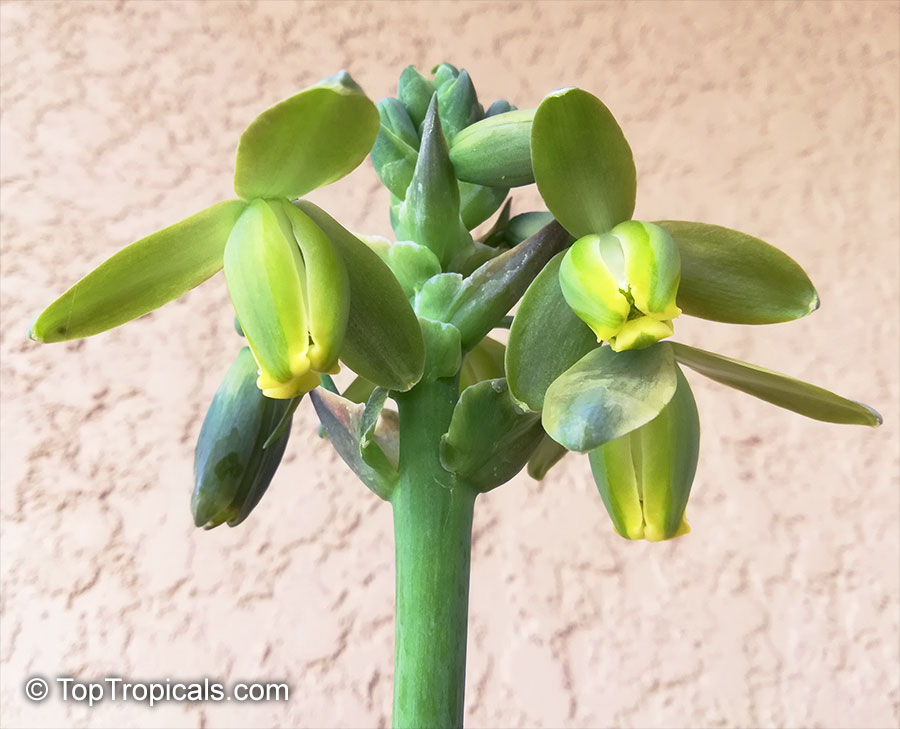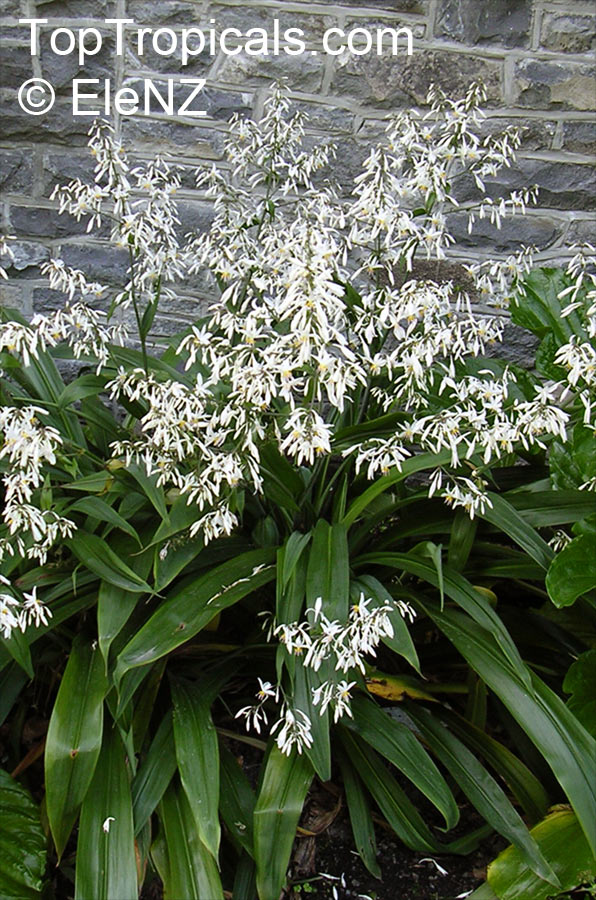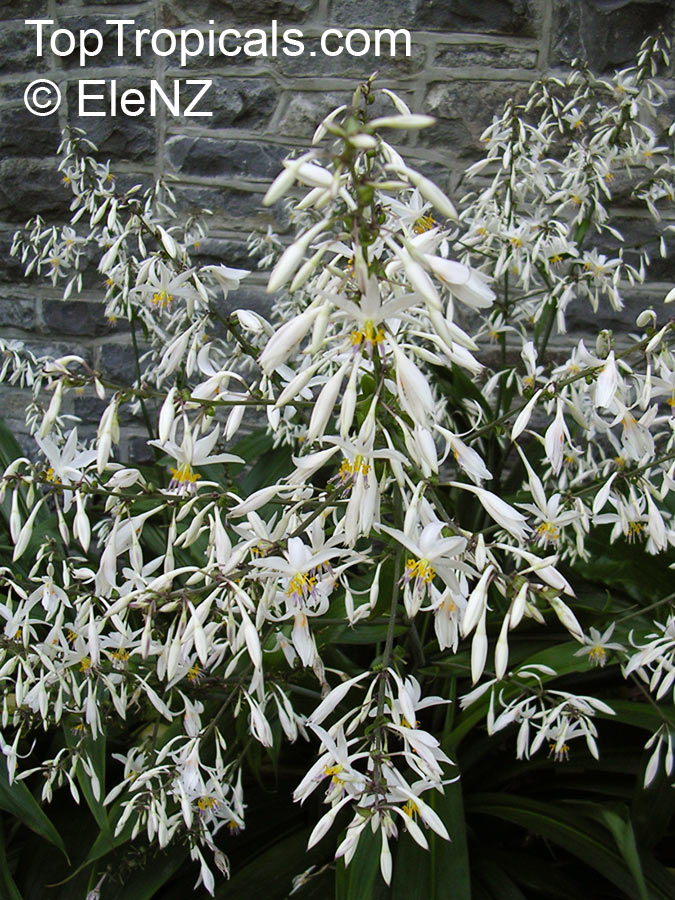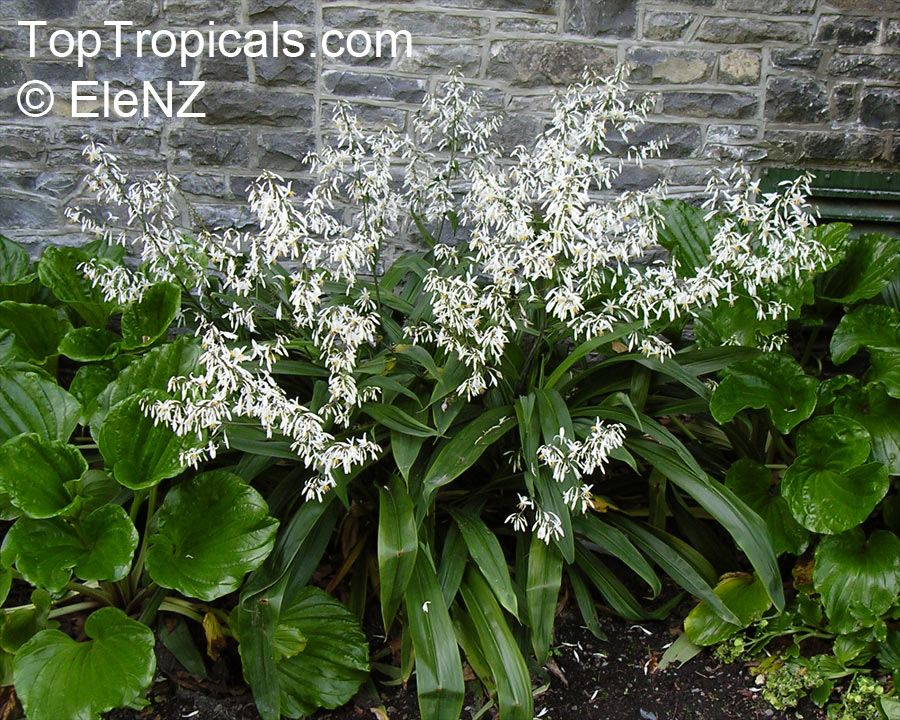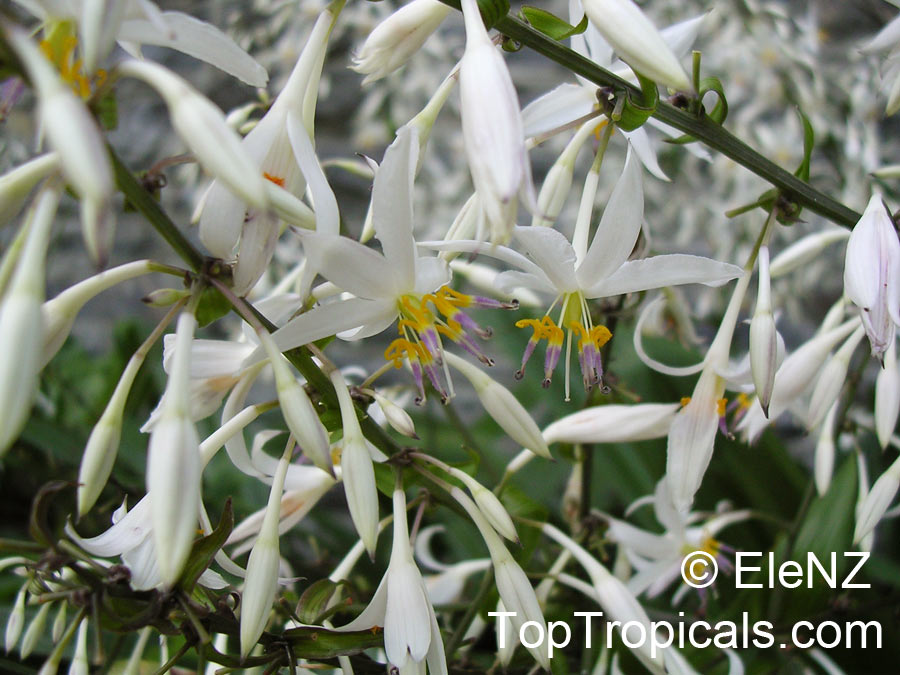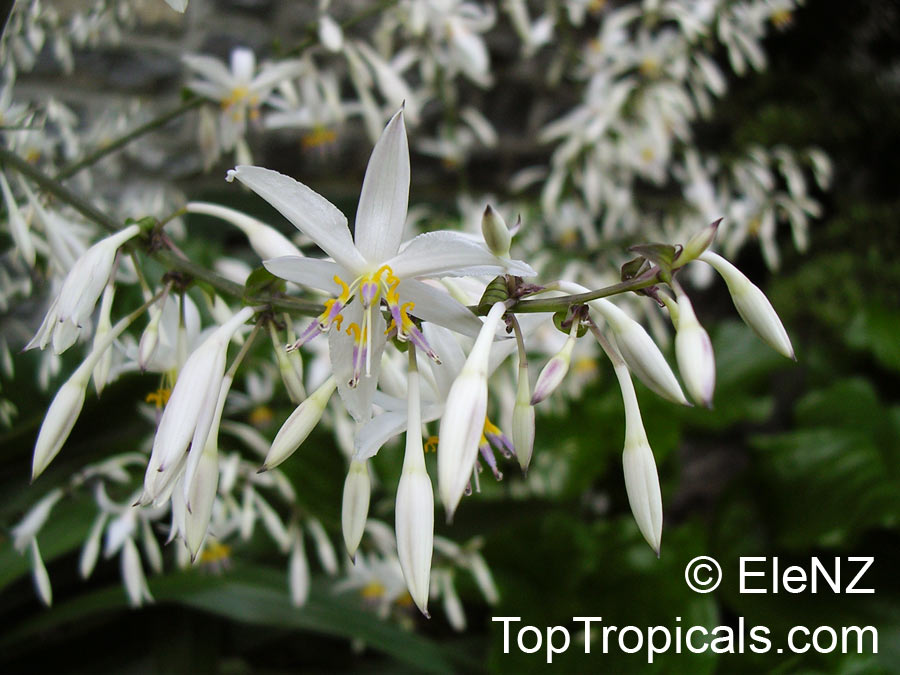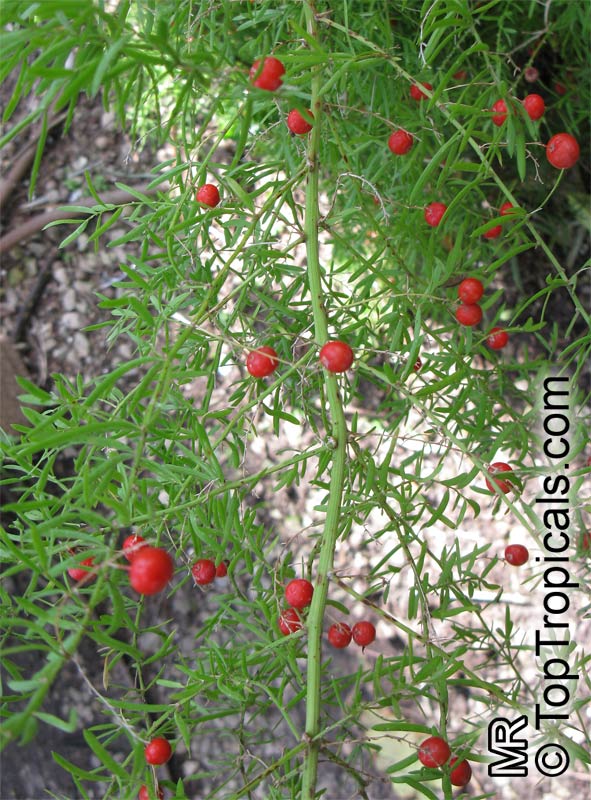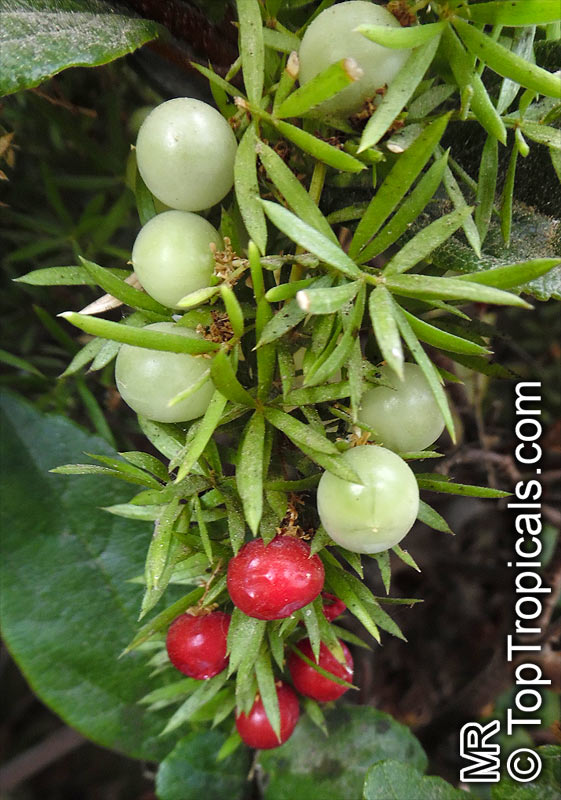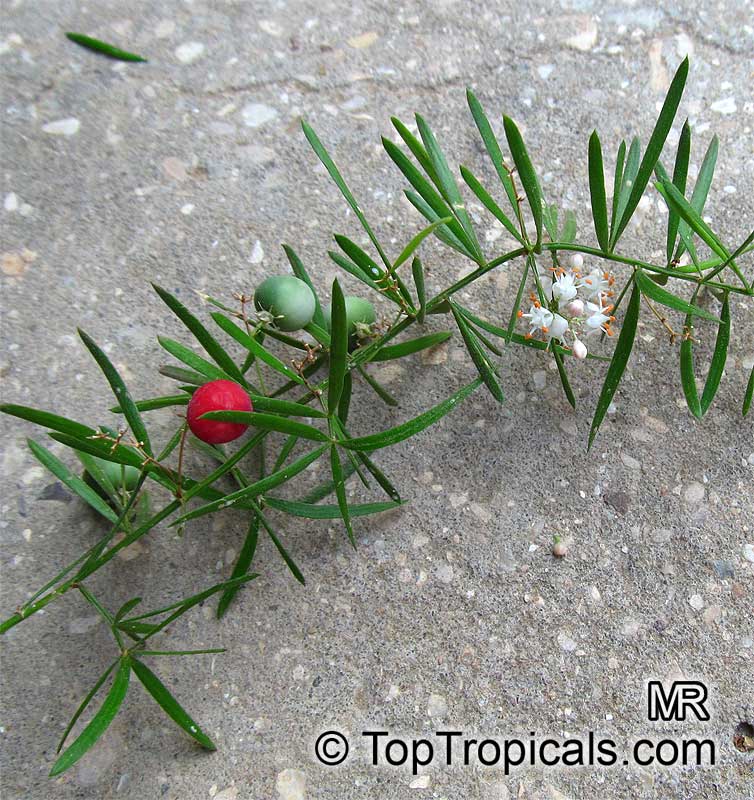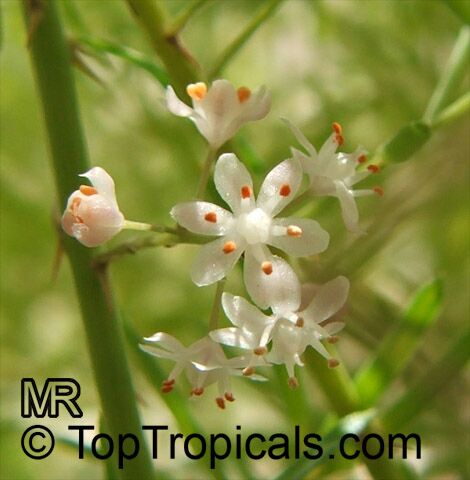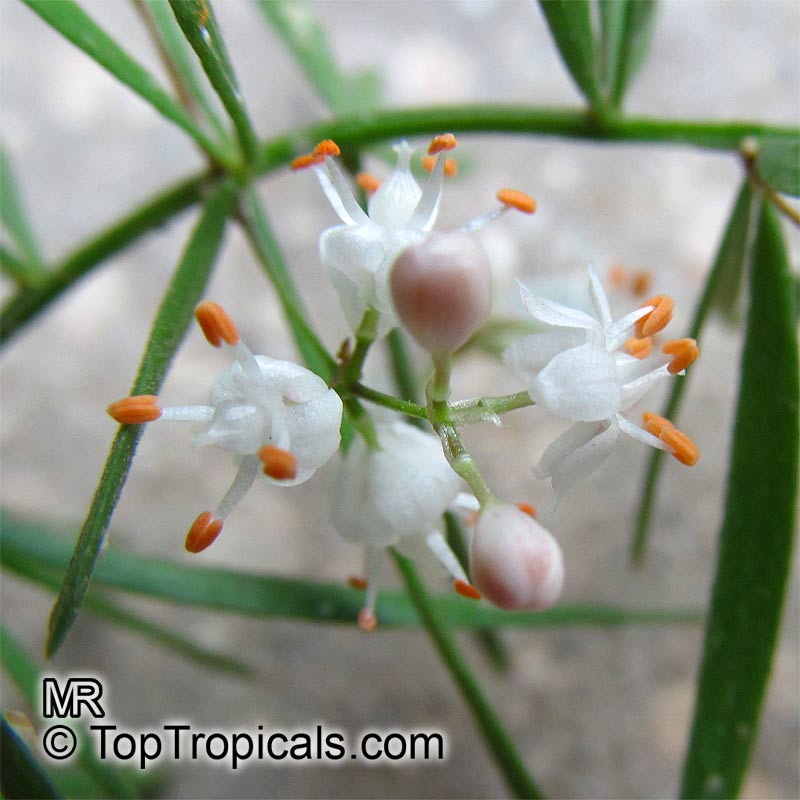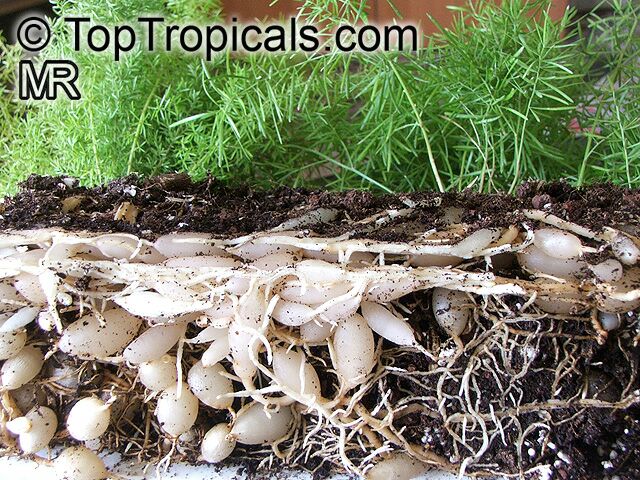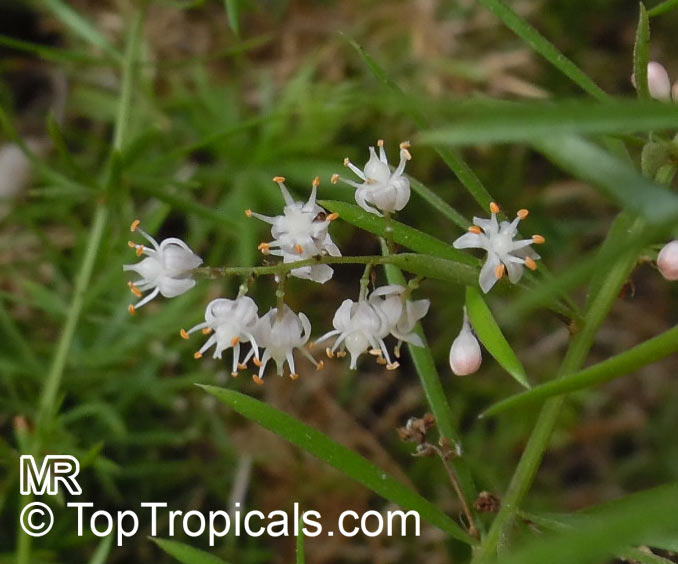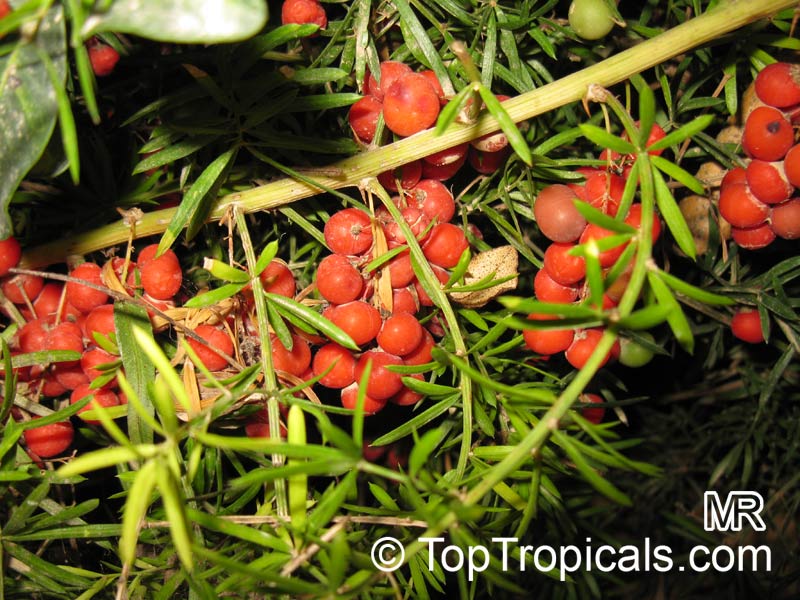Asparagaceae - Botanical Family
Top Tropicals Plant Encyclopedia
| Number of plants found: 77 | Next | 
|
Go to page: | 1 | 2 | 3 | 4 | 5 | Last |
Botanical name: Agave americana
Common name: Century plant
Family: Asparagaceae (Formerly:Agavaceae / Amaryllidaceae)
Subfamily: Agavoideae
Origin: Mexican highlands






Agave americana, commonly known as the century plant, is a striking succulent renowned for its dramatic, spiky leaves and towering flower stalk that can reach heights of up to 30 feet. Native to Mexico, this hardy plant is celebrated for its adaptability to arid environments and its ability to produce a spectacular bloom just once in its lifetime, typically after several decades. Its versatility extends beyond ornamental use, as it has been traditionally utilized for its fibers, sweet sap, and medicinal properties.
The genus of more than 200 species of rosette-forming, mostly monocarpic, or sometimes perennial succulents from the desert and mountainous regions of the Americas. The most popular Agave is the Century Plant, so-called because of the mistaken belief that it flowers only once every 100 years. There are two colorful varietis - Agava americana marginata (green leaves edged with yellow) and Agava americana mediopicta (cream leaves edged with green). These plants produce leaves 3 or 4 feet long, and their size makes them unsuitable for an ordinary room. In winter watering this plant can be done once every 1-2 months, there is no need to mist the leaves.
Recommended Fertilizer: SUNSHINE Robusta - Rapid Growth Booster
This item can not be shipped. Pick up only. We can provide local delivery around Ft. Myers or Sebring, Florida. Contact us for an estimate. Non-pickup orders are subject to restocking fees.
Last one
Botanical names: Agave amica, Polianthes tuberosa
Common name: Tuberose
Family: Asparagaceae (Formerly:Agavaceae / Amaryllidaceae)
Subfamily: Agavoideae
Origin: Mexico









The Tuberose grows in elongated spikes up to 45 cm (18 in) long that produce clusters of fragrant waxy white flowers that bloom from the bottom towards the top of the spike. It has long, bright green leaves clustered at the base of the plant and smaller, clasping leaves along the stem.
Tuberose may grow wild in Mexico and surrounding countries, but the cultivation of tuberose is usually in Morocco, the Comores Islands, France, Hawaii, South Africa, India, and China.
Long-lasting as a cut flower in water (with lots of changes.)Most flowers begin to lose their scent when they are picked. Not so with tuberose, like jasmine, the heady floral scent continues to produce itself. In Ayurvedic medicine, attars are held in high esteem not only for their exquisite fragrance, but their healing properties. Tuberose is known to improve one's capacity for emotional depth.
Botanical name: Agave angustifolia
Common name: Agave Maguey Lechugilla
Cultivar: Marginata
Family: Asparagaceae (Formerly:Agavaceae / Amaryllidaceae)
Subfamily: Agavoideae
Origin: Mexico





Agave angustifolia Marginata, more commonly known as the Agave Maguey Lechugilla, is a small shrub native to Mexico. This spiny or thorny succulent is popular for its ornamental foliage and grows between 2-5 feet in full sun, and in dry conditions. This is a hardy succulent, suitable for use in xeriscaping and is grown in USDA zone 9-11.
Agave Maguey Lechugilla, like most succulents, will produce best results in well-draining soil. Watering should be done sparingly and with care, as too much water can lead to the plant's death. When water is necessary, it should be done deep and slow. During the winter months, when growth is at a minimum, water should be reduced even more.
In cold regions, where freezing temperatures are expected, the best way to grow Agave Maguey Lechugilla is in a pot. Containers should also ensure adequate drainage, and during the hot summer months should be moved to a sunny spot outdoors and brought inside during winter.
Overall, the Agave Maguey Lechugilla is an attractive and hardy plant. When growing conditions are provided and cared for, the plant will grow to a maximum of 5 feet. Foliage is normally very ornamental, and is sure to be a winning addition to any xeriscape or cacti garden.
Botanical name: Agave attenuata
Common names: Fox Tail Agave, Swan's Neck Agave
Family: Asparagaceae (Formerly:Agavaceae / Amaryllidaceae)
Subfamily: Agavoideae
Origin: Mexico






Native to the tropical climates of Mexico, Agave attenuata (Fox Tail Agave) is a small shrub that grows between 2 - 5 feet. It prefers full sun to light shade, and requires moderate wateringthough it doesn't tolerate overly wet conditions. It prefers to grow in dry, well-draining soils. The plant is renowned for its light grey-green wavy-edged leaves with a hint of ivory powder. Fox Tail Agave's short, flowering stems emerge from the heart of the plant in summer or fall and produce yellow or orange clusters of fragrant flowers. The spiny or thorny leaves help to deter browsing animals and offer a unique addition to gardens and landscapes.
Agave attenuata is an excellent home garden choice because it is low-maintenance, drought tolerant and can survive in a range of conditions. In addition, it can be grown in USDA Hardiness Zones 9-11 with minimal care. However, if you are located in a colder region and plan to grow this plant in a pot, you should move it indoors during the winter months to protect it from the frost. As long as you ensure your Fox Tail Agave has plenty of sun and water it should thrive in your garden or home.
Botanical name: Agave neglecta
Common name: Small agave
Family: Asparagaceae (Formerly:Agavaceae / Amaryllidaceae)
Origin: Florida





Agave neglecta has been regarded as endemic to Florida, but is now treated as the same species as the Mexican Agave weberi and only naturalized in Florida through human agency.
Botanical name: Agave sp.
Common name: Agave
Family: Asparagaceae (Formerly:Agavaceae / Amaryllidaceae)
Subfamily: Agavoideae
Origin: Mexico
Hardiness: 20°F







Agaves are rosette plants that live for many several years before flowering. Each rosette will flower only once, then die. The English common name, Century Plant, is based on the mistaken belief that the plants grow for 100 years before blooming. In fact, some of the smaller species flower when only 3 to 4 years old. The larger species may live for 40 to 50 years before flowering. They may be planted outdoors in mild climates, especially those that are desert and semi-desert; otherwise, they may be grown in a greenhouse and when small as houseplants. In regions with harsh winters, Agaves may be planted outdoors in the summer and brought in during the winter. The sizes of the Agaves vary from 6 inches to 15 feet wide between the species.
Botanical name: Agave tequilana
Common names: Tequila Agave, Century Plant
Family: Asparagaceae (Formerly:Agavaceae / Amaryllidaceae)
Subfamily: Agavoideae
Origin: Mexico






Tequila Agave, Century Plant. Agave tequilana, commonly called blue agave (agave azul) or tequila agave, is an agave plant that is an important economic product of Jalisco, Mexico, due to its role as the base ingredient of tequila, a popular distilled beverage. The high production of sugars, mostly fructose, in the core of the plant is the main characteristic that makes it suitable for the preparation of alcoholic beverages. Great addition to cactus - rock gardens - ethno-botanical collections. Drought-tolerant; suitable for xeriscaping. Grows fairly fast in summer if provided with extra water.
Recommended Fertilizer: SUNSHINE Robusta - Rapid Growth Booster
This item can not be shipped. Pick up only. We can provide local delivery around Ft. Myers or Sebring, Florida. Contact us for an estimate. Non-pickup orders are subject to restocking fees.
Last one
Botanical name: Albuca spiralis
Common names: Frizzle Sizzle, Corkscrew Albuca
Family: Asparagaceae (Formerly:Hyacinthaceae / Liliaceae)
Subfamily: Scilloideae
Origin: South Africa









Albuca spiralis or Frizzle Sizzle, also known as the Corkscrew Albuca, is a unique and easy-to-grow plant native to South Africa. With green onion-like leaves that appear curled, each plant has its own distinct personality. It can reach between 2 to 5 feet tall with a spread of 5 to 10 feet, making it suitable for use as a groundcover or low-growing border. It also looks great in rock walls, perennial beds, and cottage gardens and can even be used for bonsai training.
In the spring, the plant produces spikes of orchid-like chartreuse-yellow flowers that have a light vanilla fragrance. It may occasionally rebloom later in the season. Frizzle Sizzle is hardy in USDA Zone 8-10, or it can be grown as a houseplant in colder regions. Just be sure to bring it indoors if the temperature drops below freezing. To care for this plant, give it lots of sun and well-draining soil, and allow the soil to dry out between waterings, similar to how you would care for a succulent.
Frizzle Sizzle is an ideal plant for home gardens as it is low maintenance and has no pest or disease problems. In colder climates, it can be overwintered indoors on a sunny window sill or allowed to go dormant by stopping watering and storing in a cool, dry location. So if you're looking for a fun and eye-catching plant that's easy to grow, consider adding Frizzle Sizzle to your collection.
Botanical name: Arthropodium cirratum
Common names: Renga Lily, Rock-lily
Family: Asparagaceae (Formerly:Laxmanniaceae)
Subfamily: Lomandroideae
Origin: New Zealand









It is evergreen with small white flowers in early summer. This plant was possibly formerly cultivated for its edible root by the Maoris, the root grows larger under cultivation.
Botanical name: Asparagus aethiopicus
Common names: Asparagus Fern, Foxtail Fern, Sprenger's Asparagus
Family: Asparagaceae (Formerly:Asparagaceae / Hyacinthaceae / Liliaceae)
Subfamily: Asparagoideae
Origin: South Africa







Asparagus aethiopicus has been confused with Asparagus densiflorus, now regarded as a separate species, so that information about A. aethiopicus will often be found under the name A. densiflorus.
| Next |  |
Use link to repeat this search:
https://toptropicals.com/cgi-bin/garden_catalog/cat.cgi?search_op=and&keyword_op=and&language=e&family=Asparagaceae
&number=10&no_change_lang=1&user=tt&sale=1&first=0
